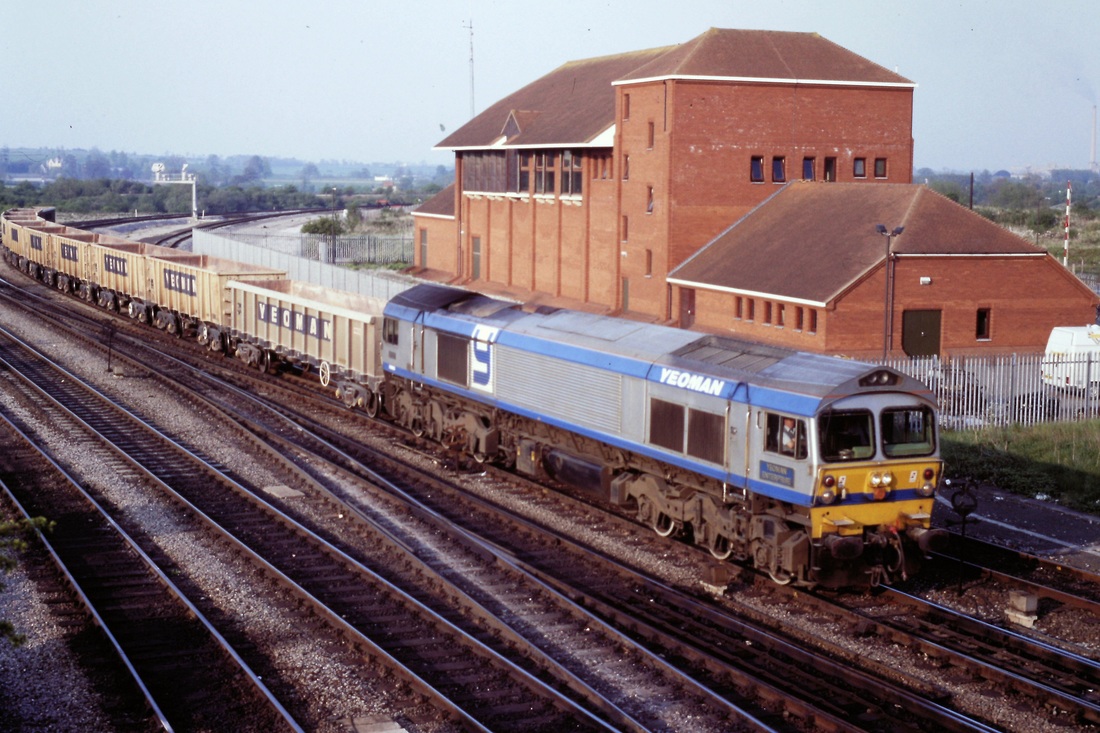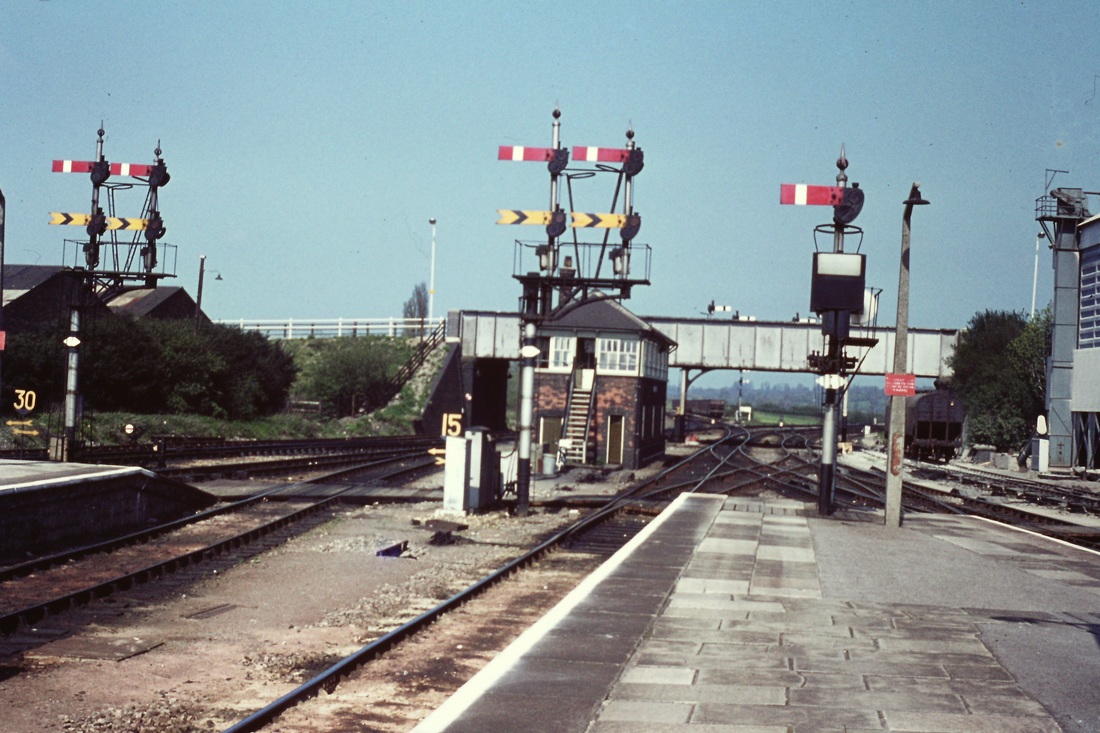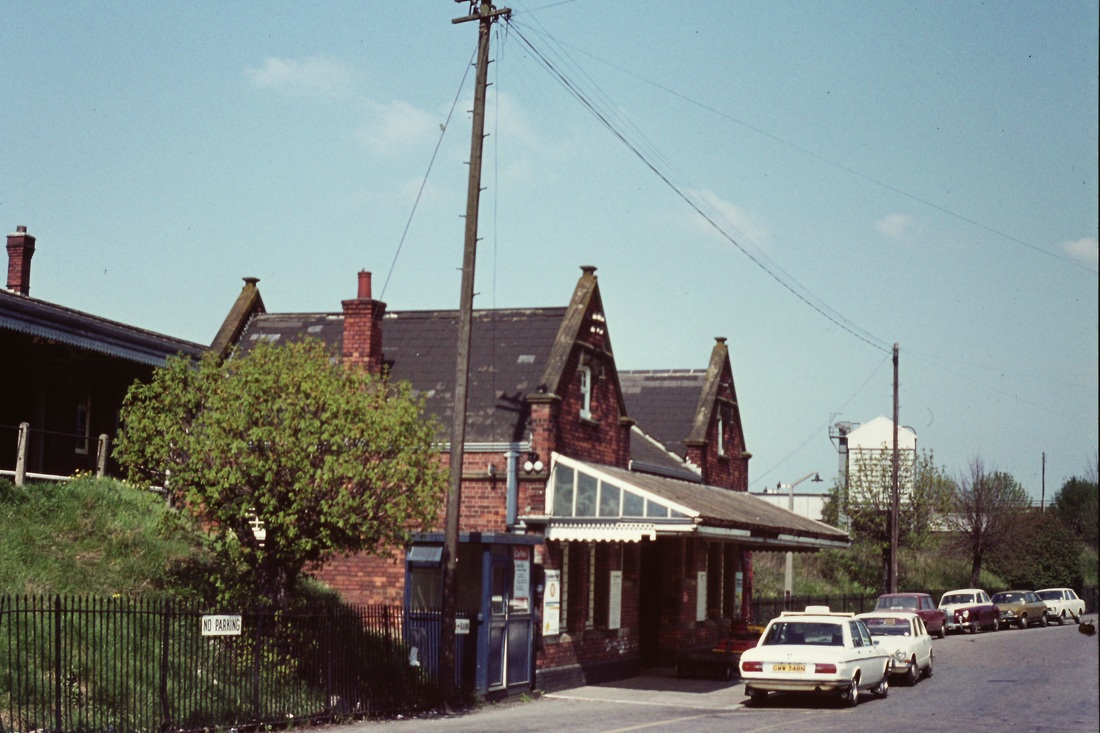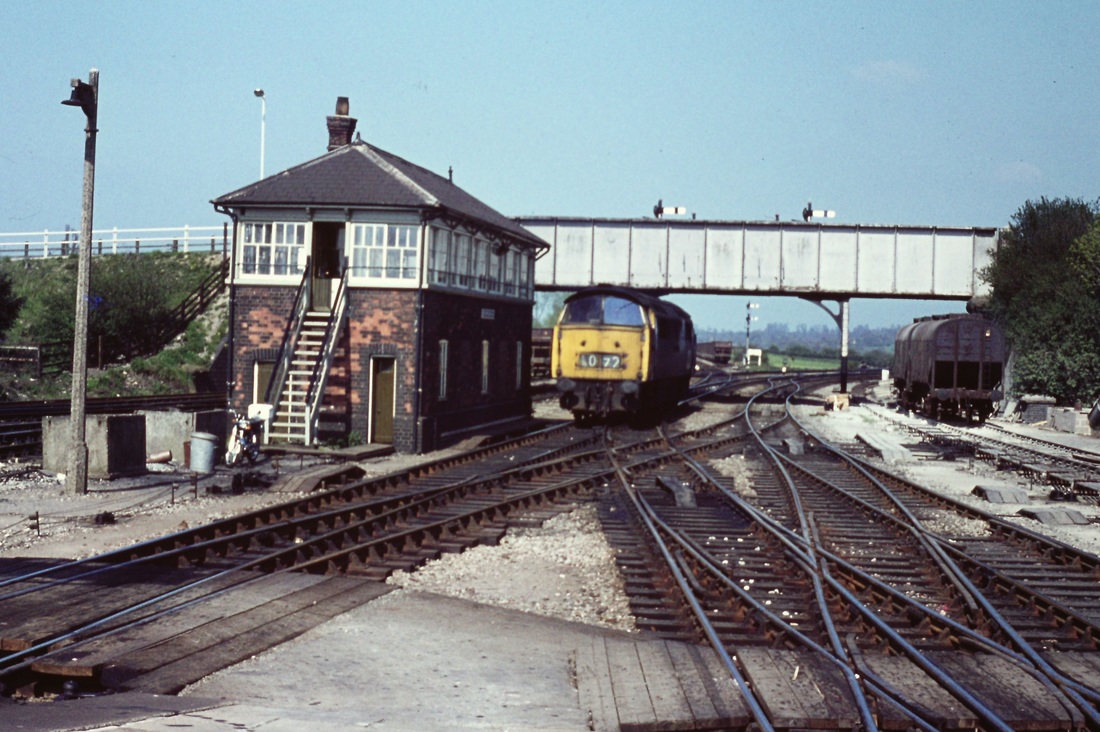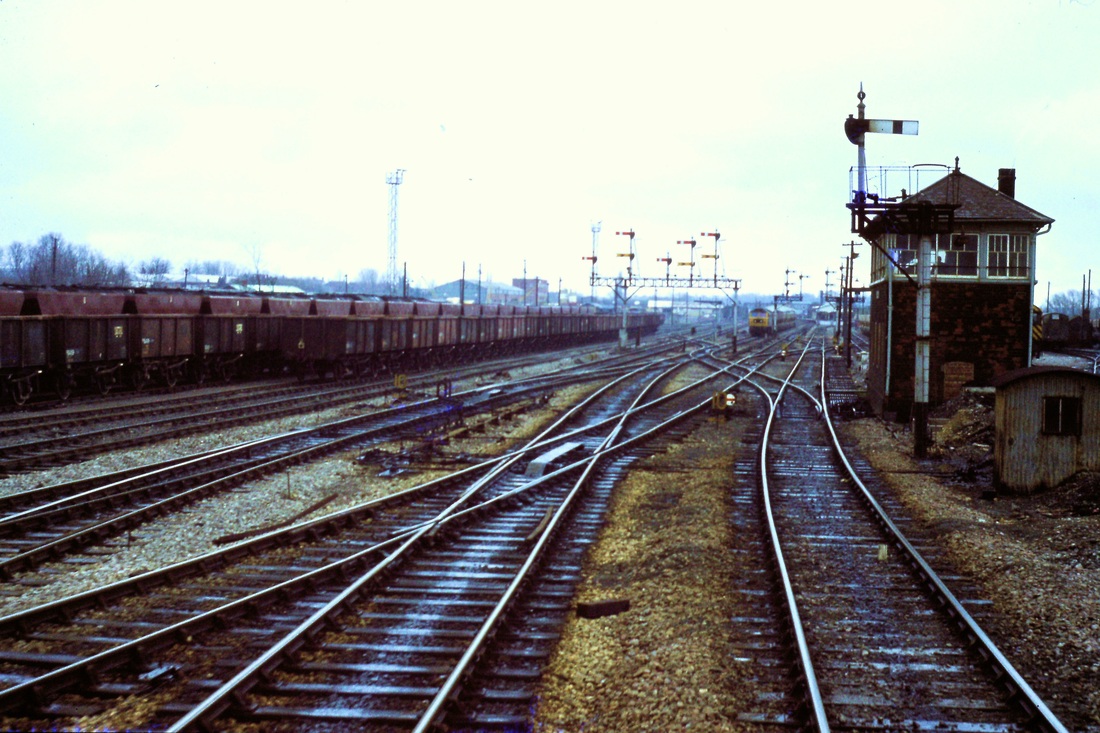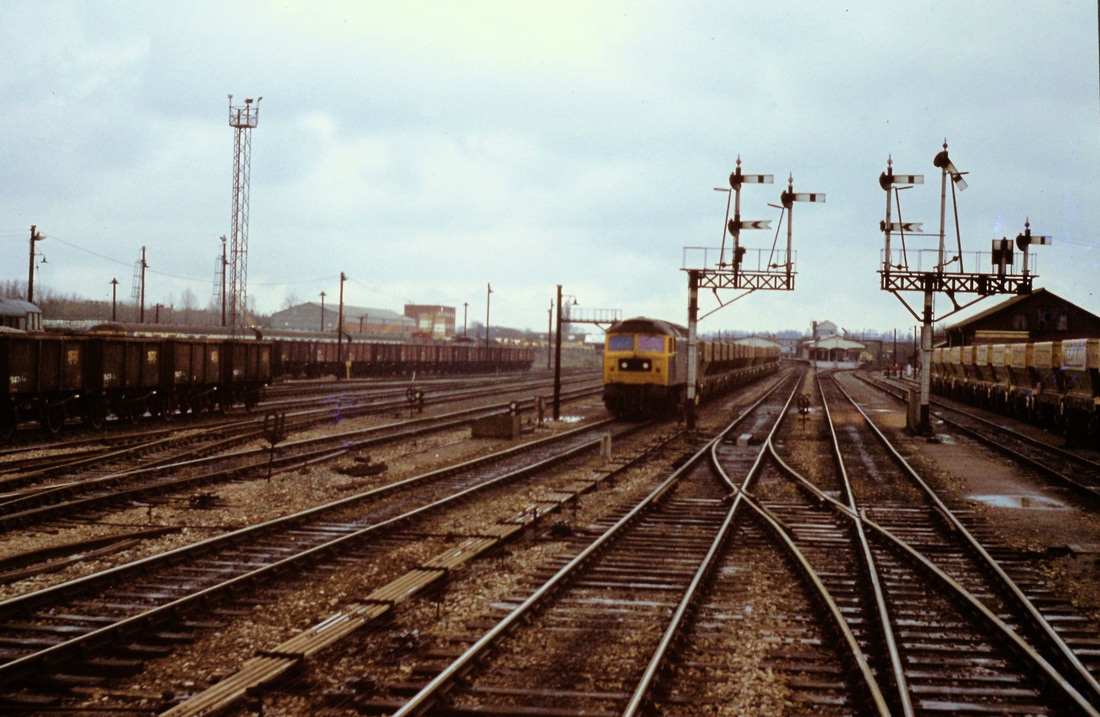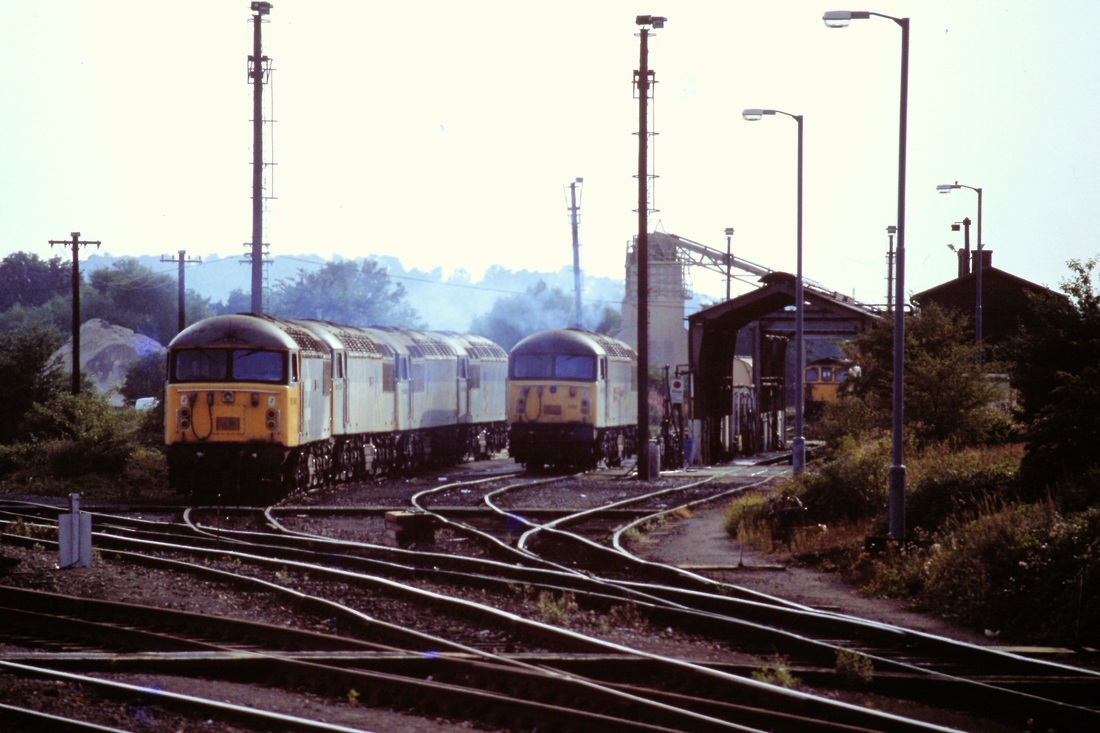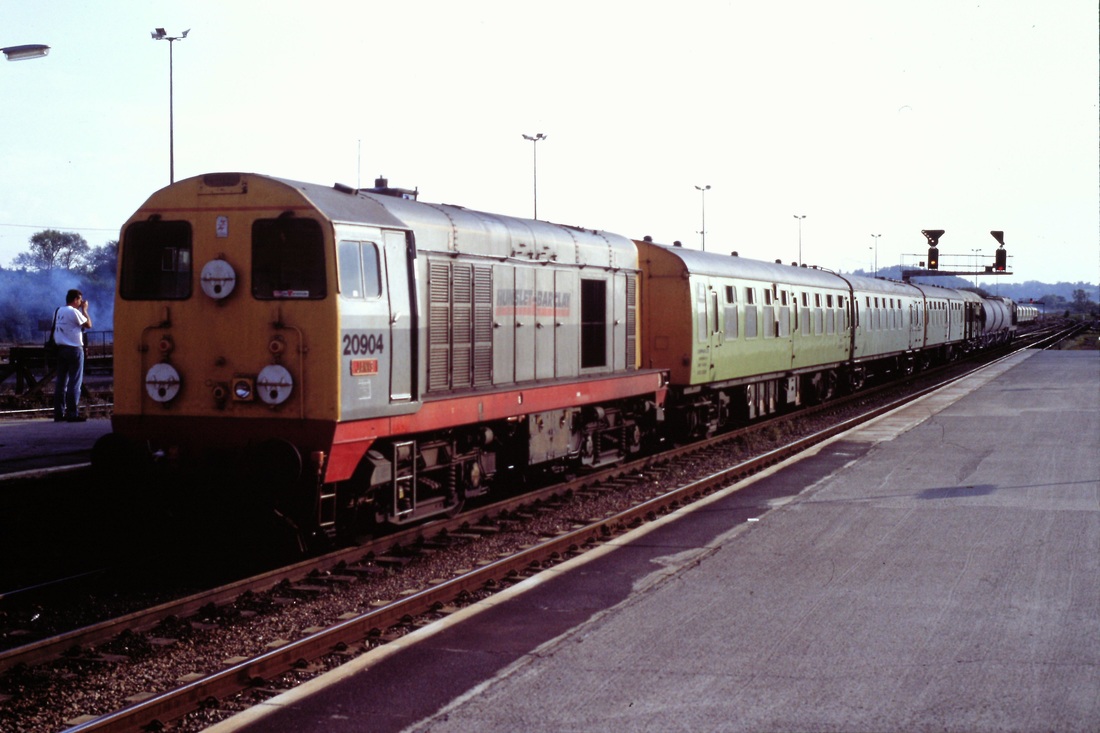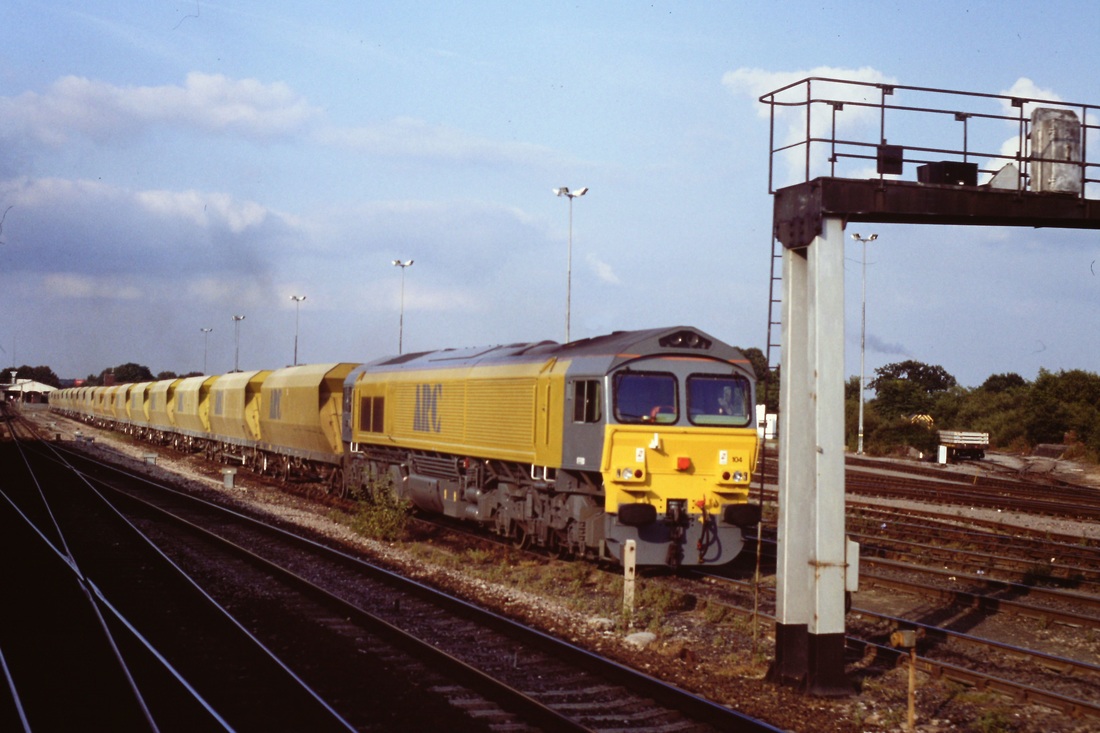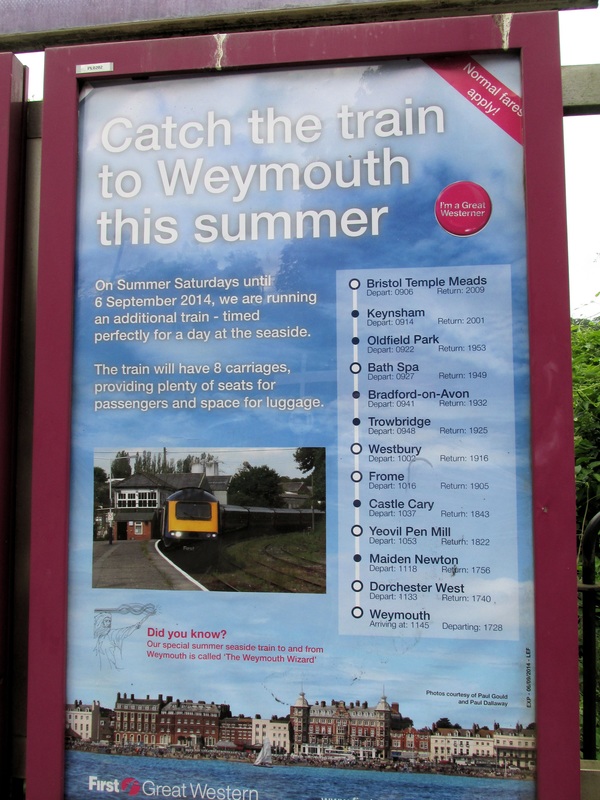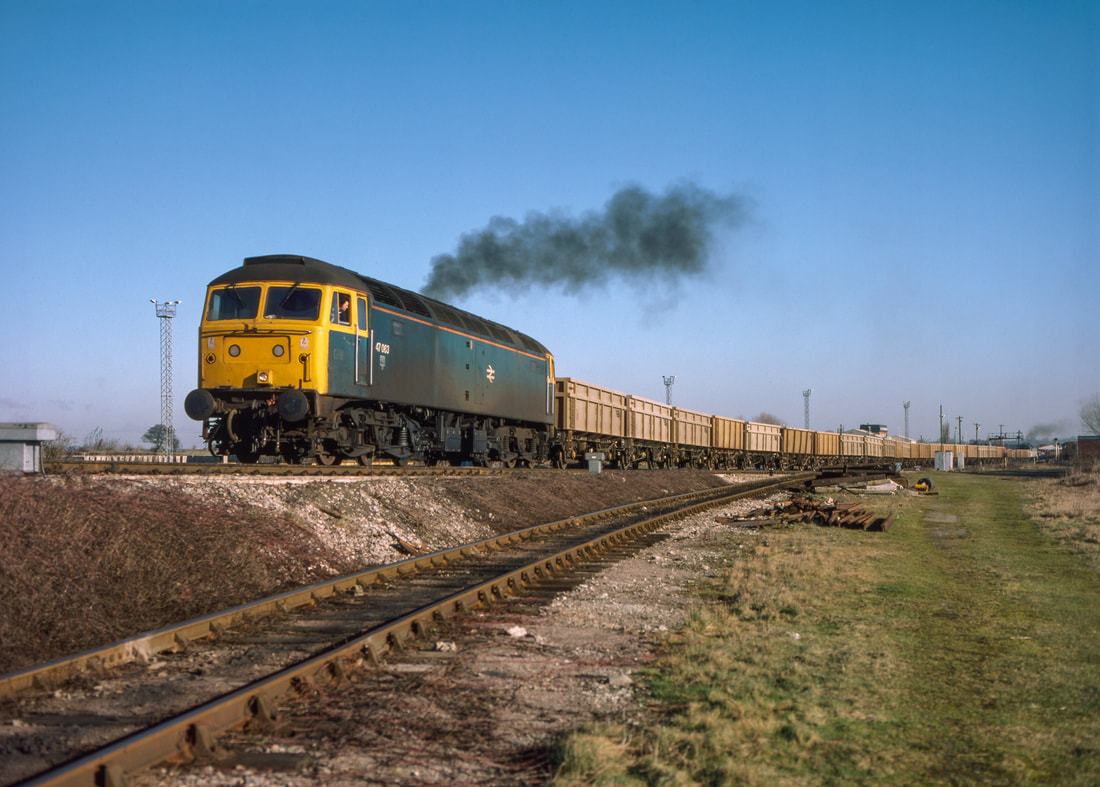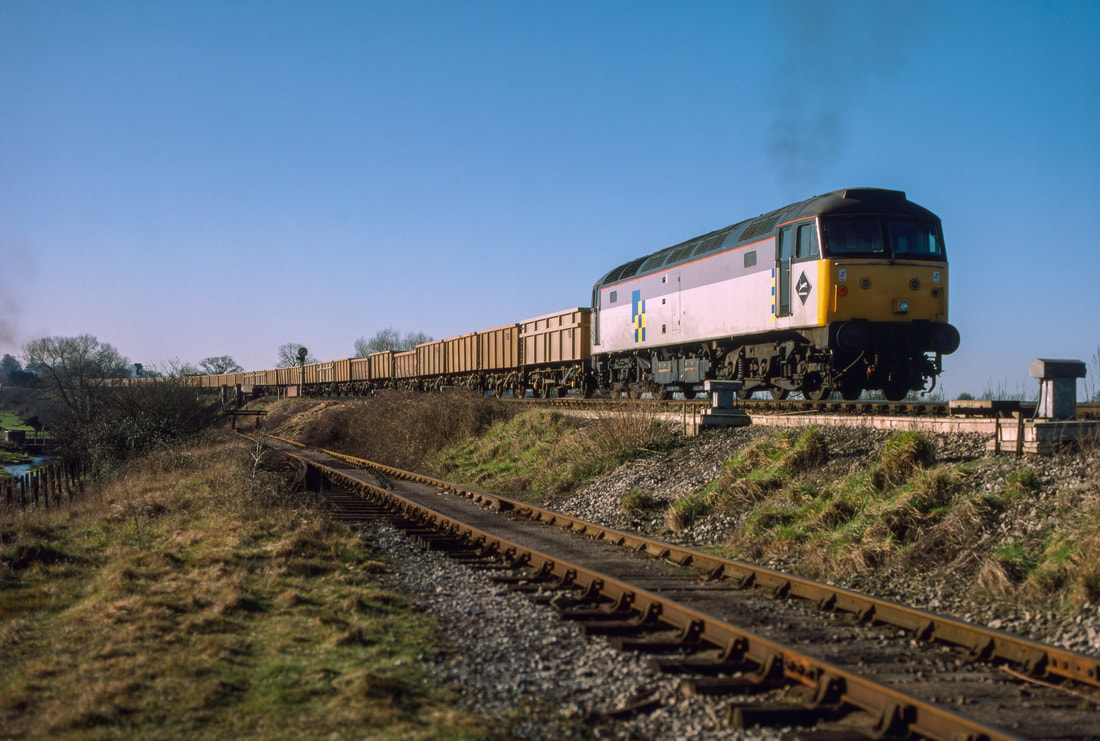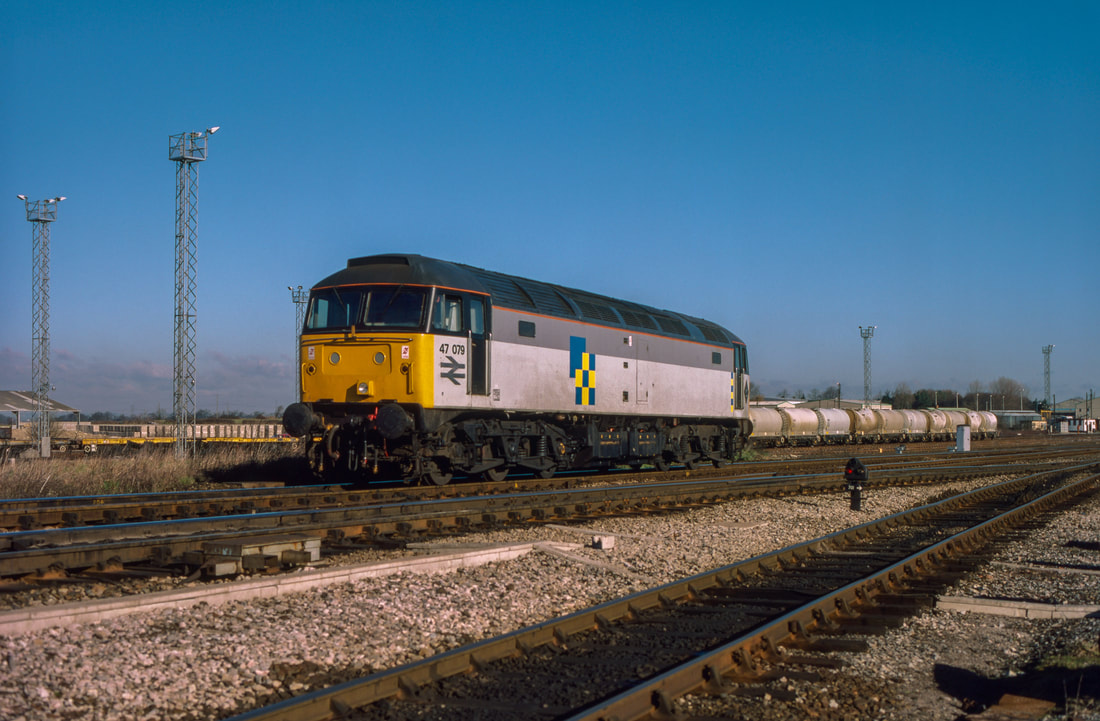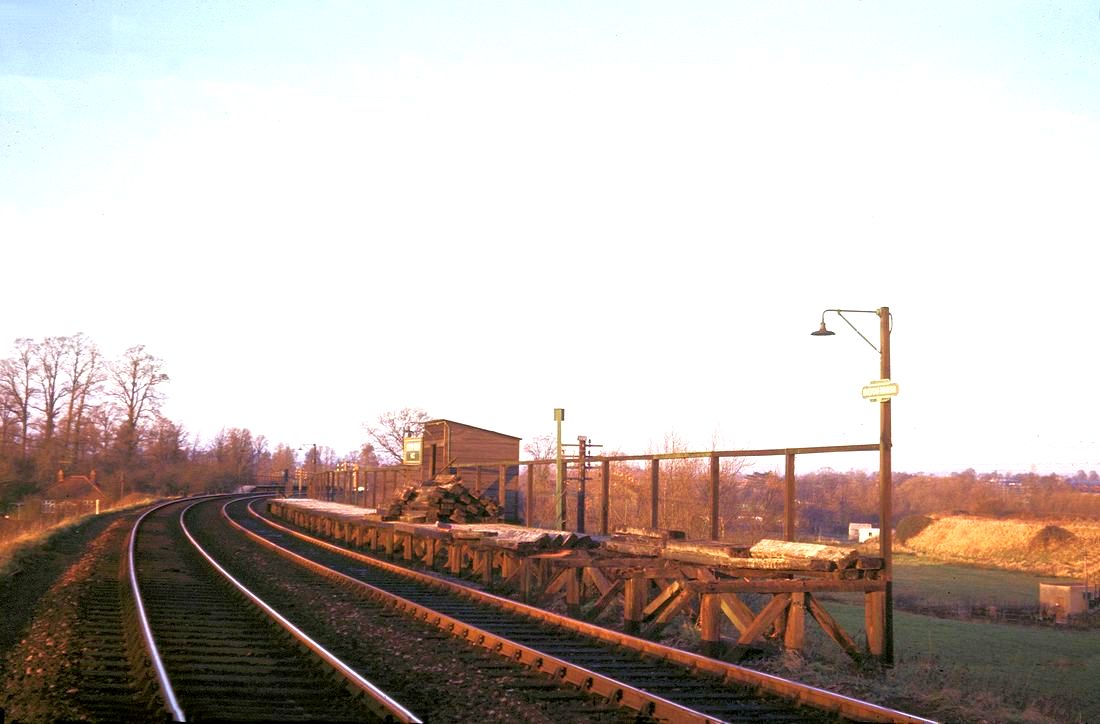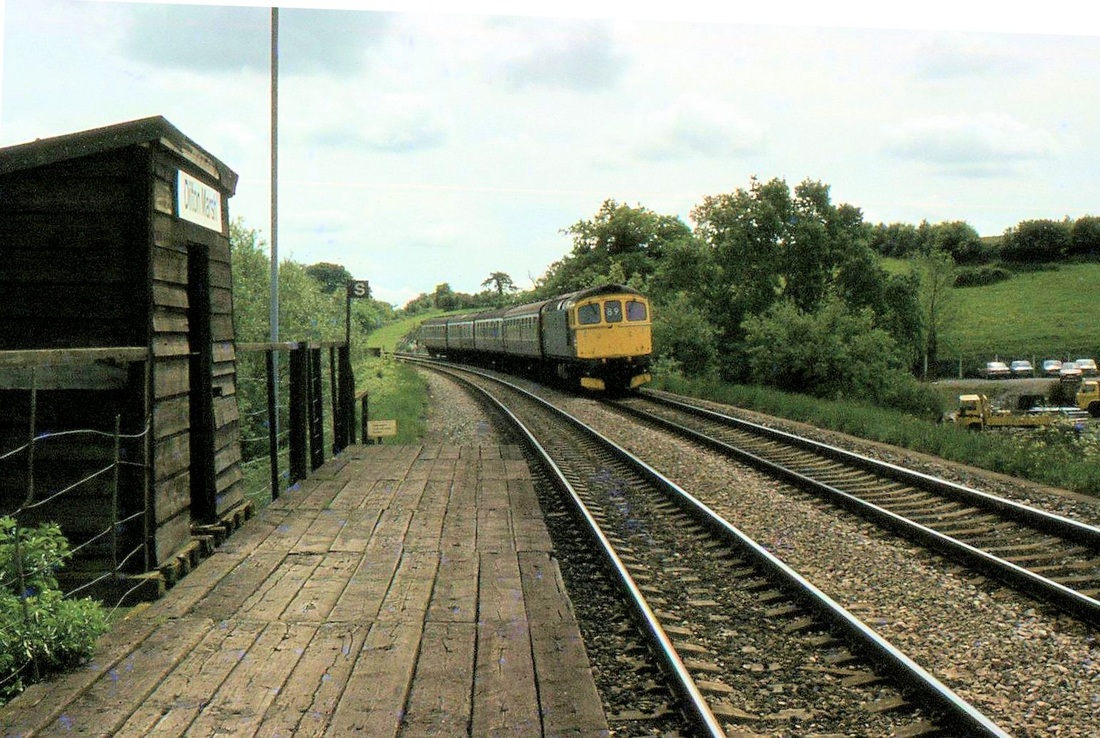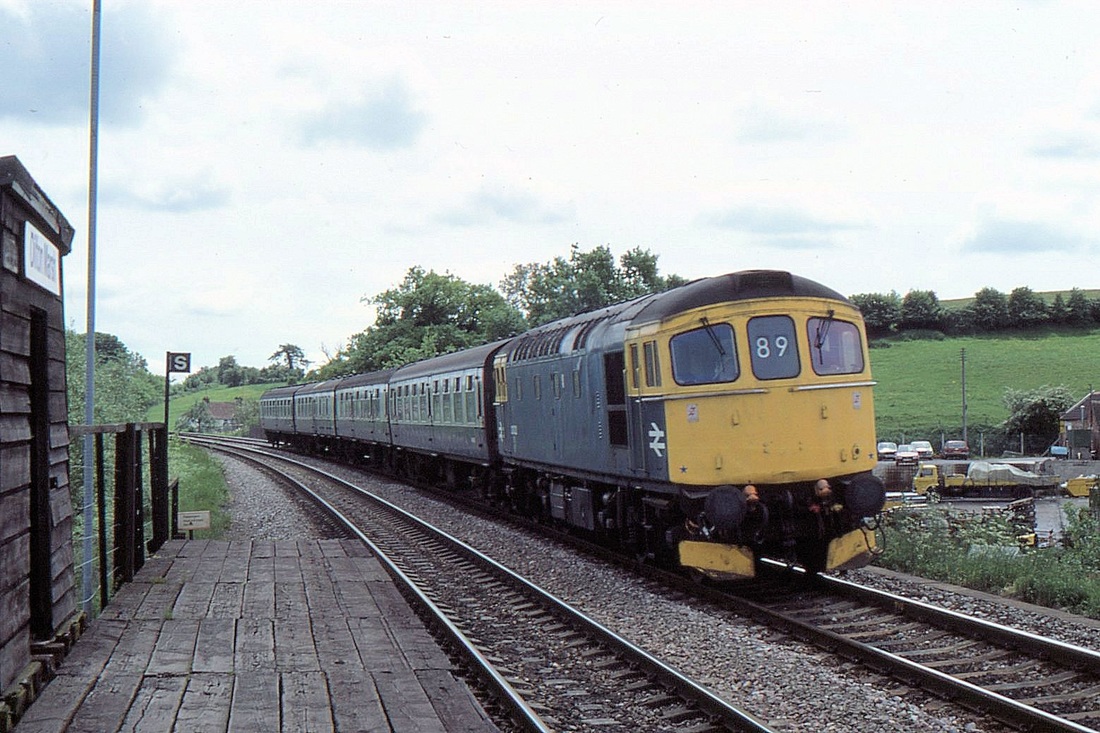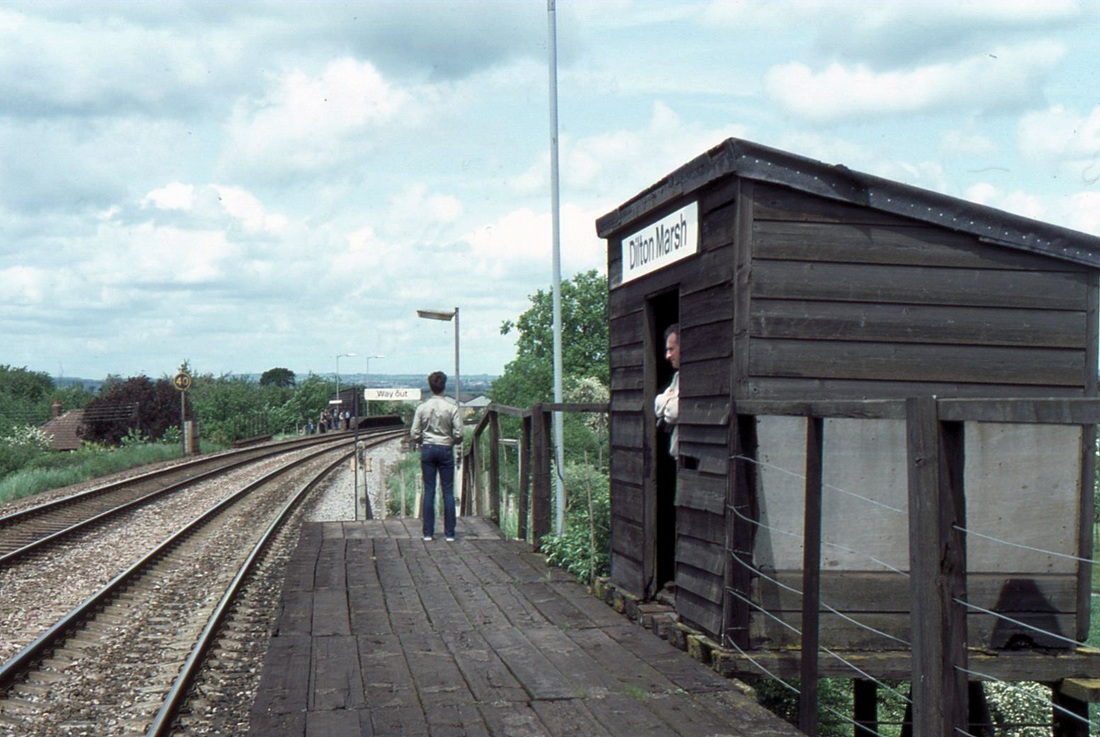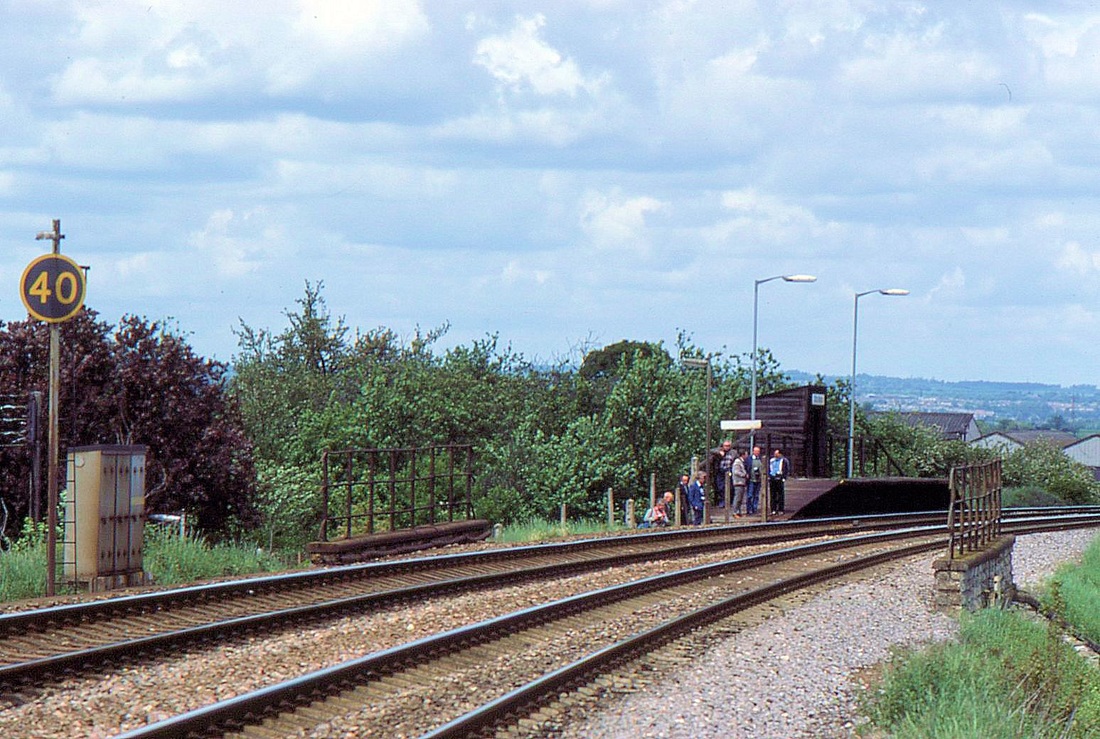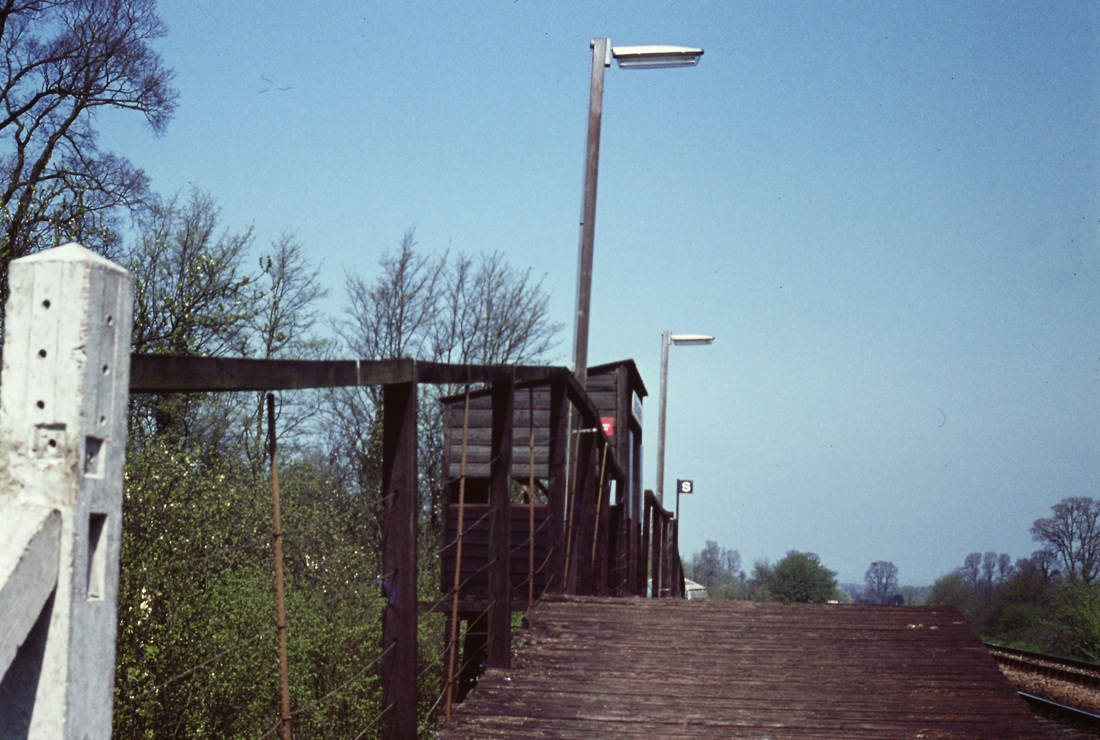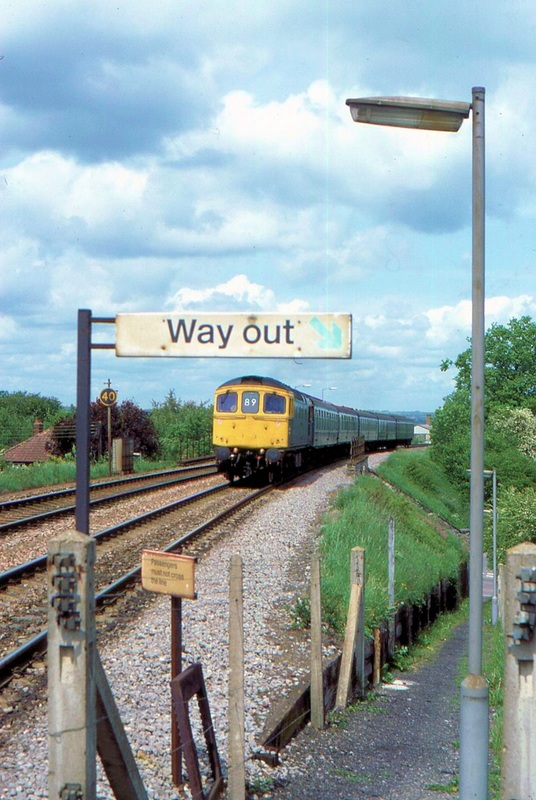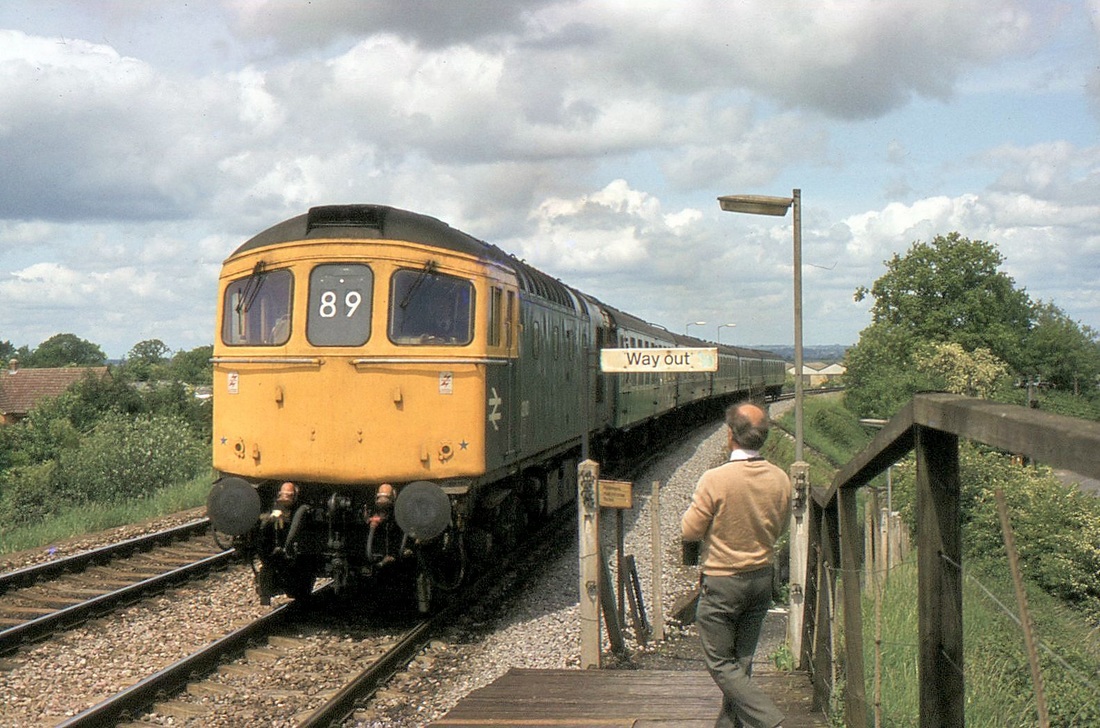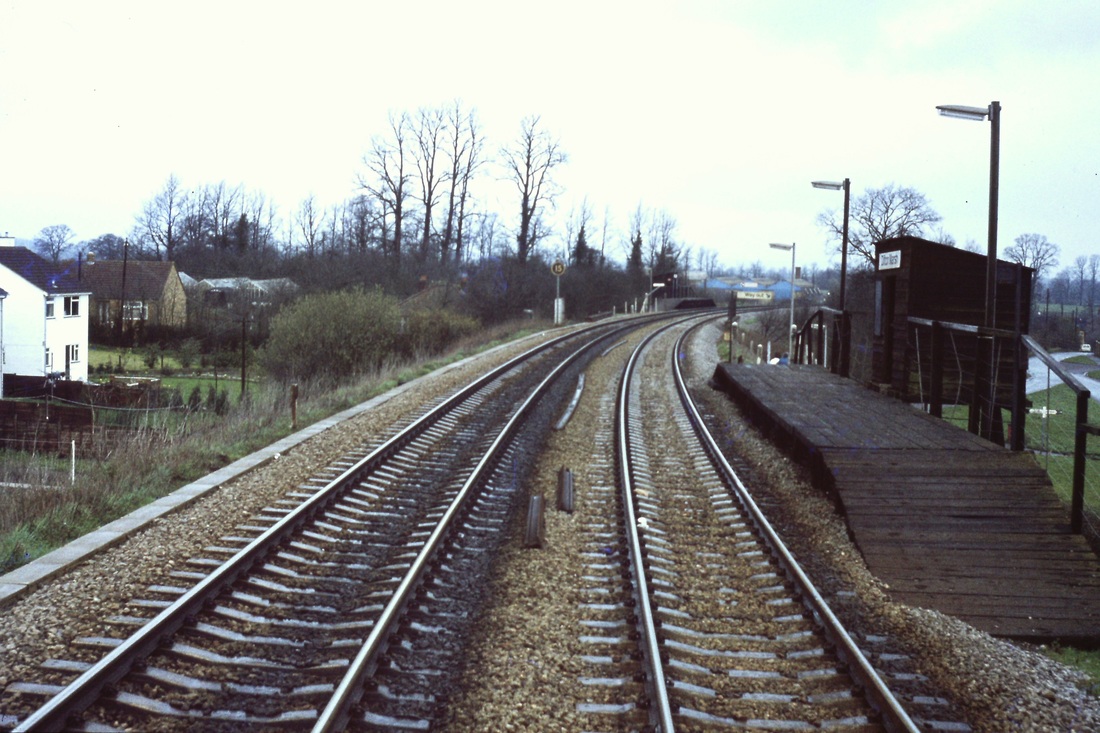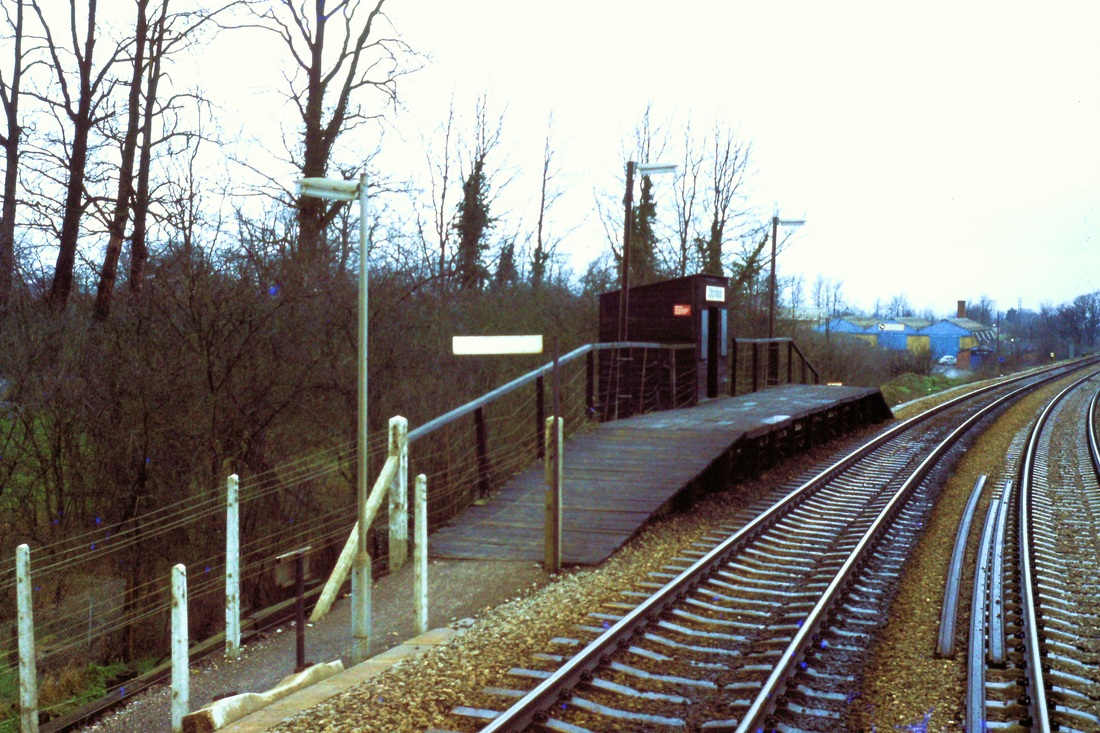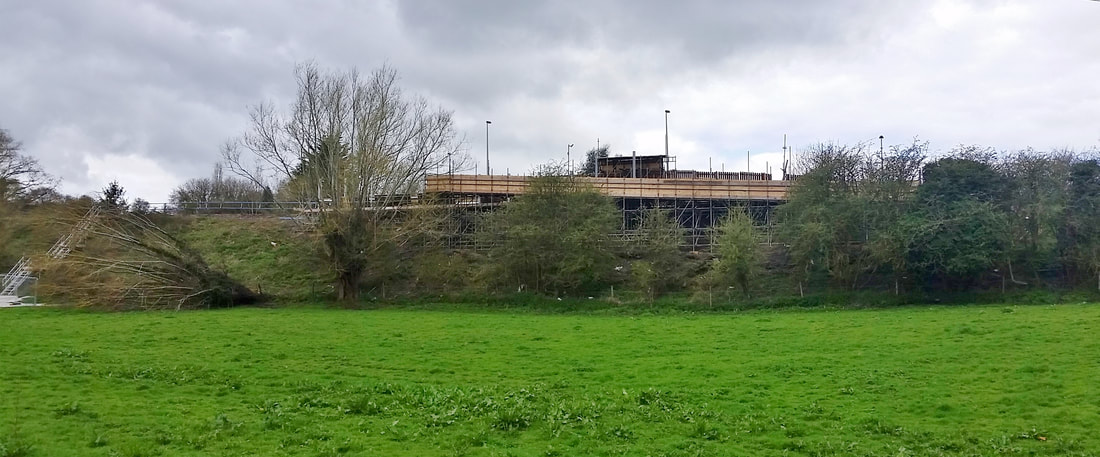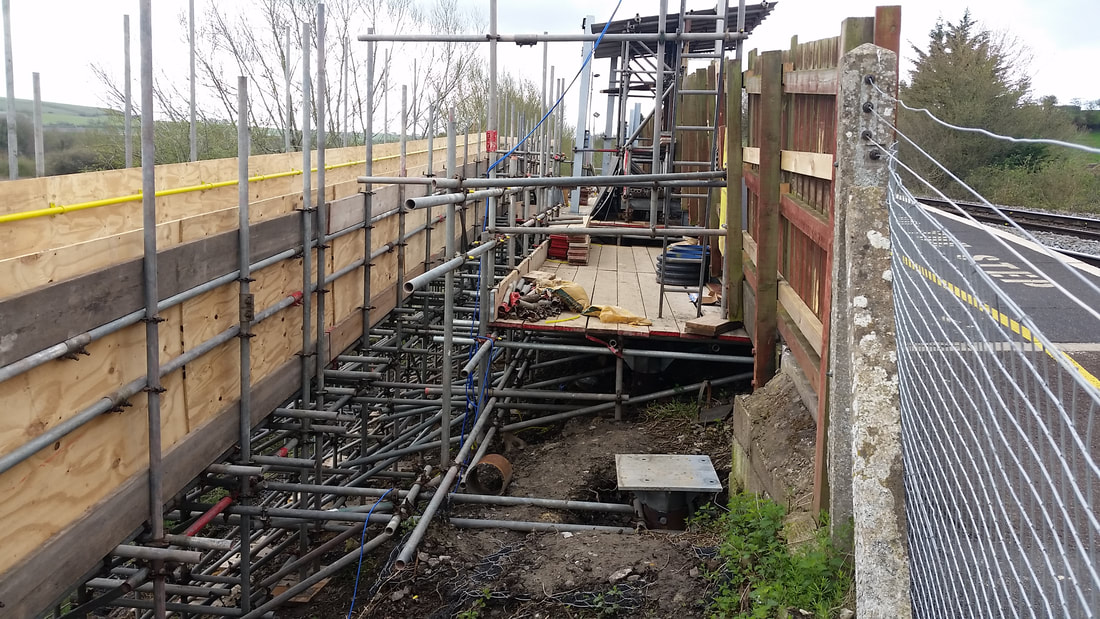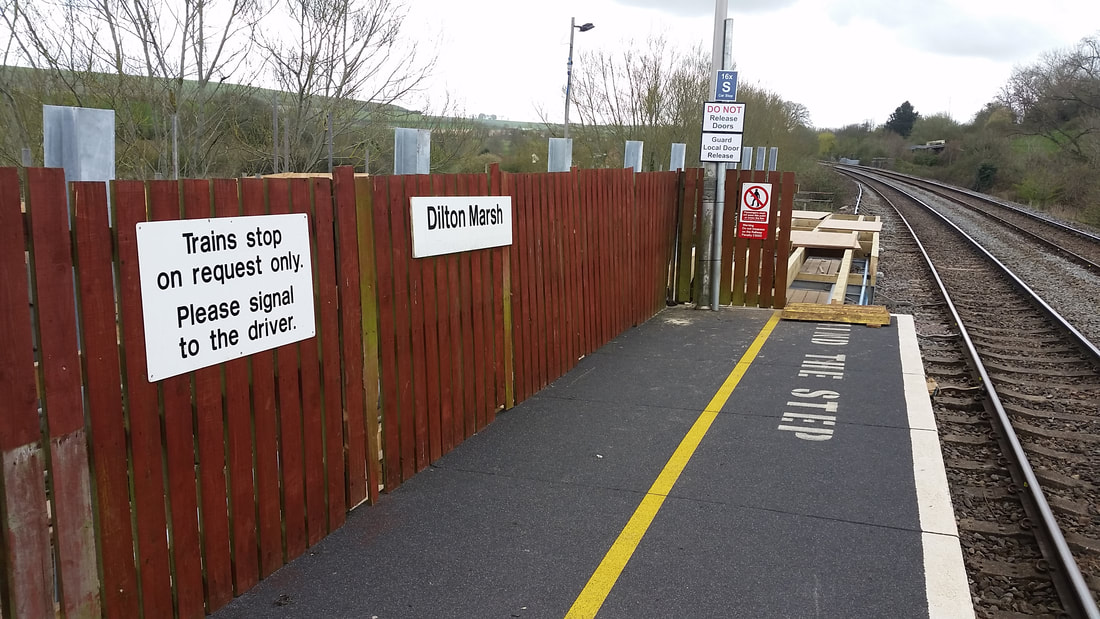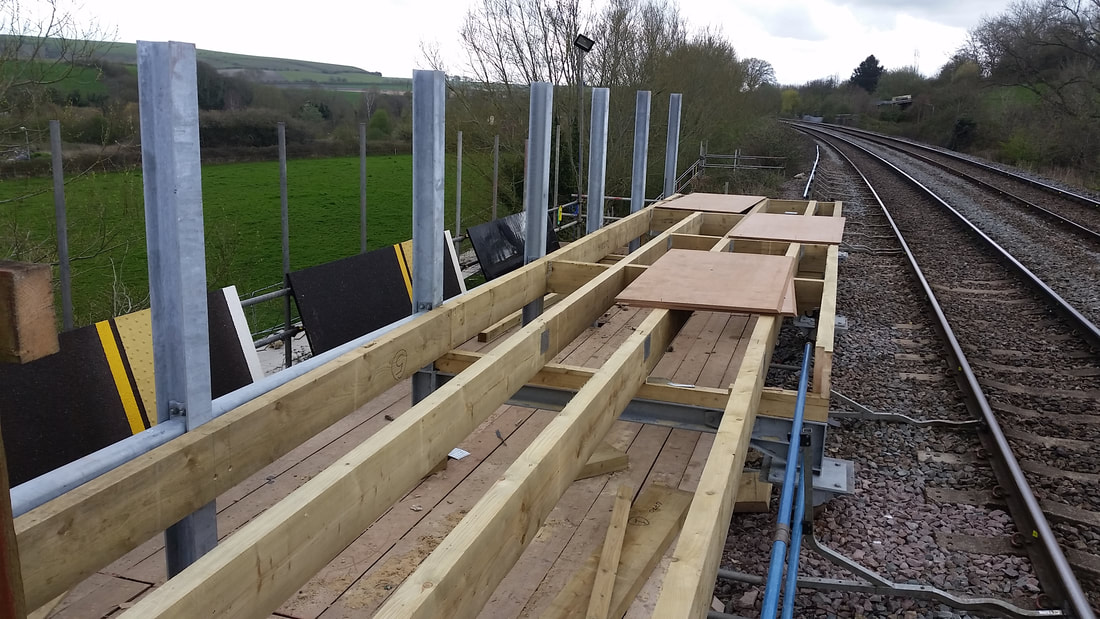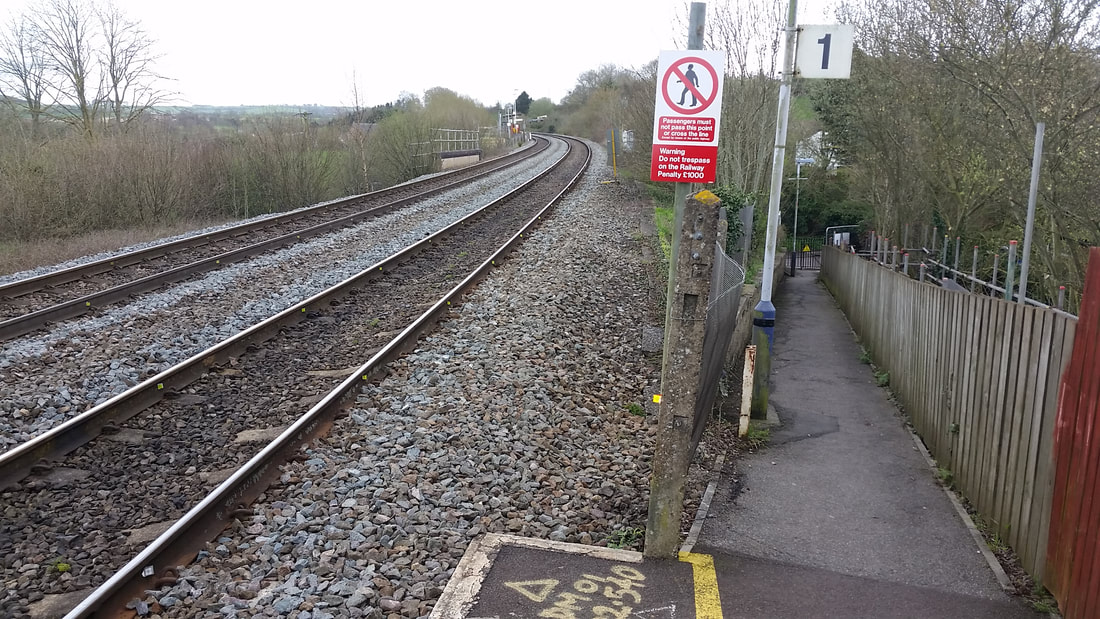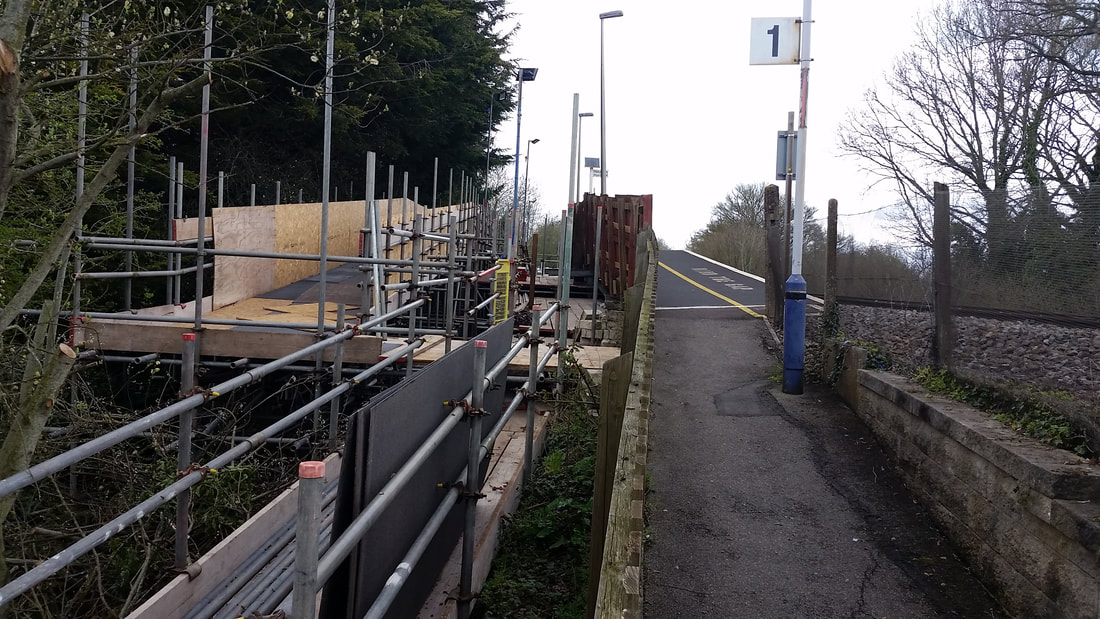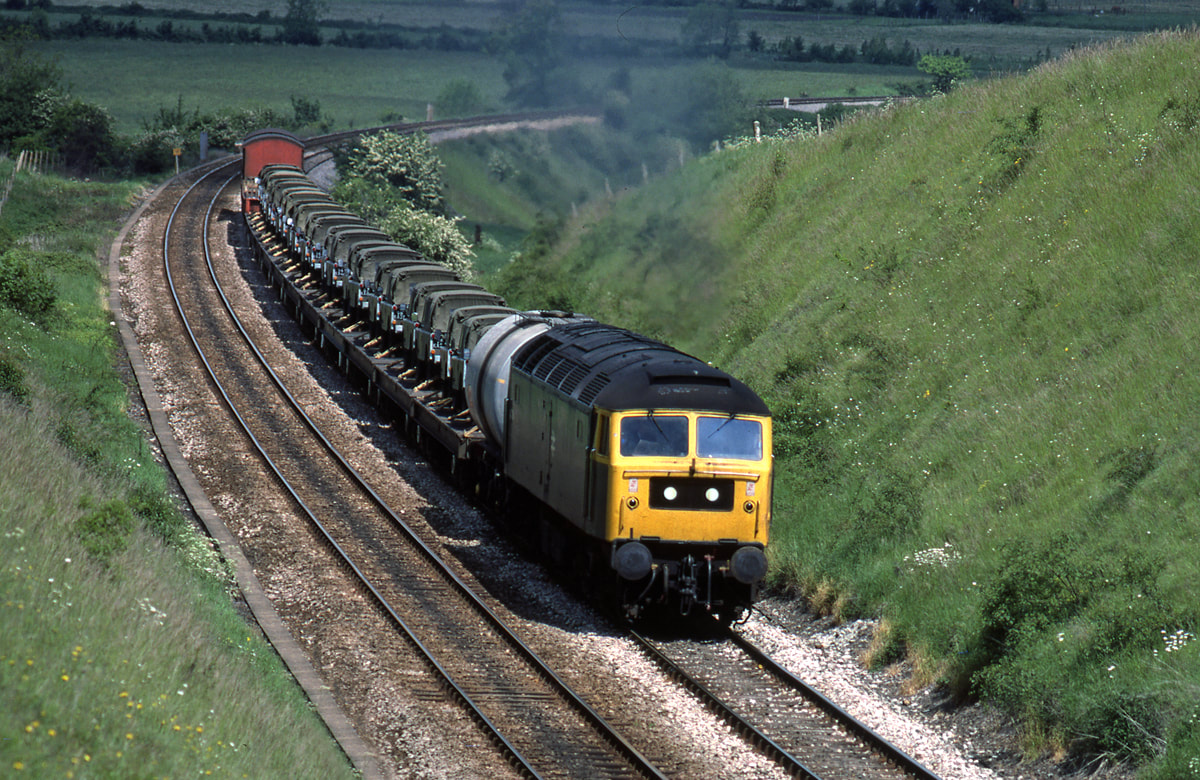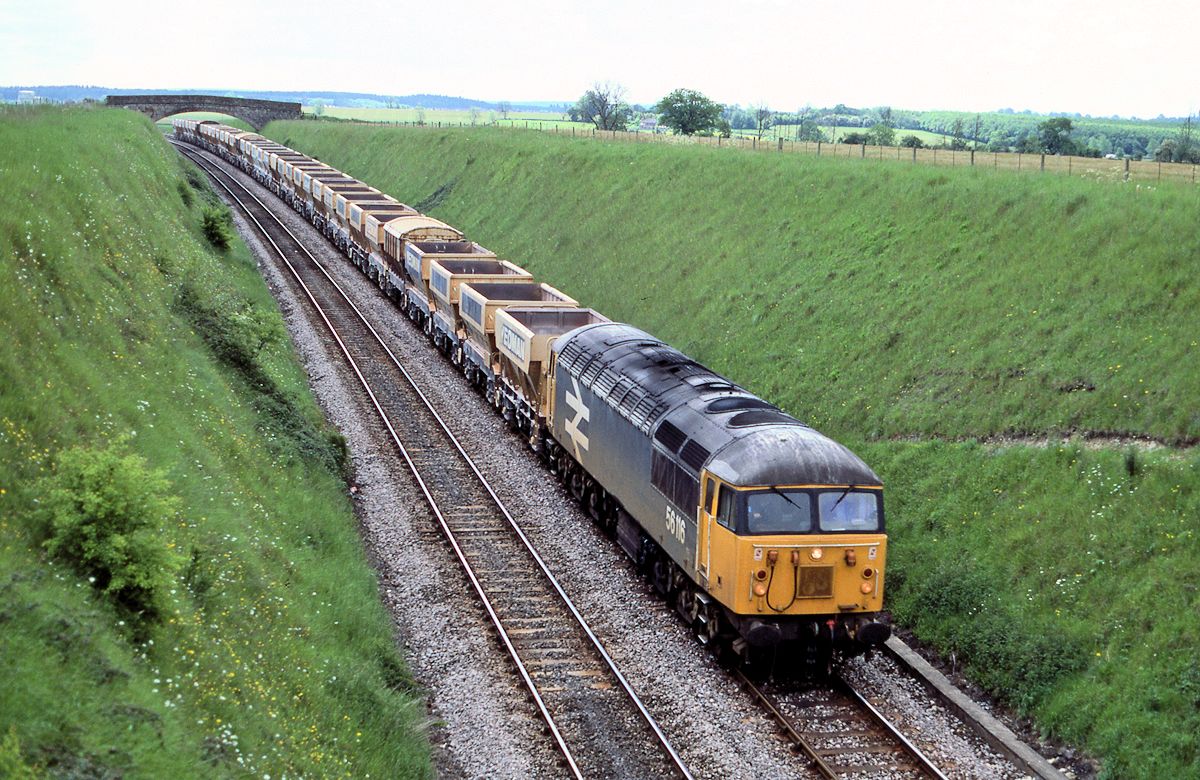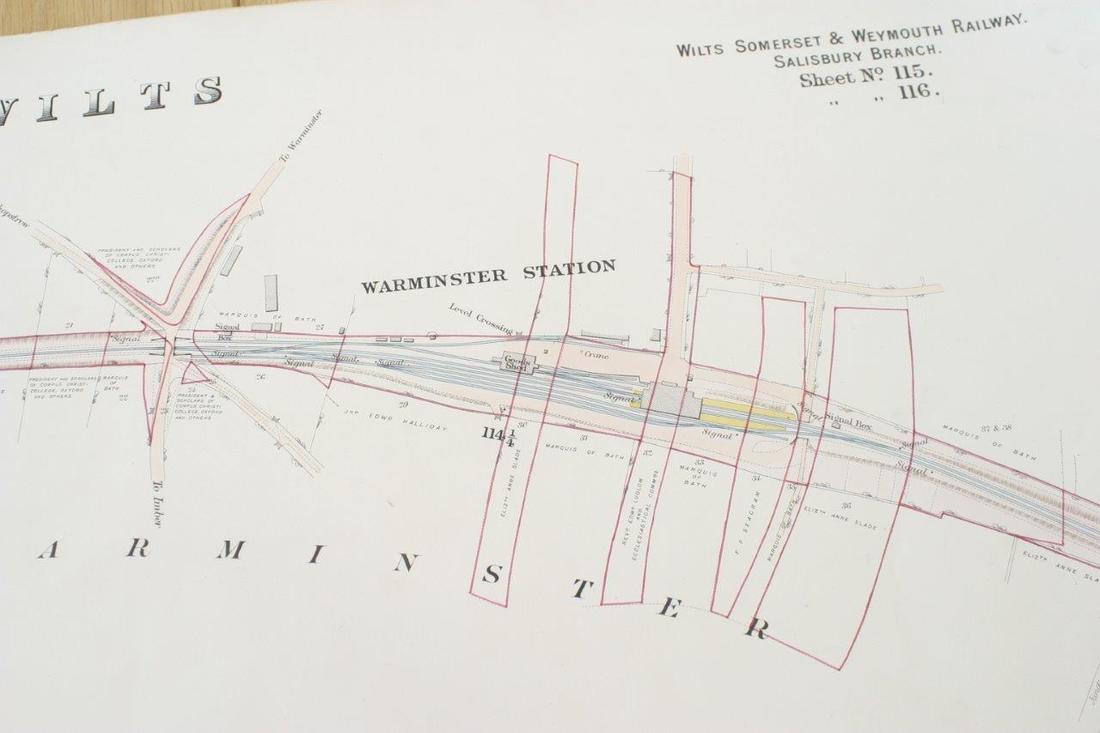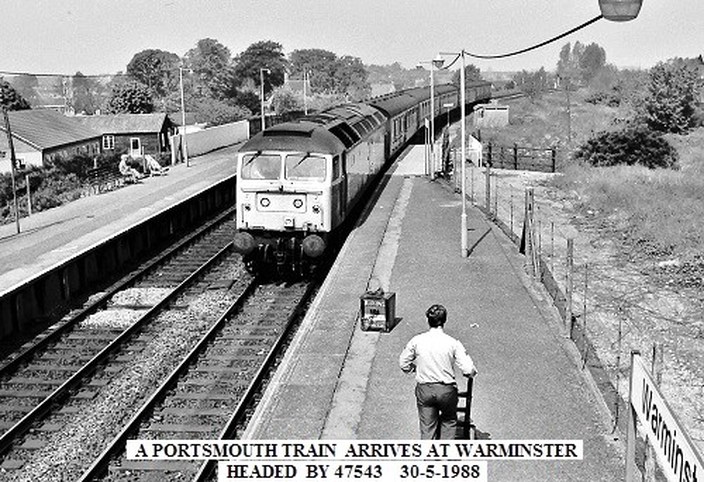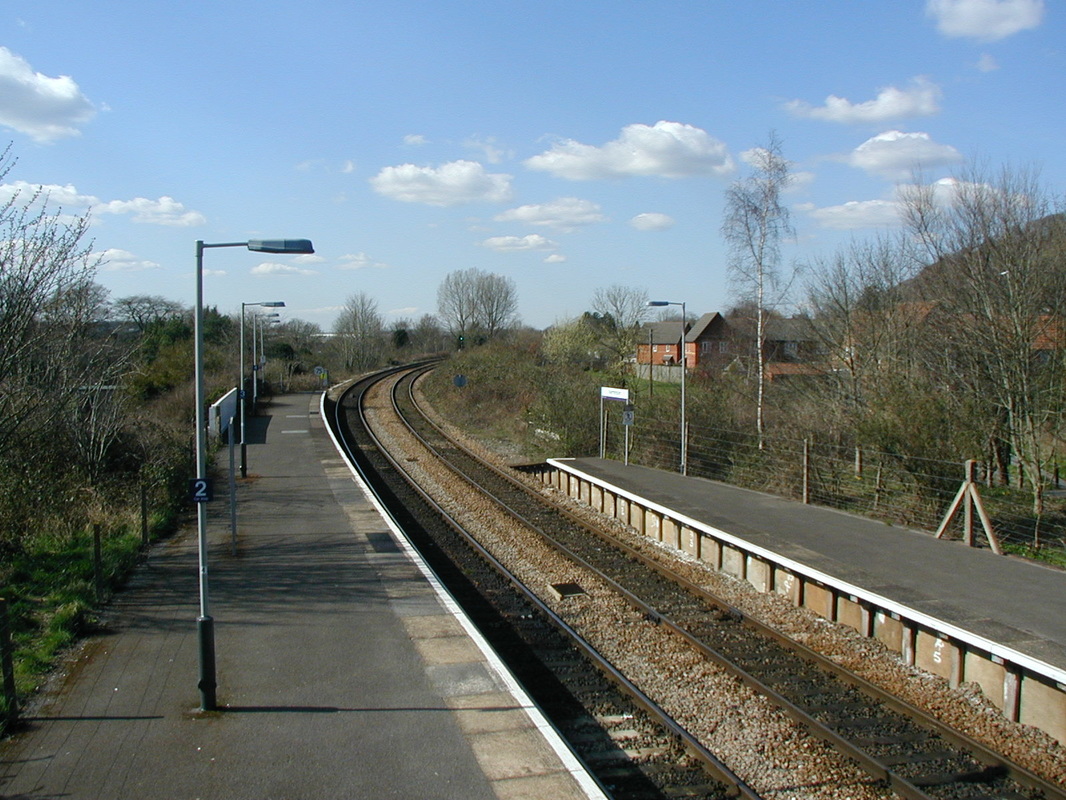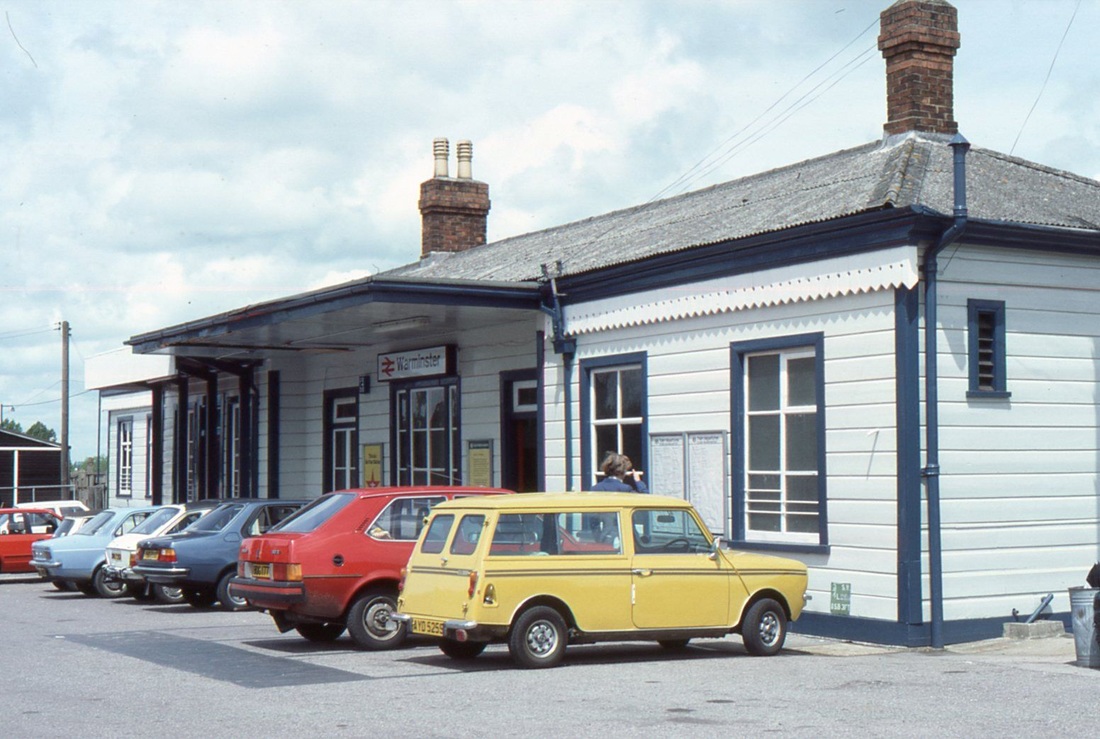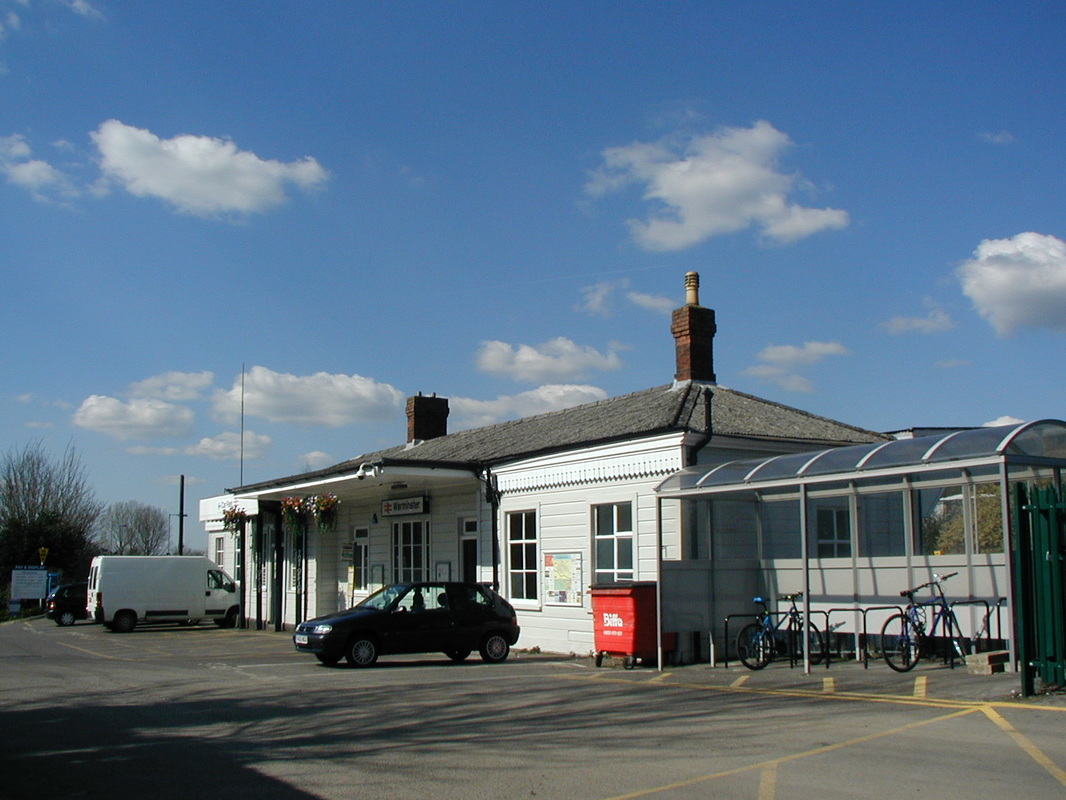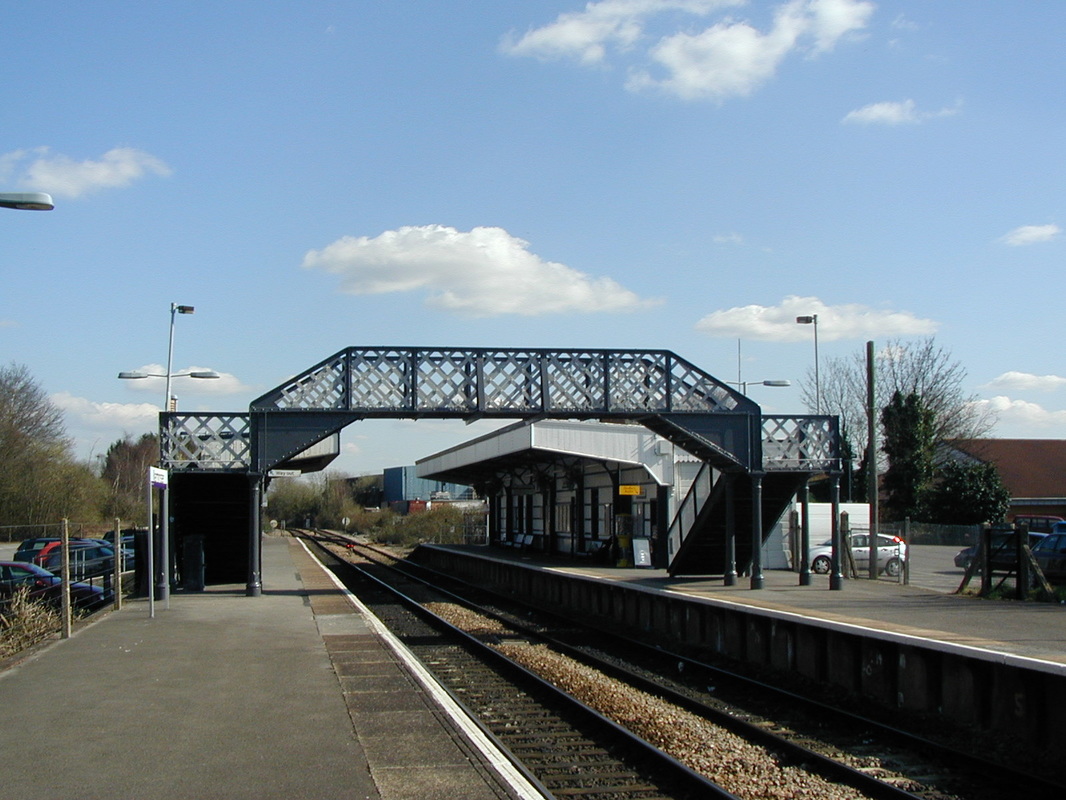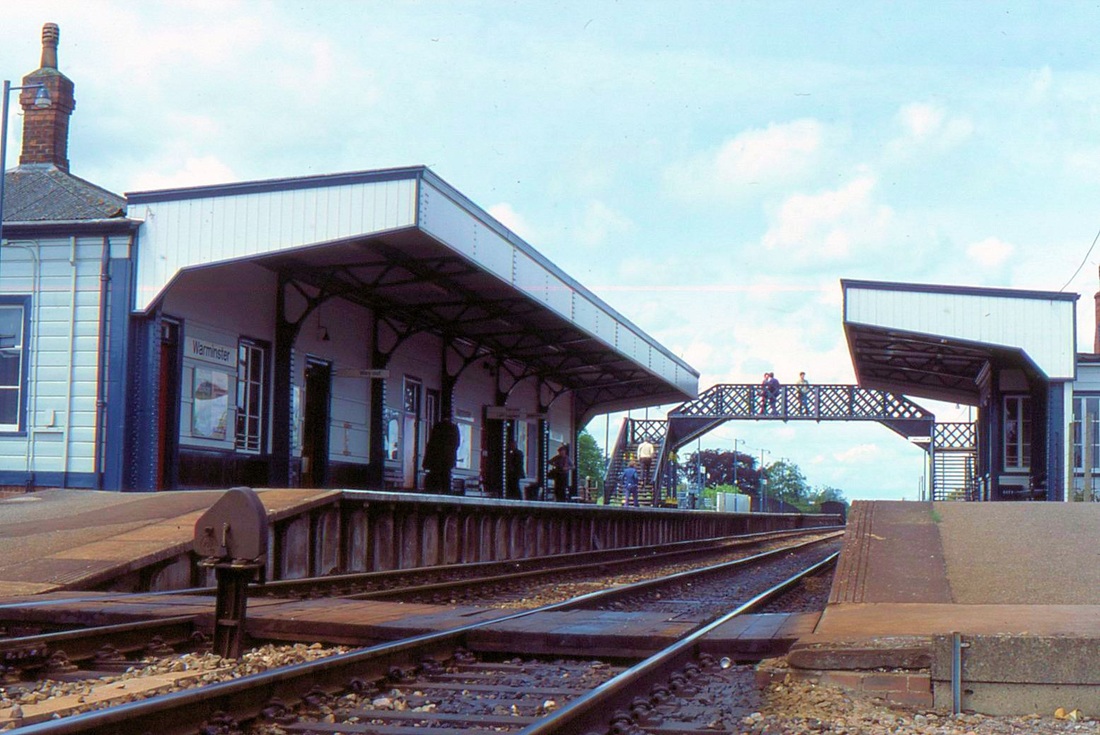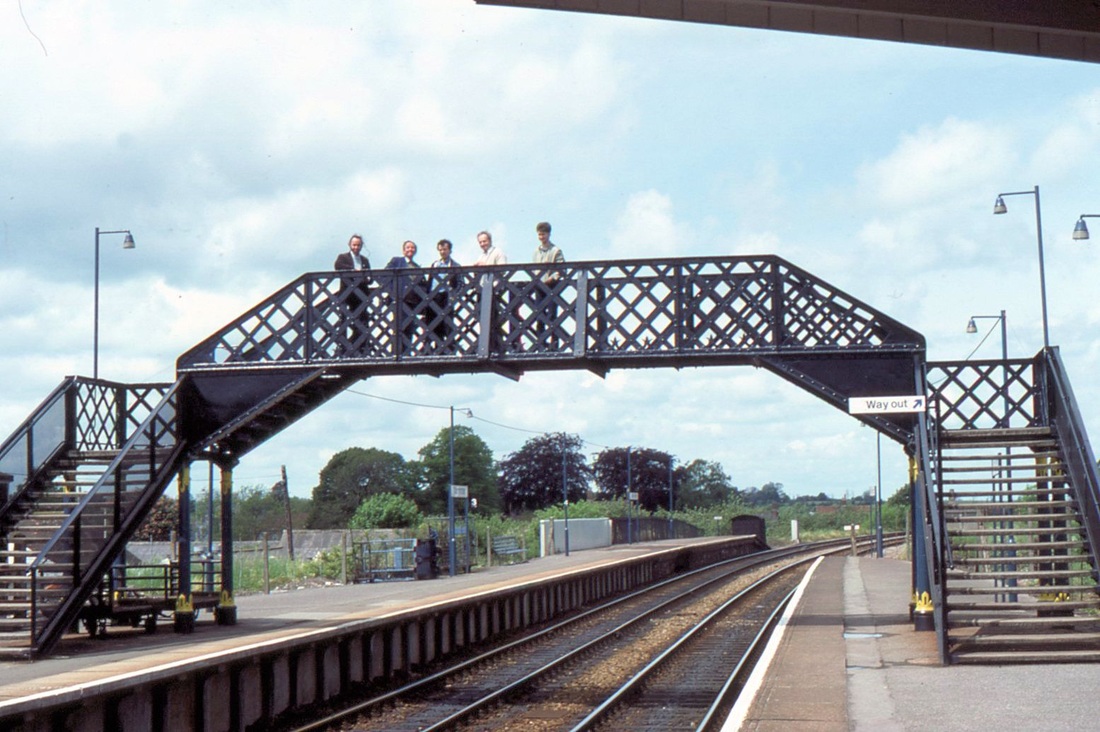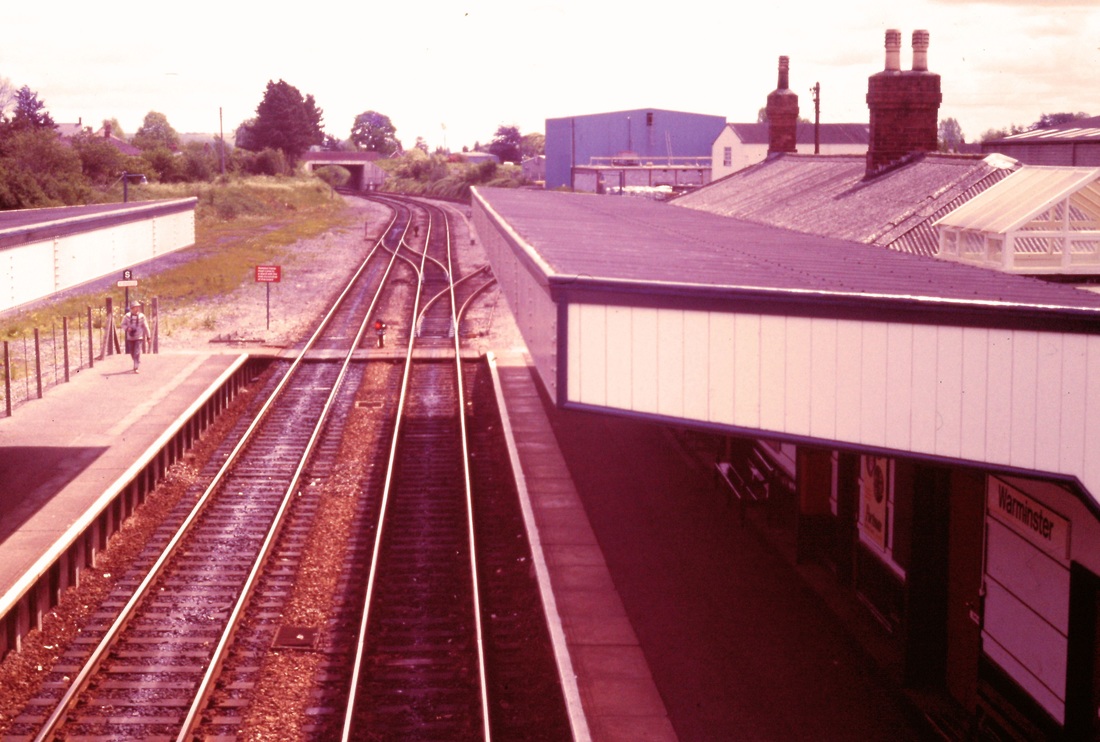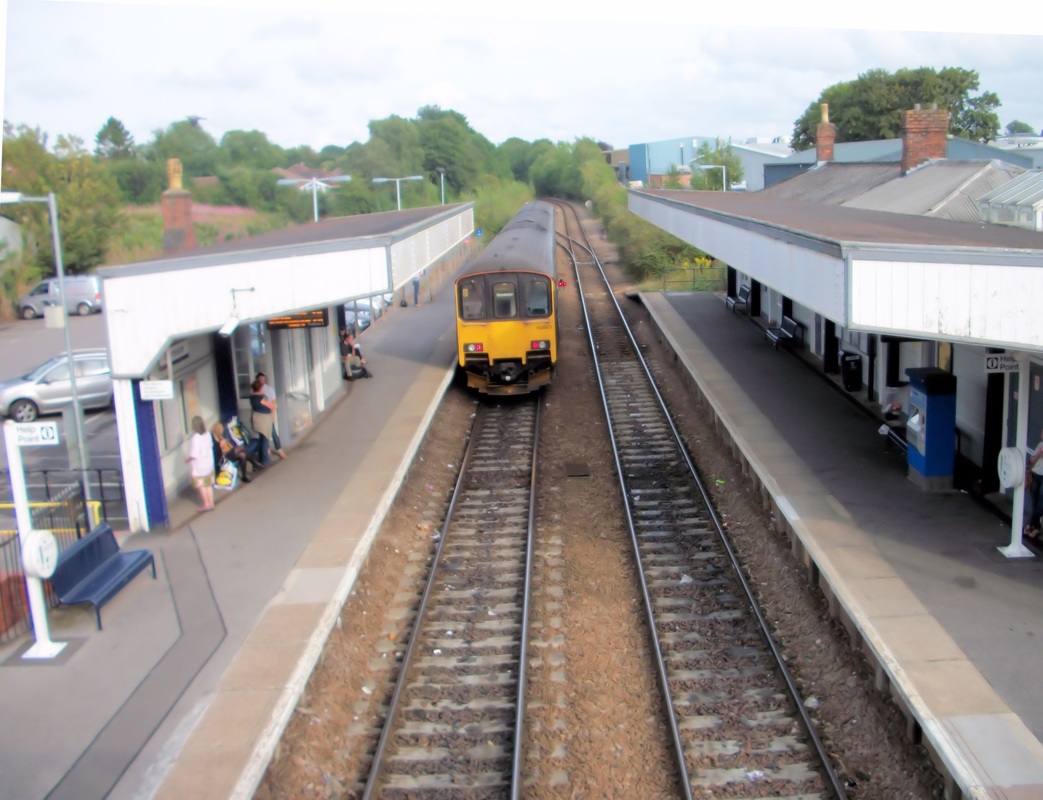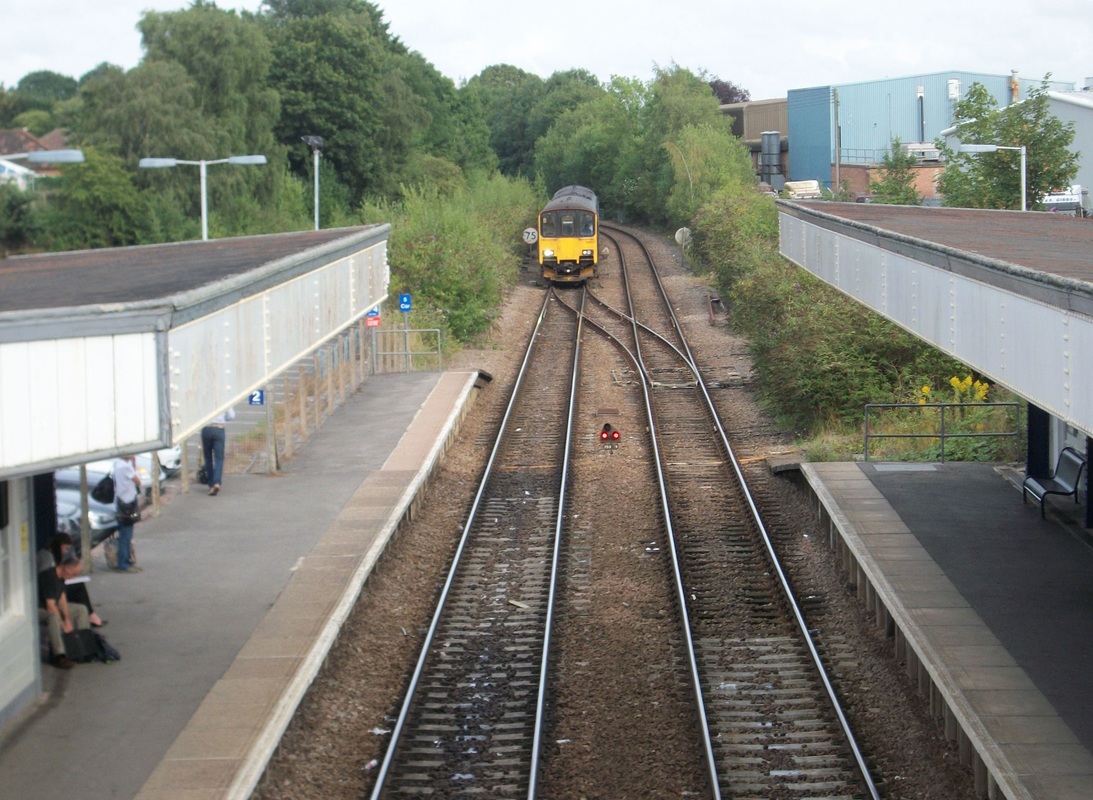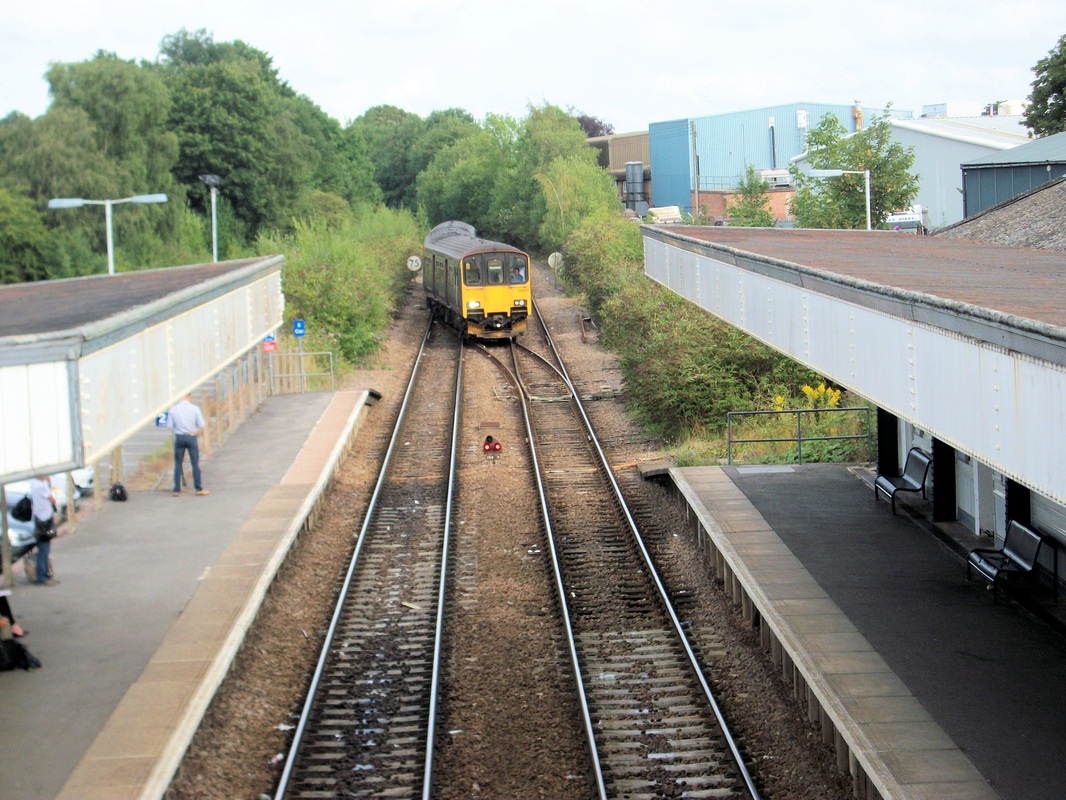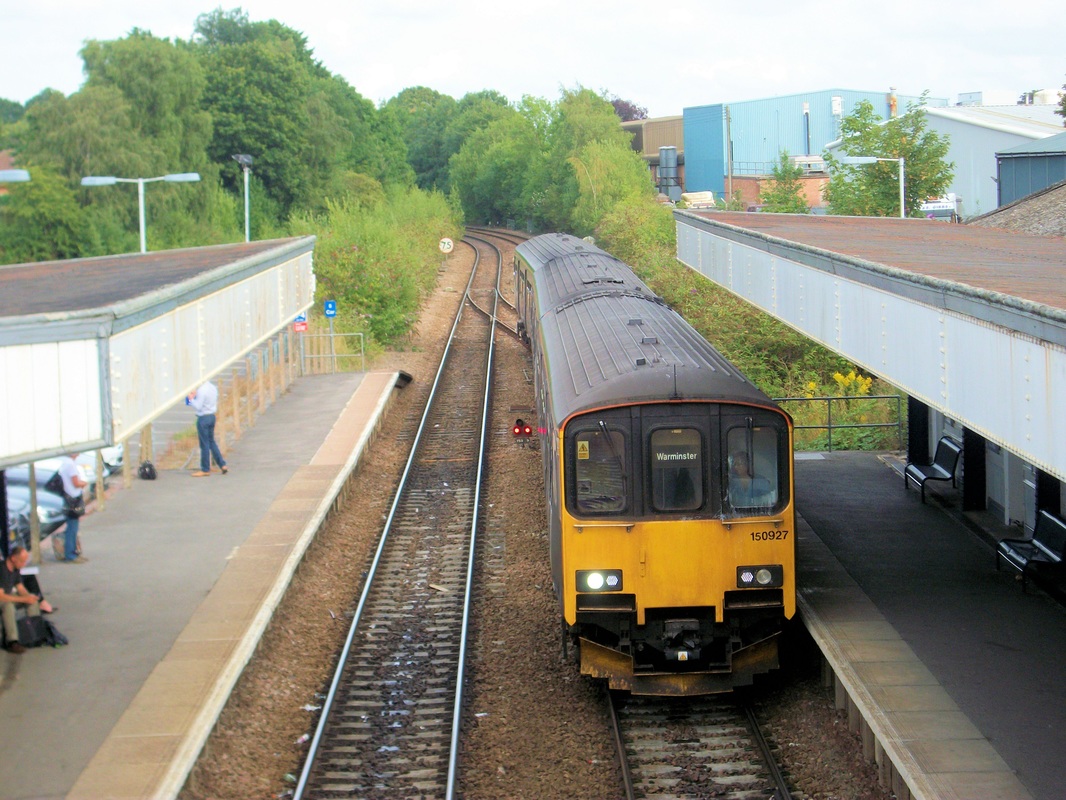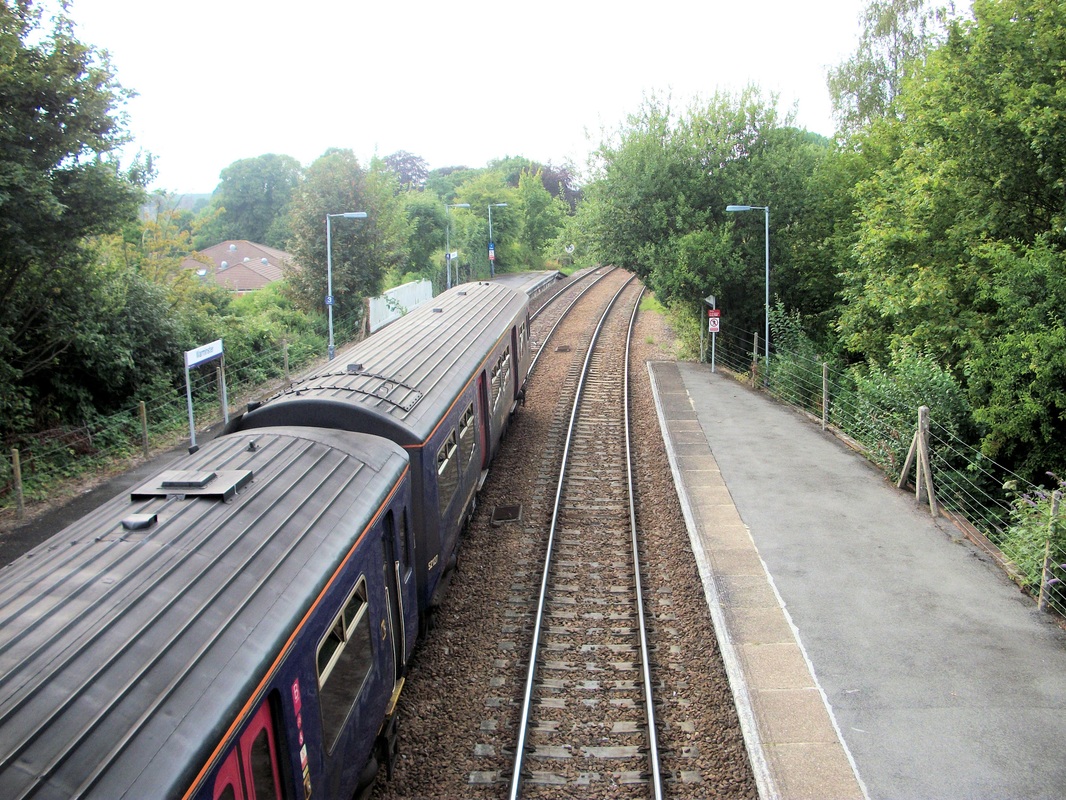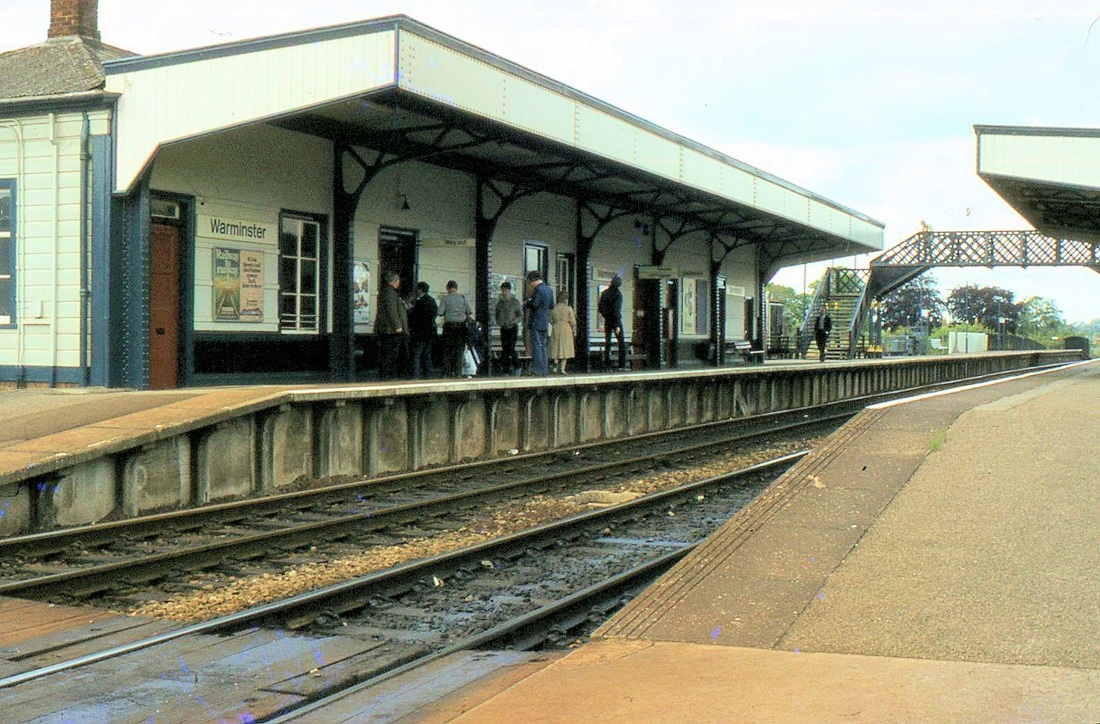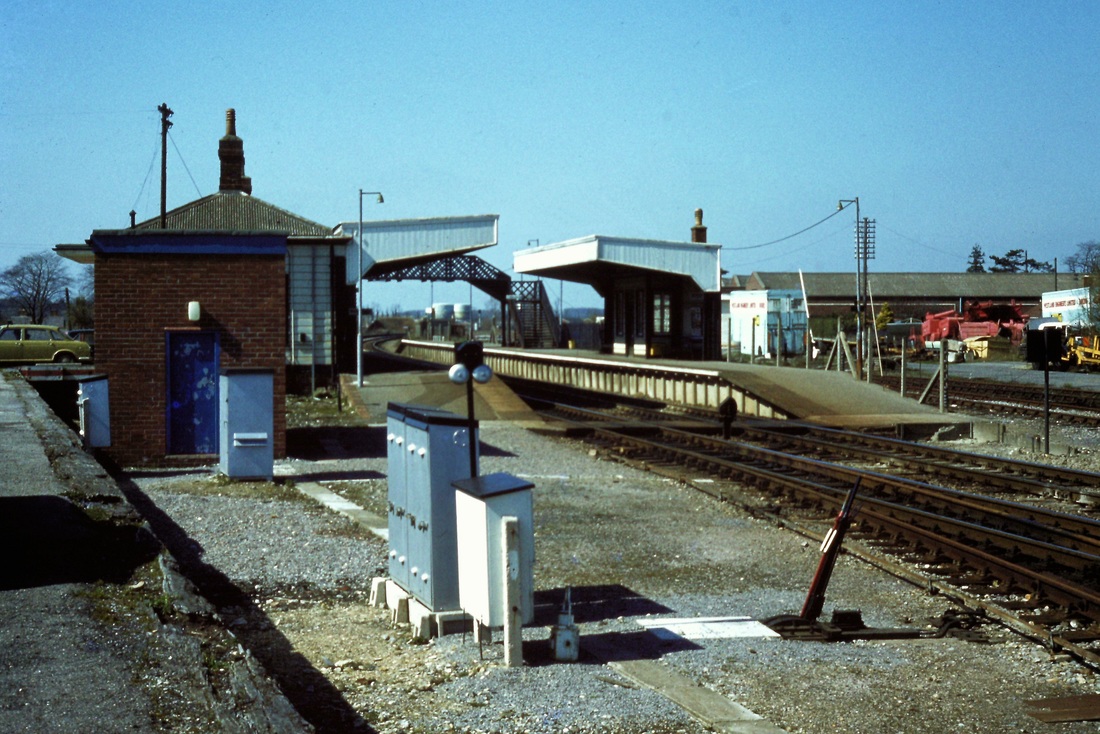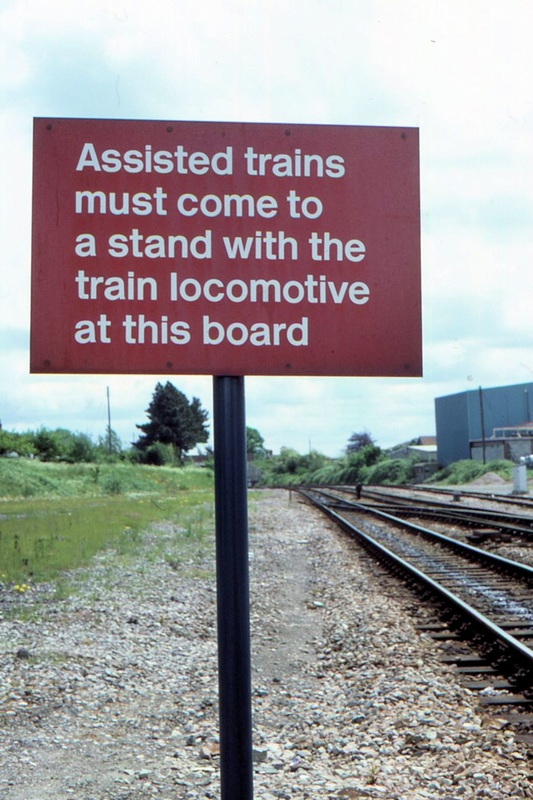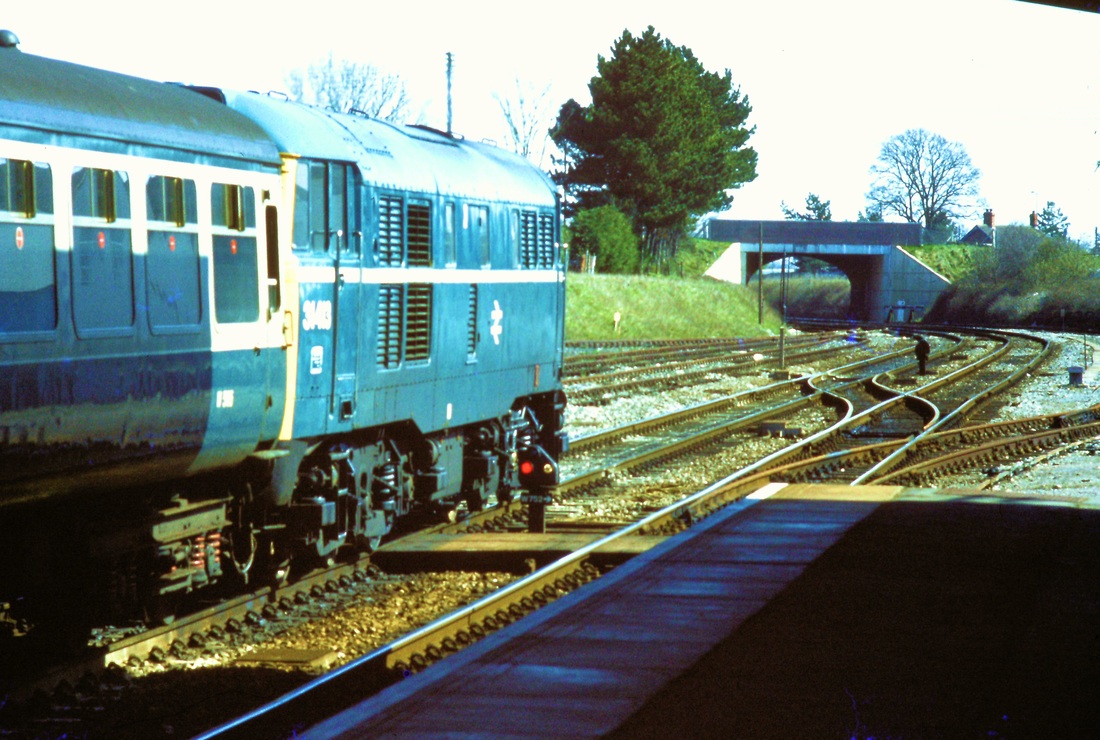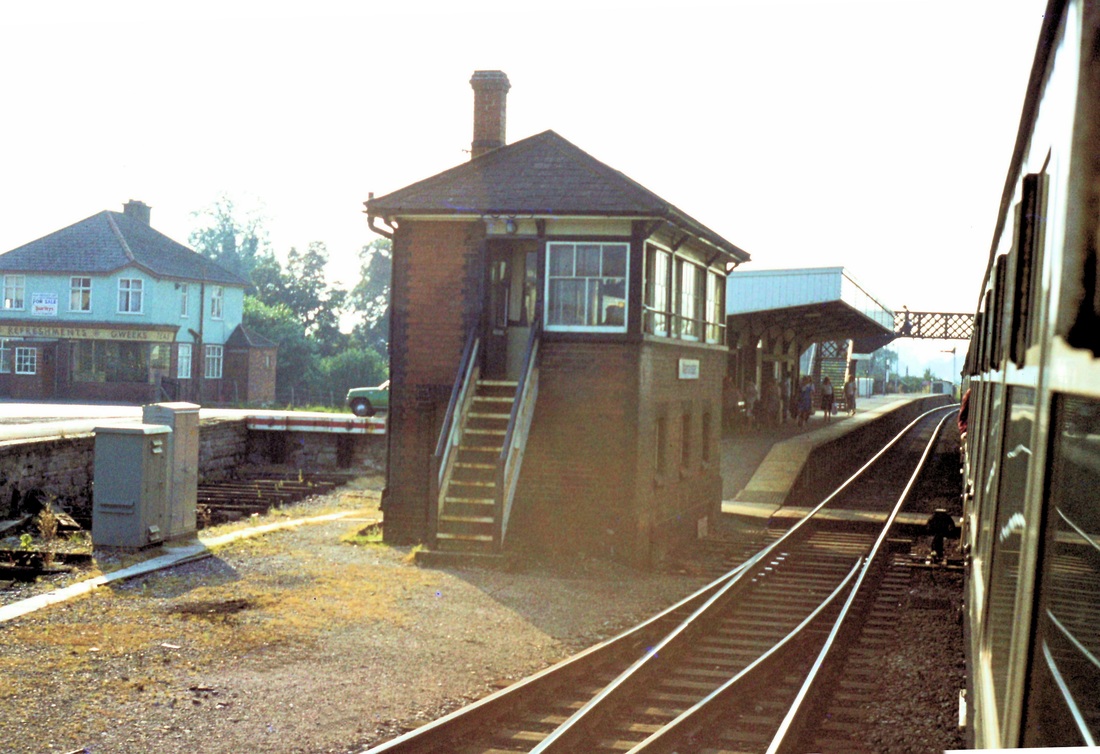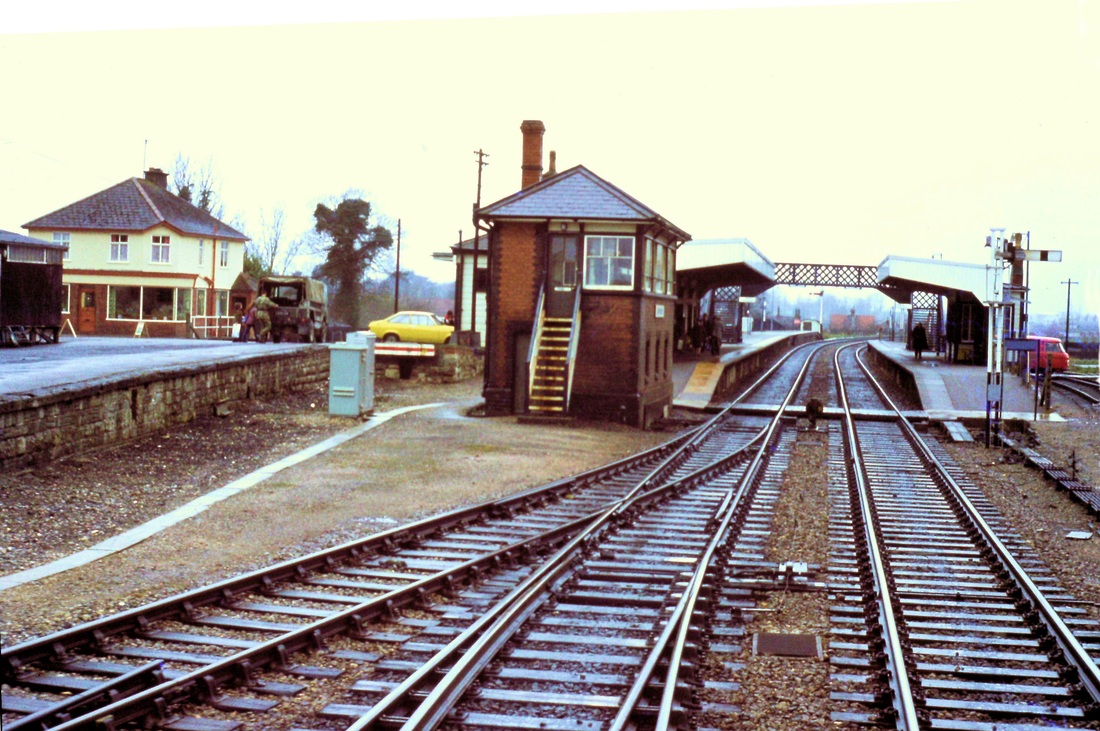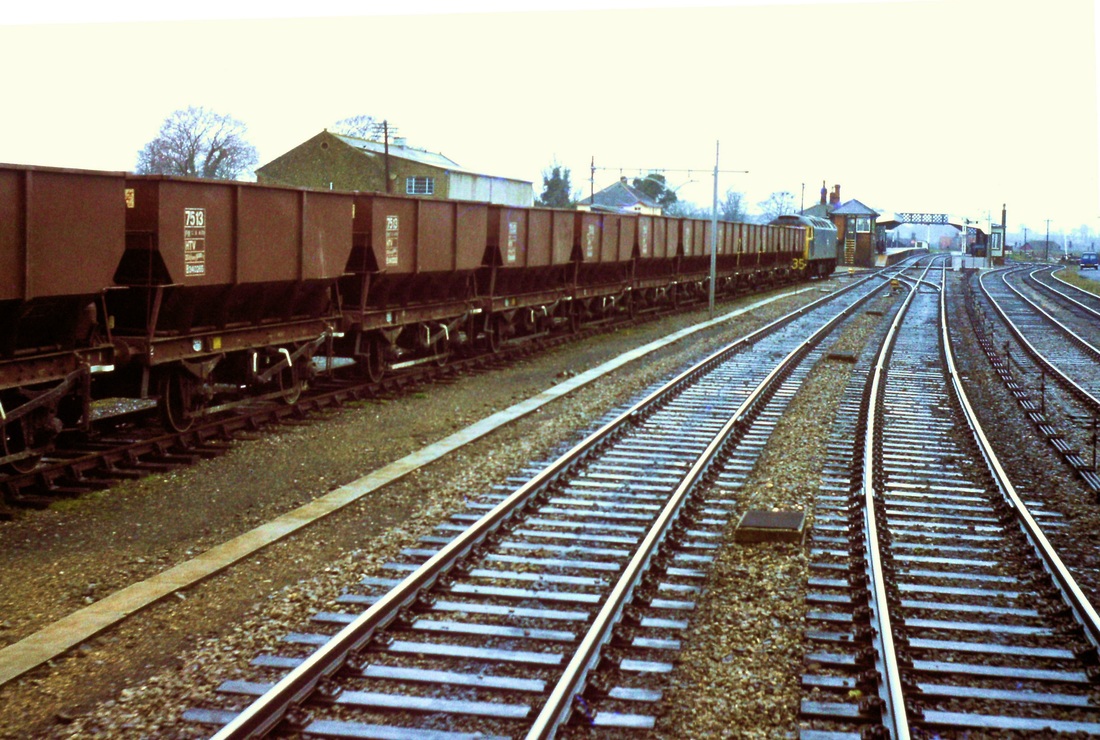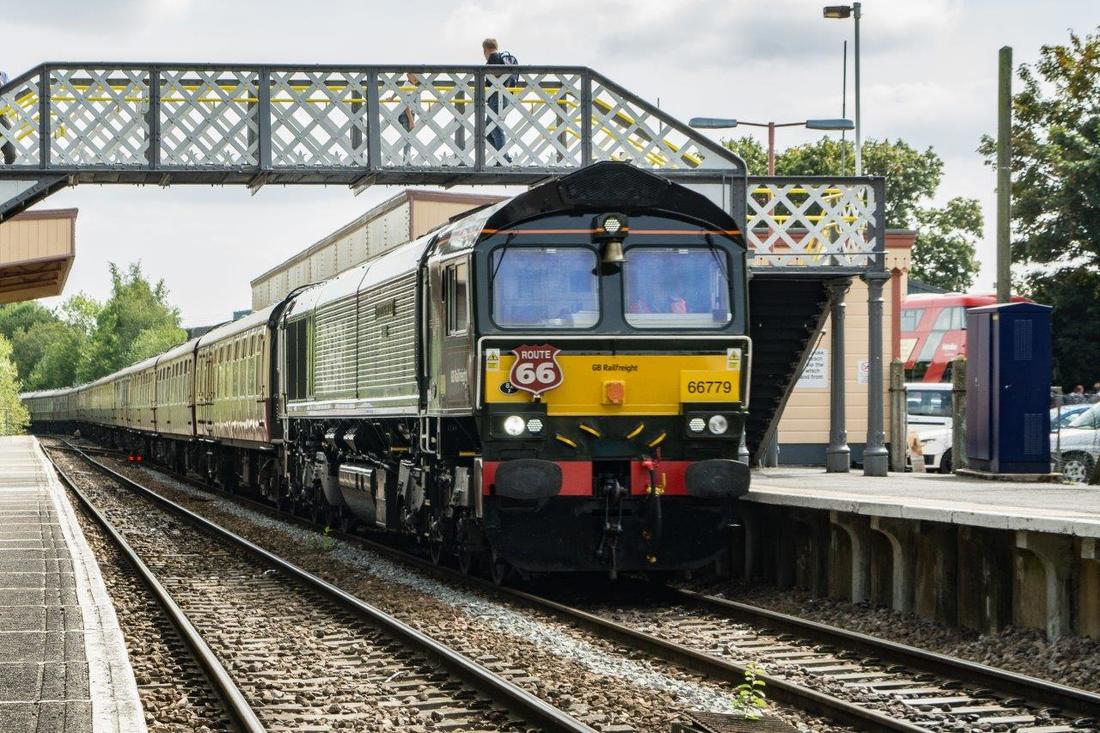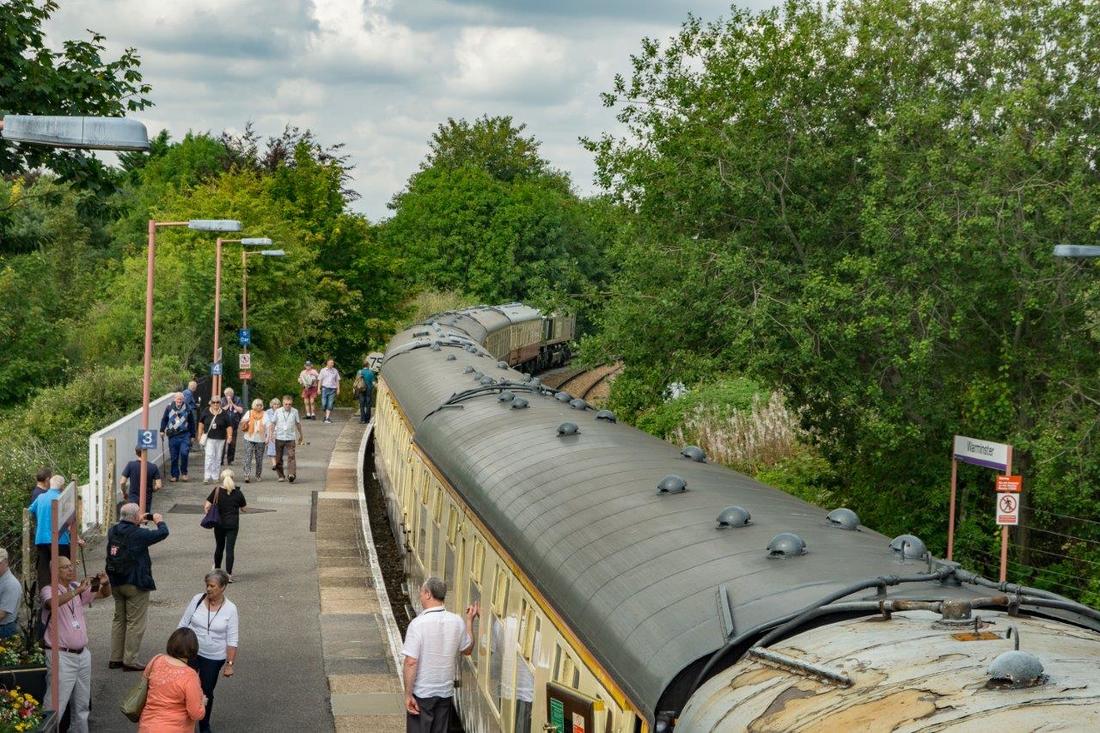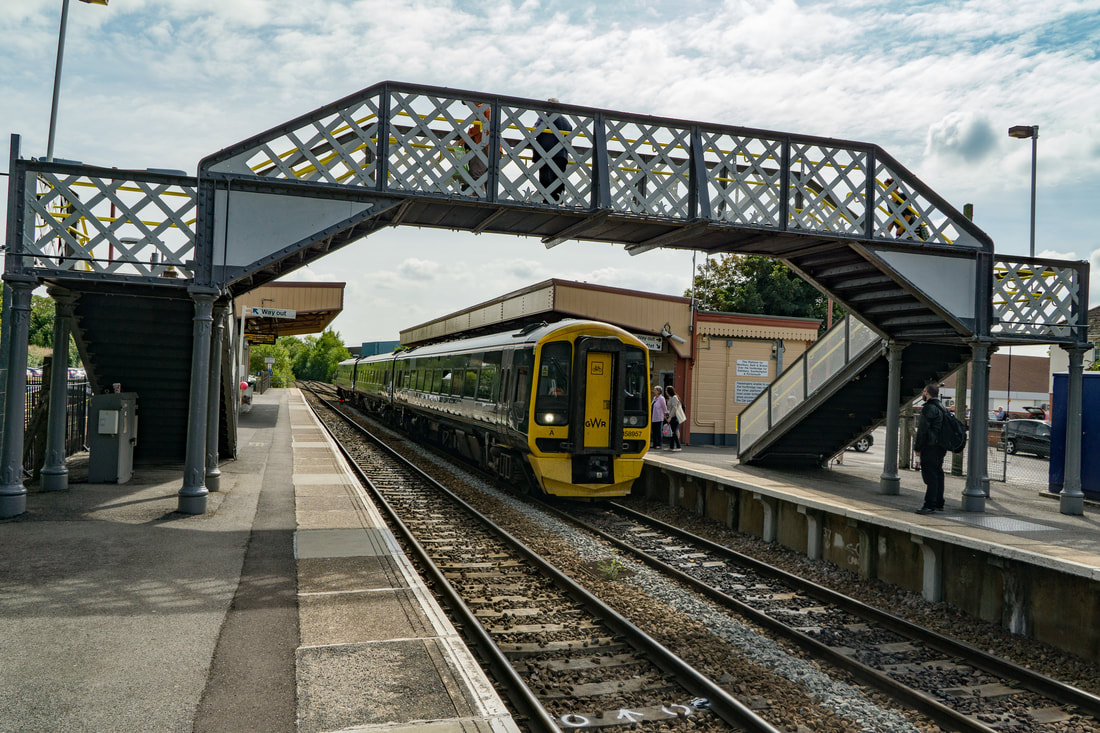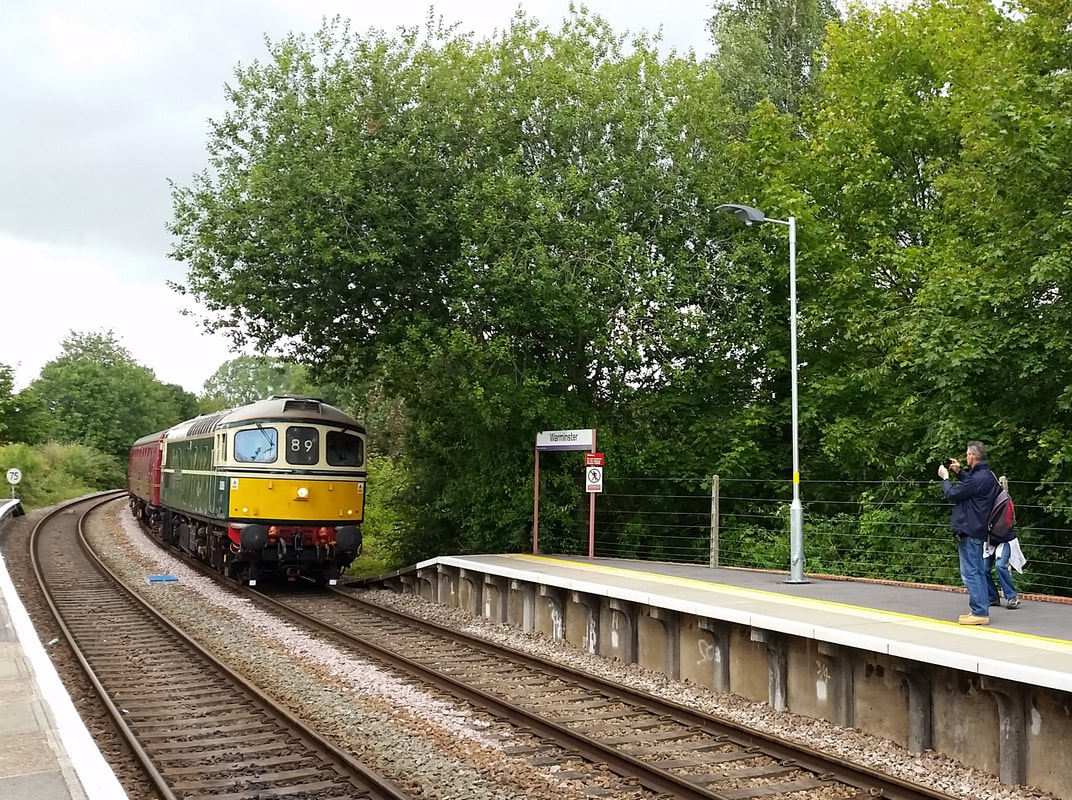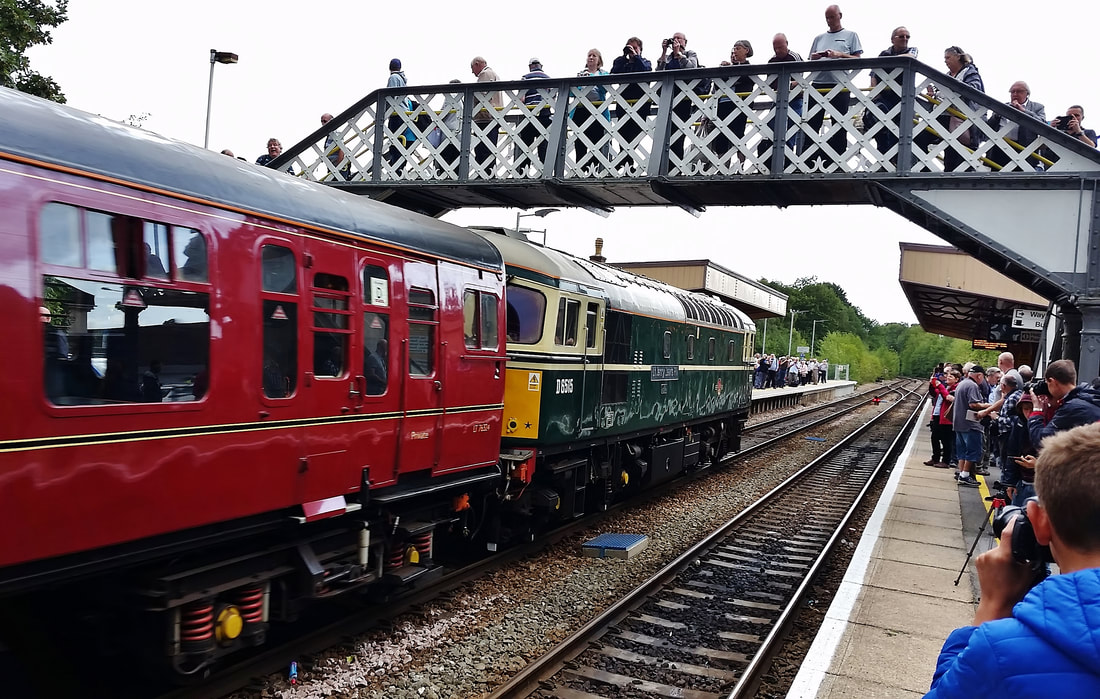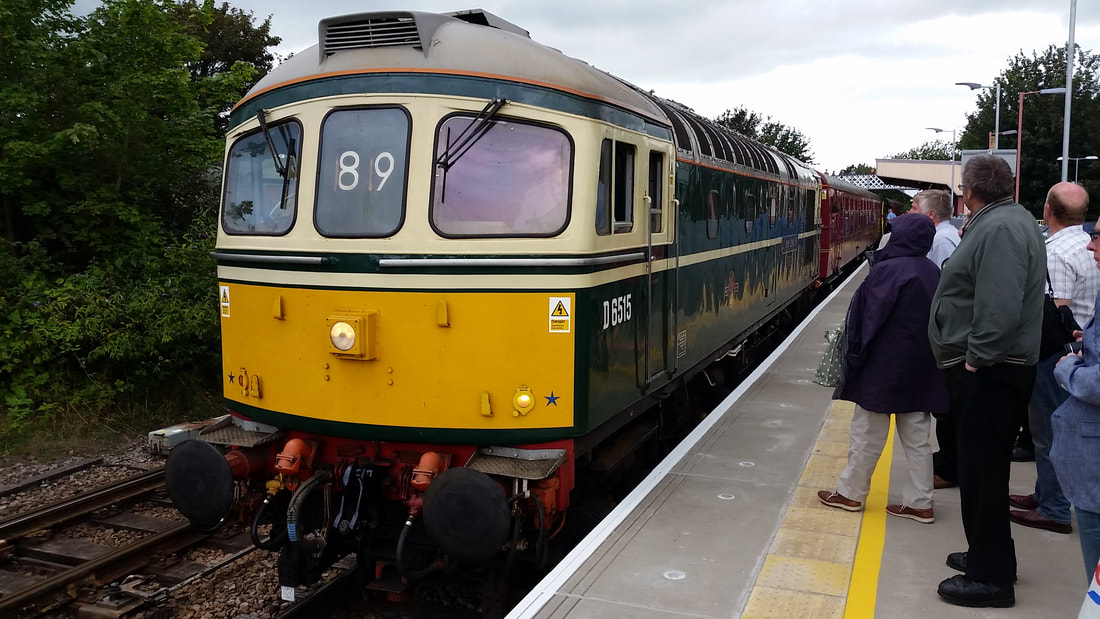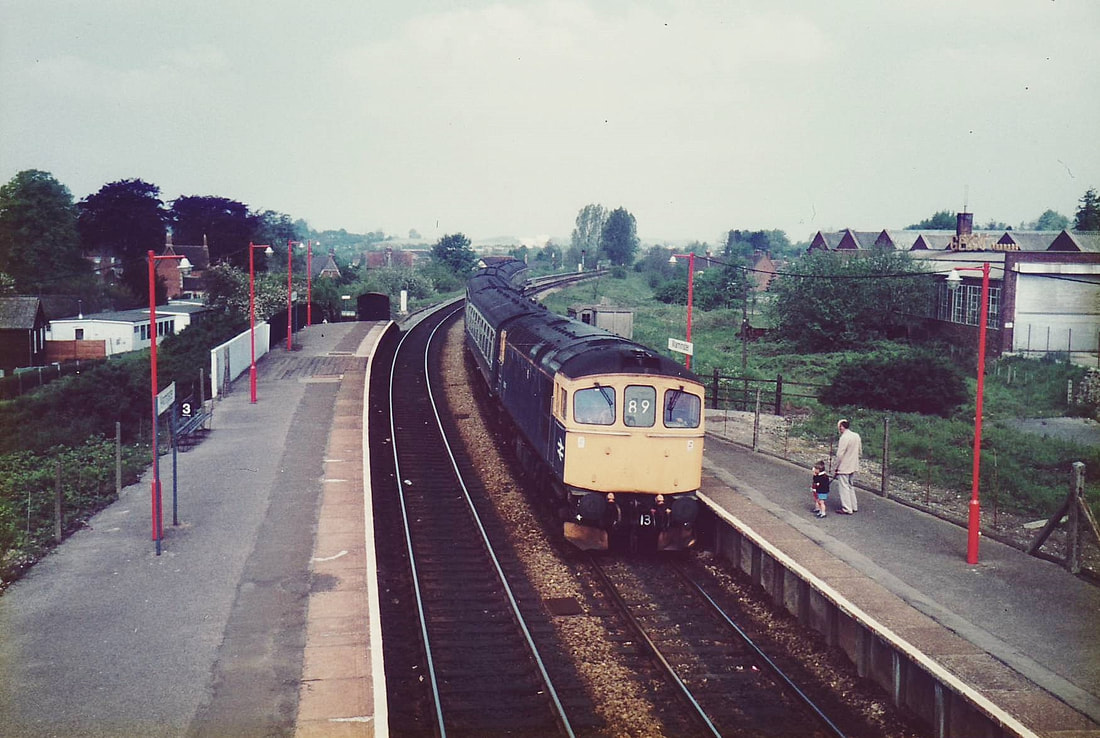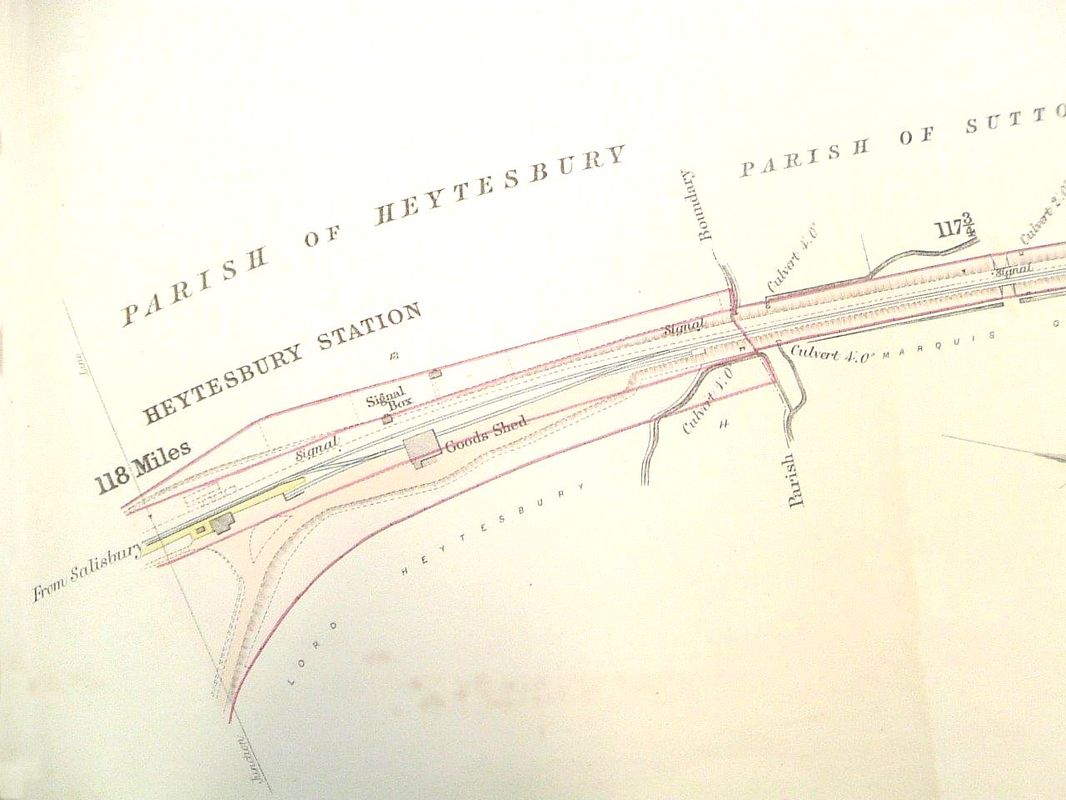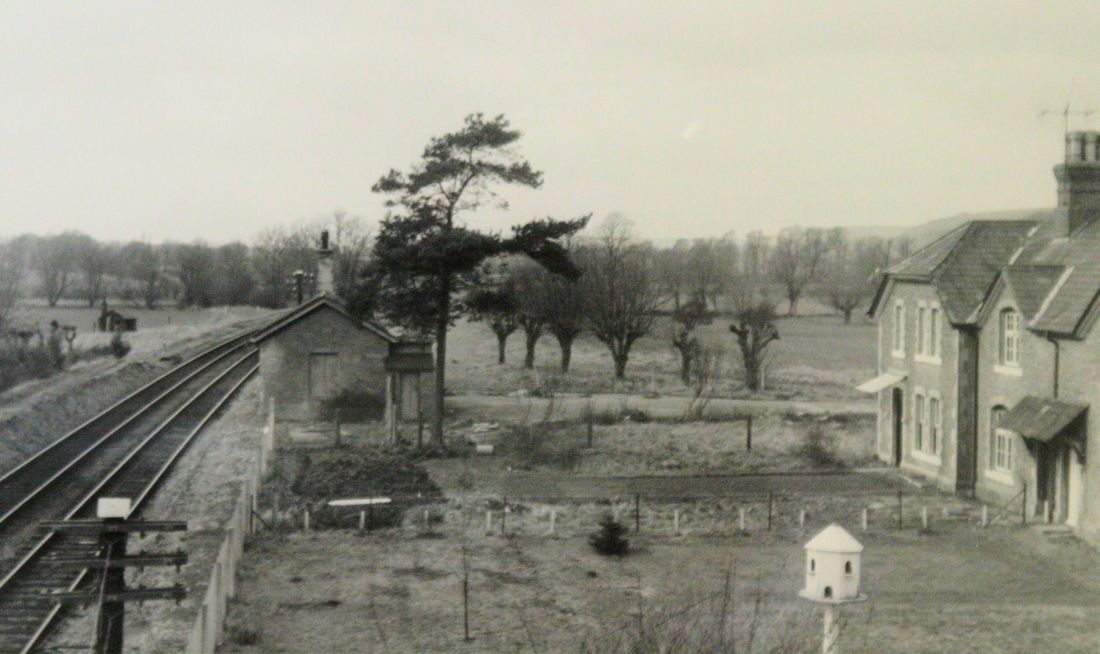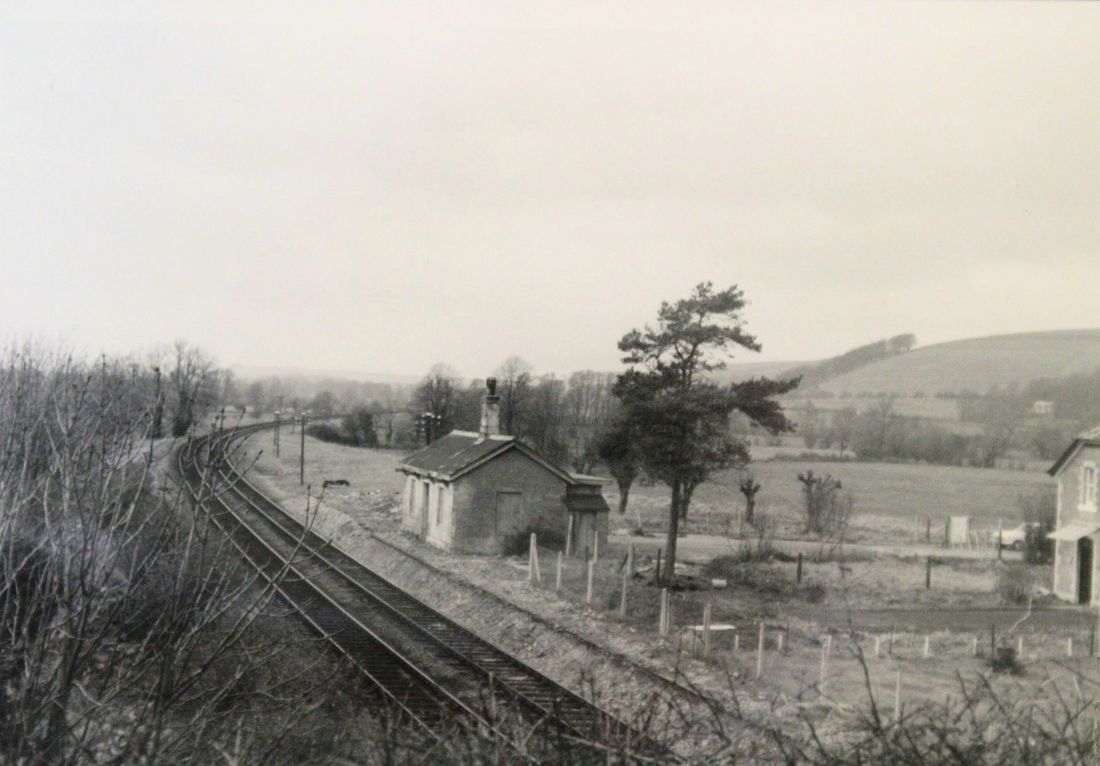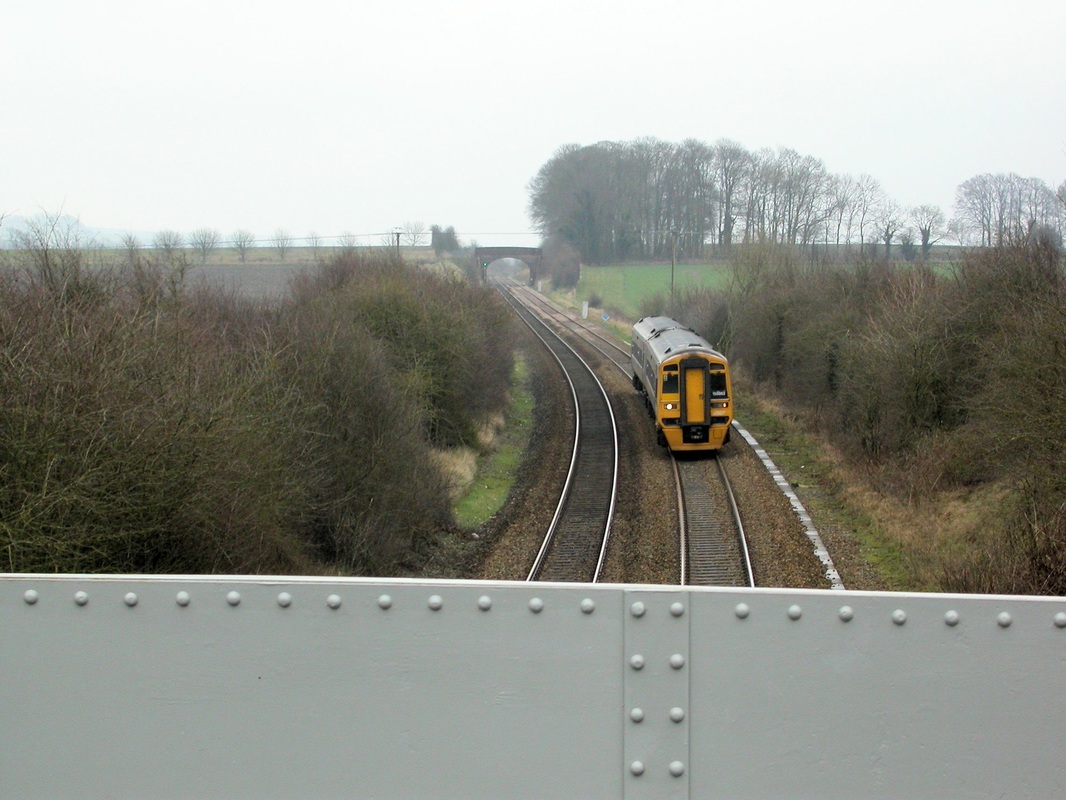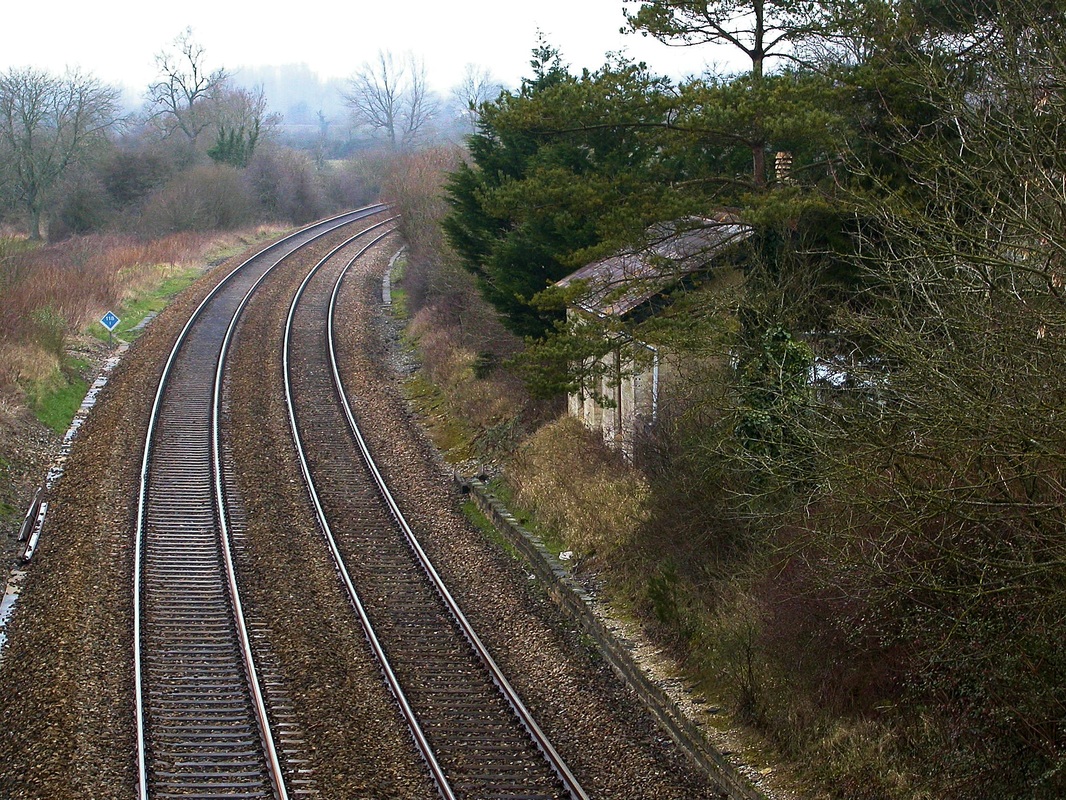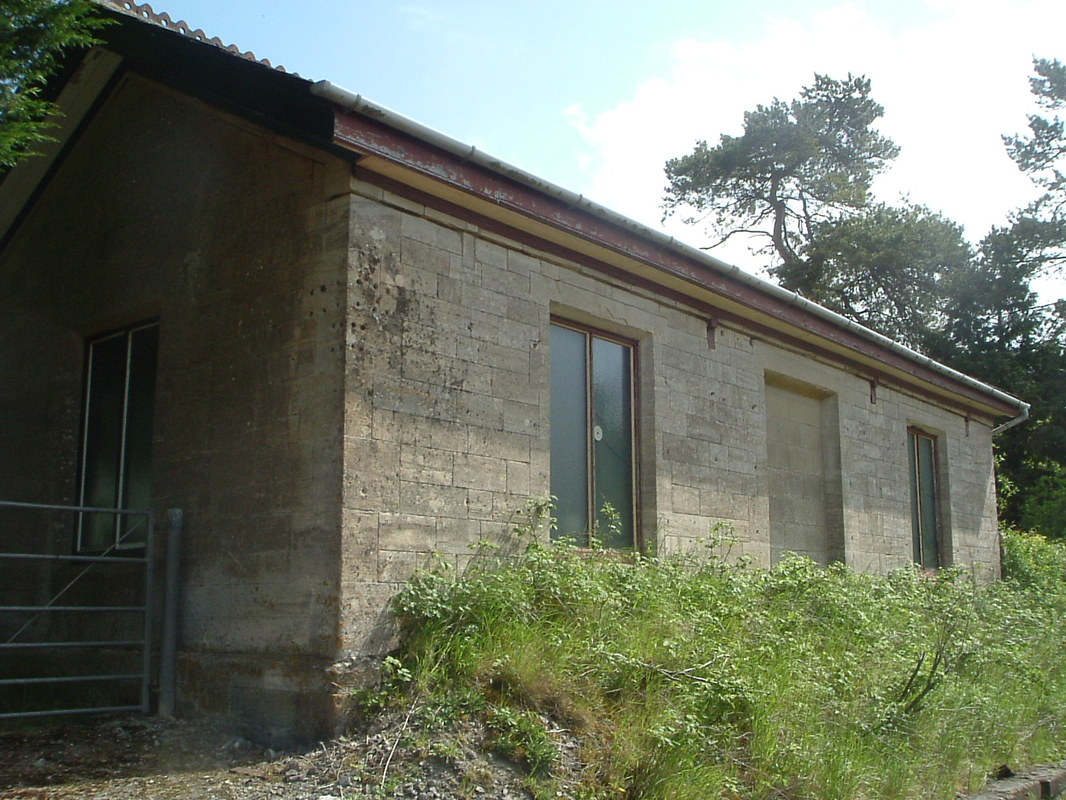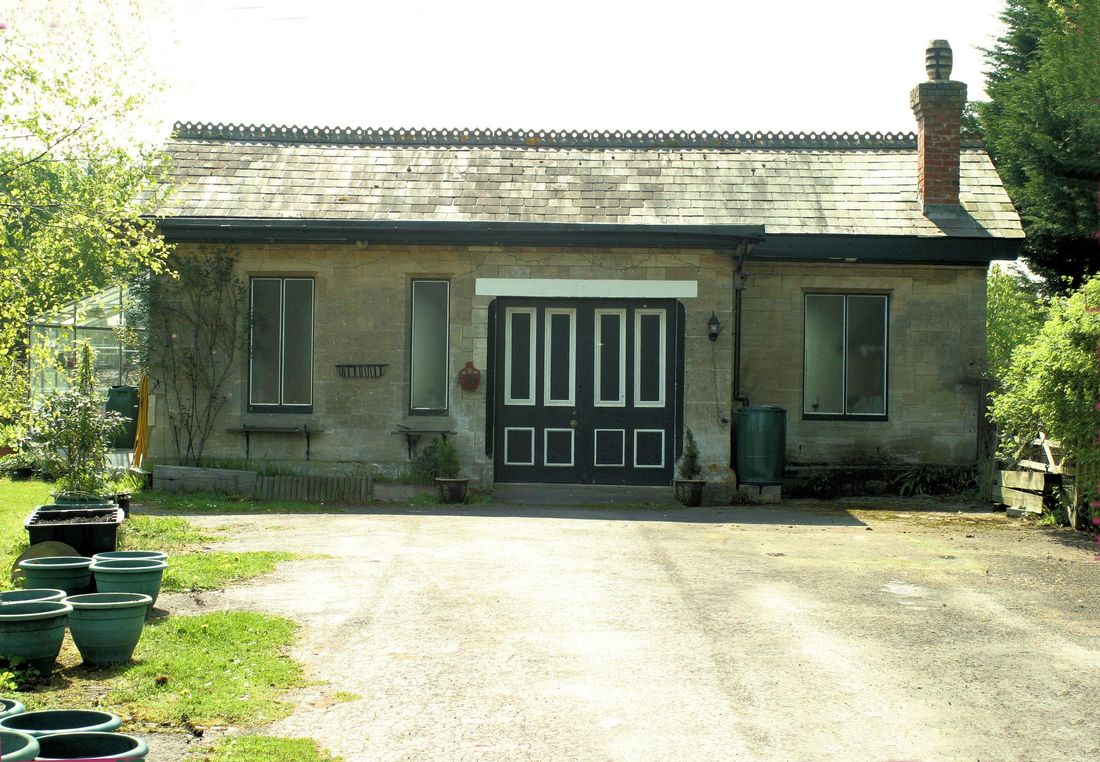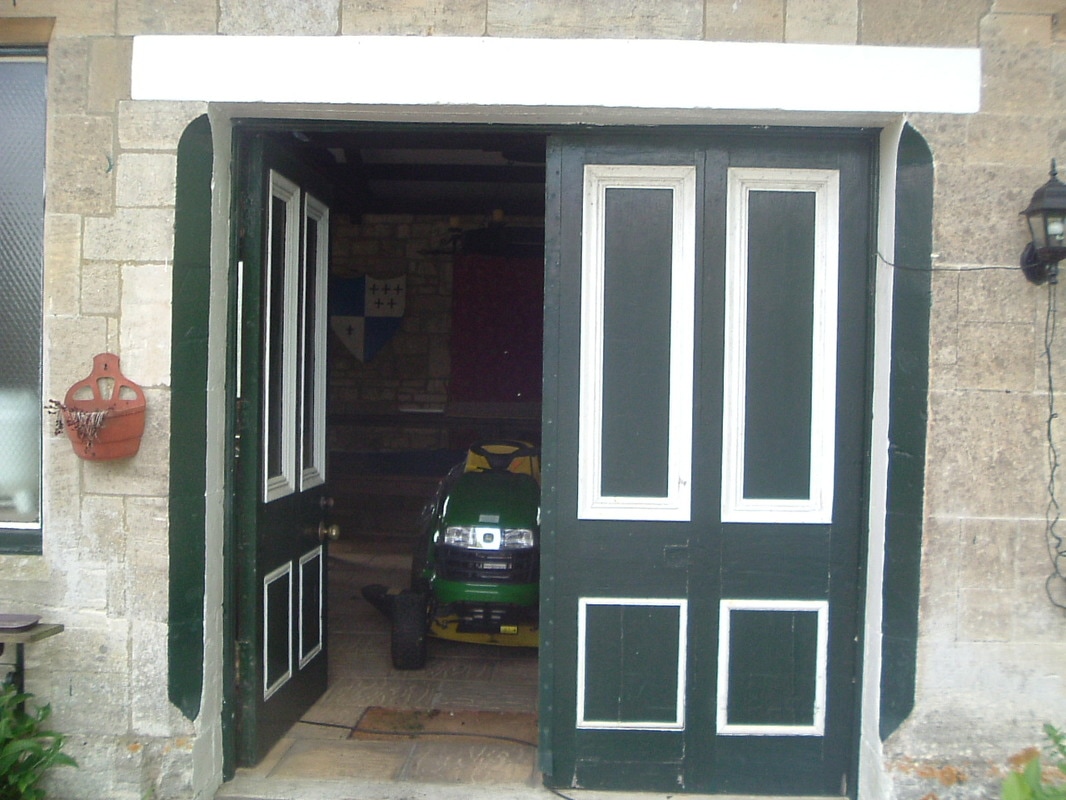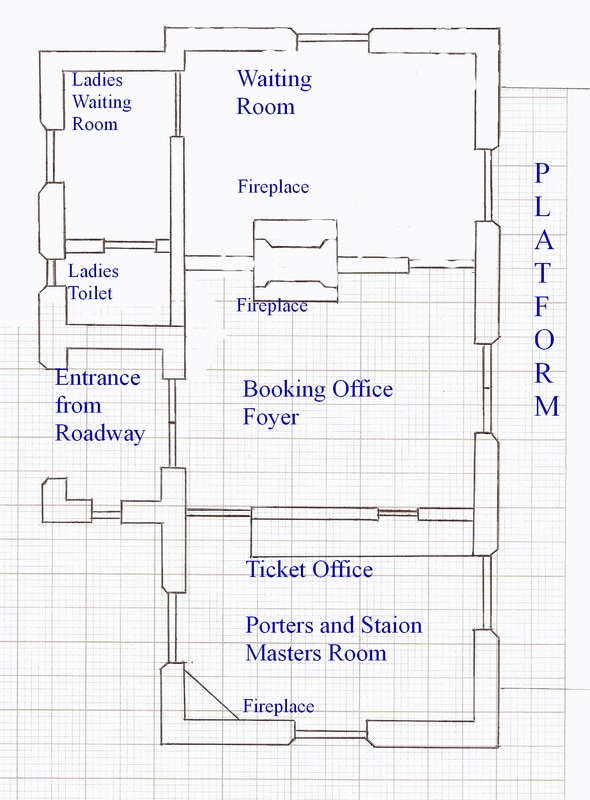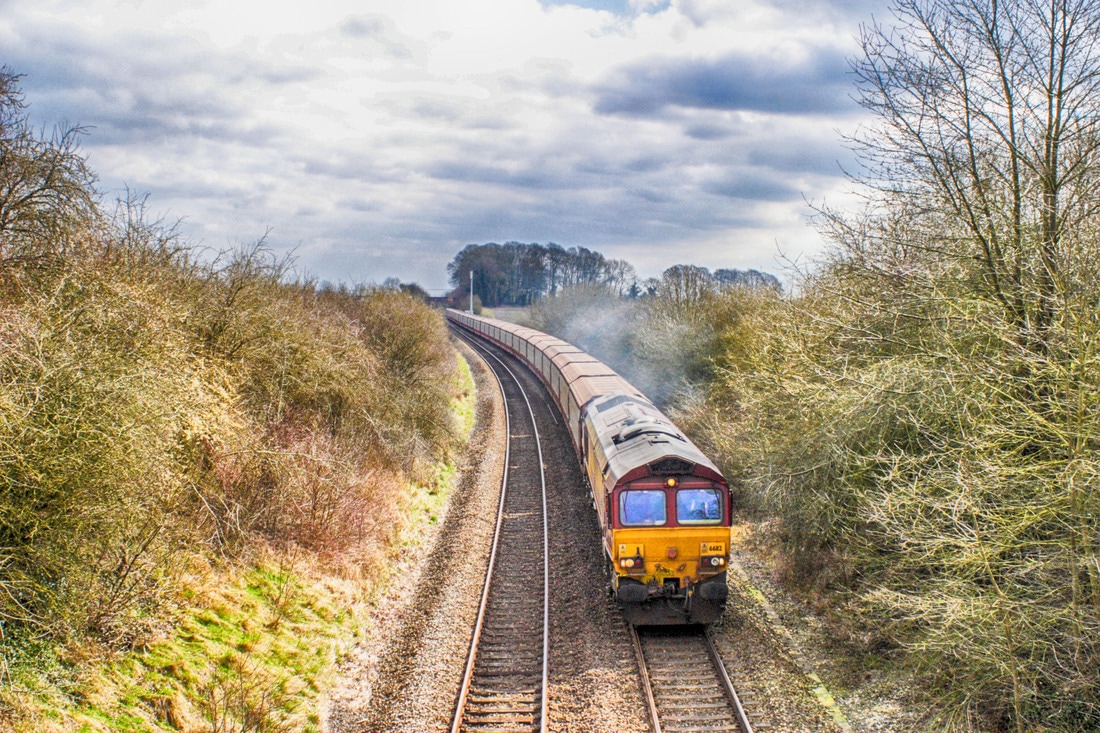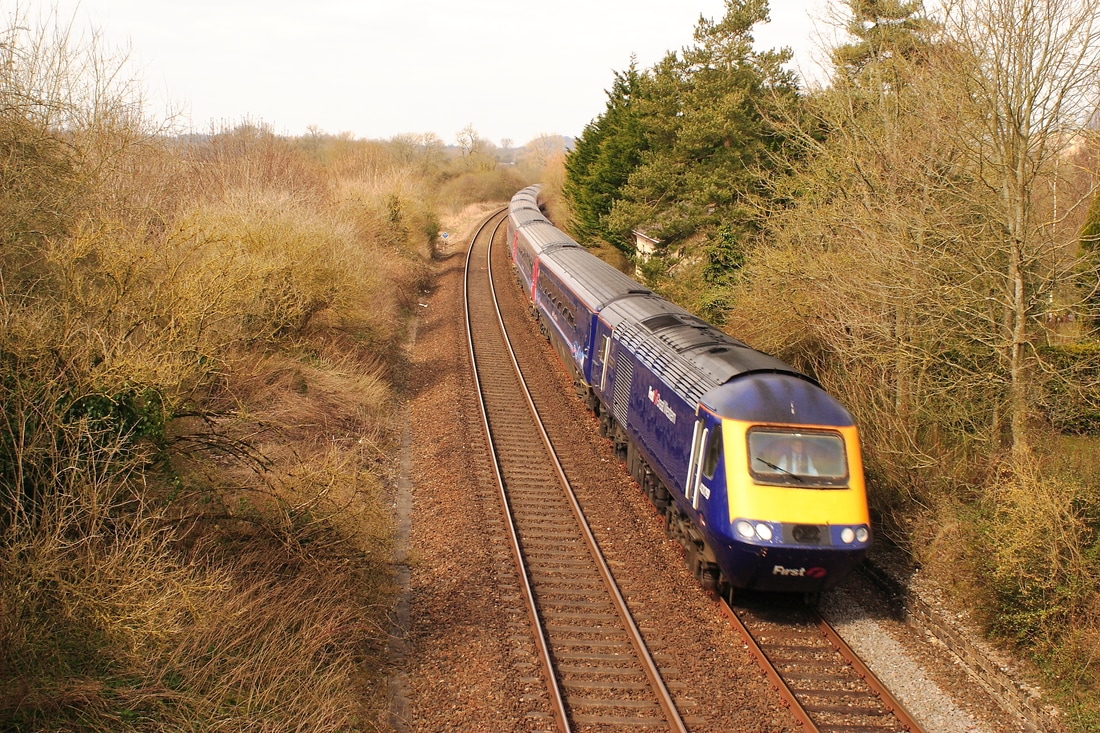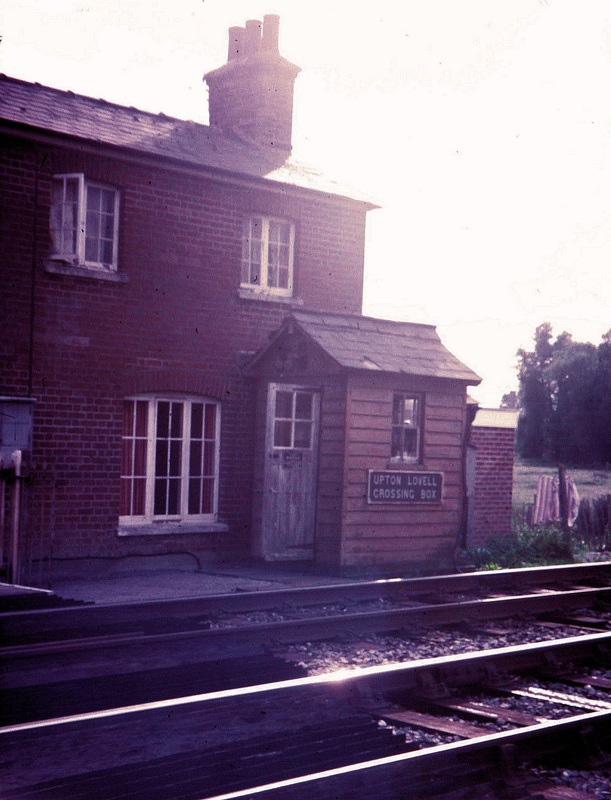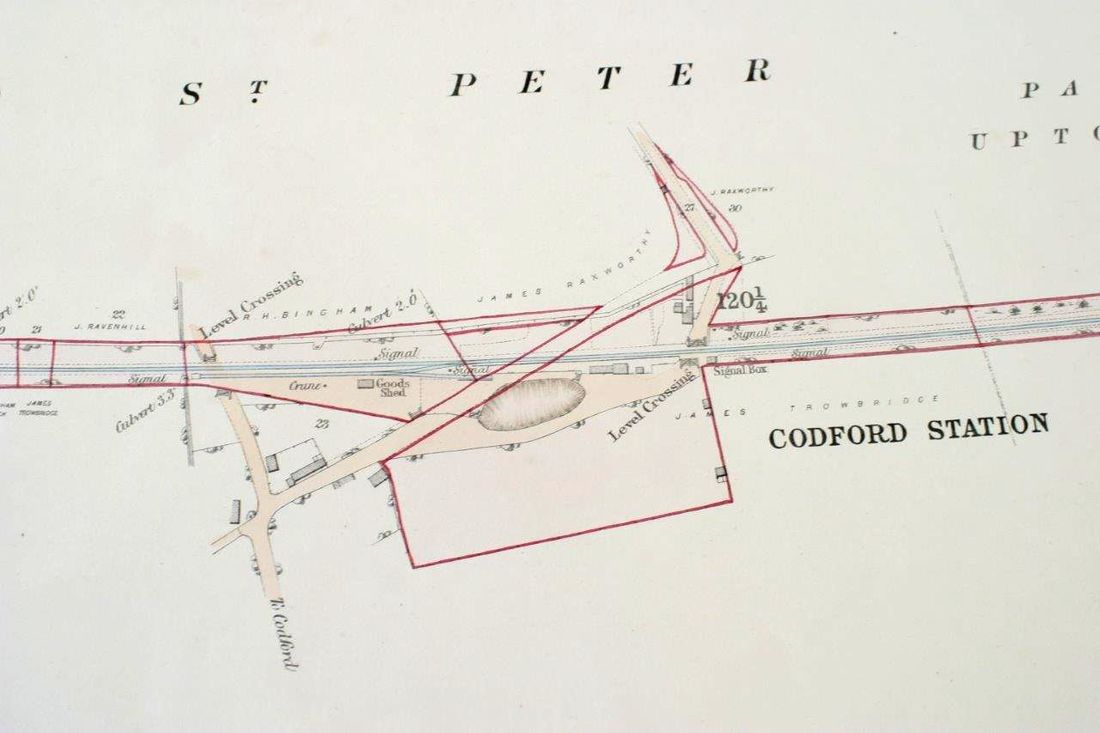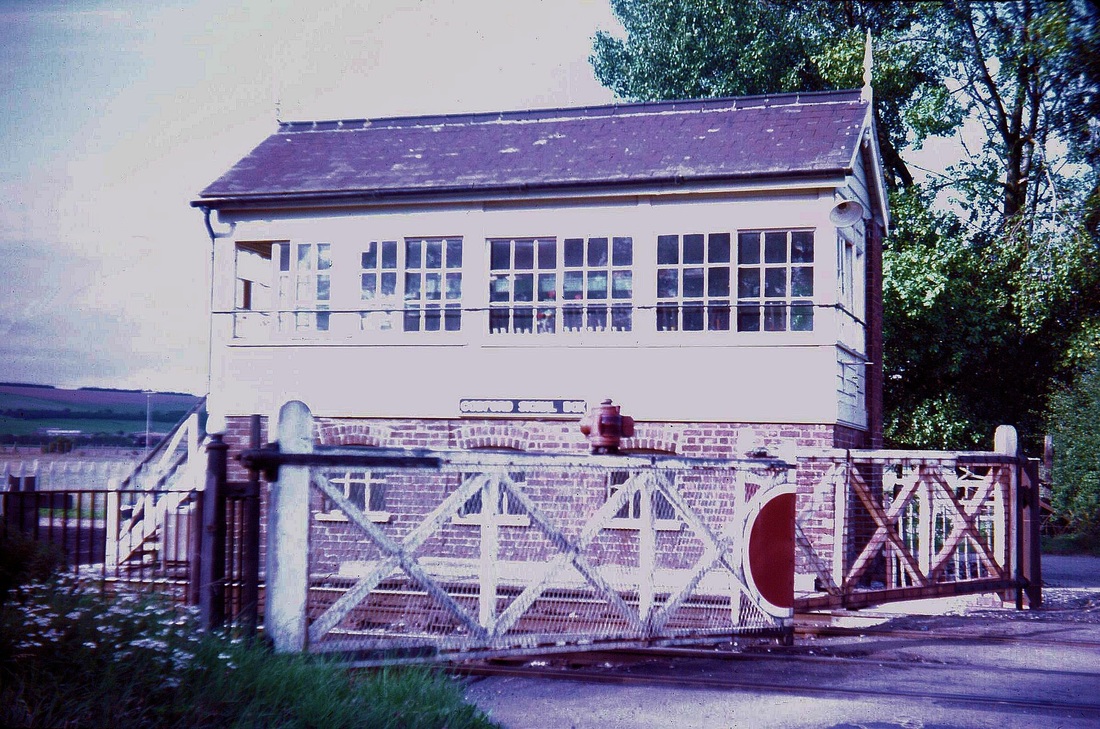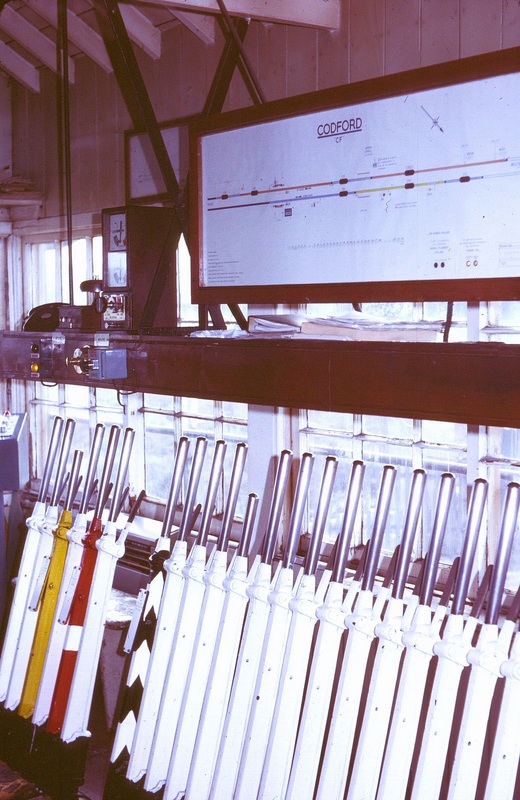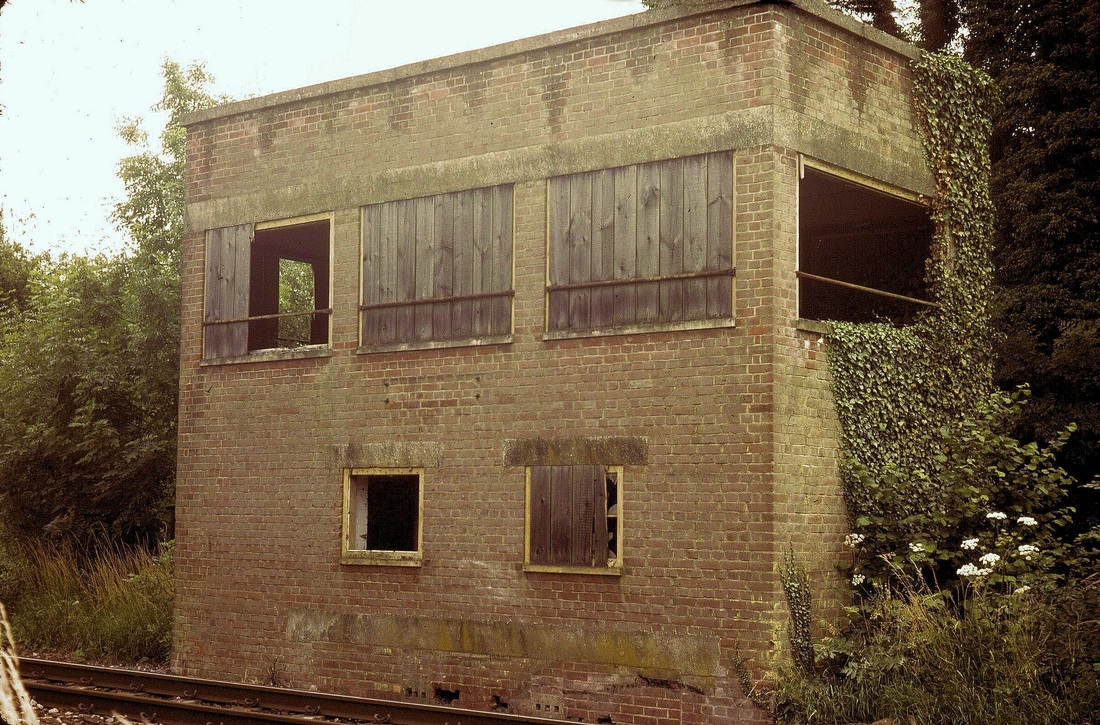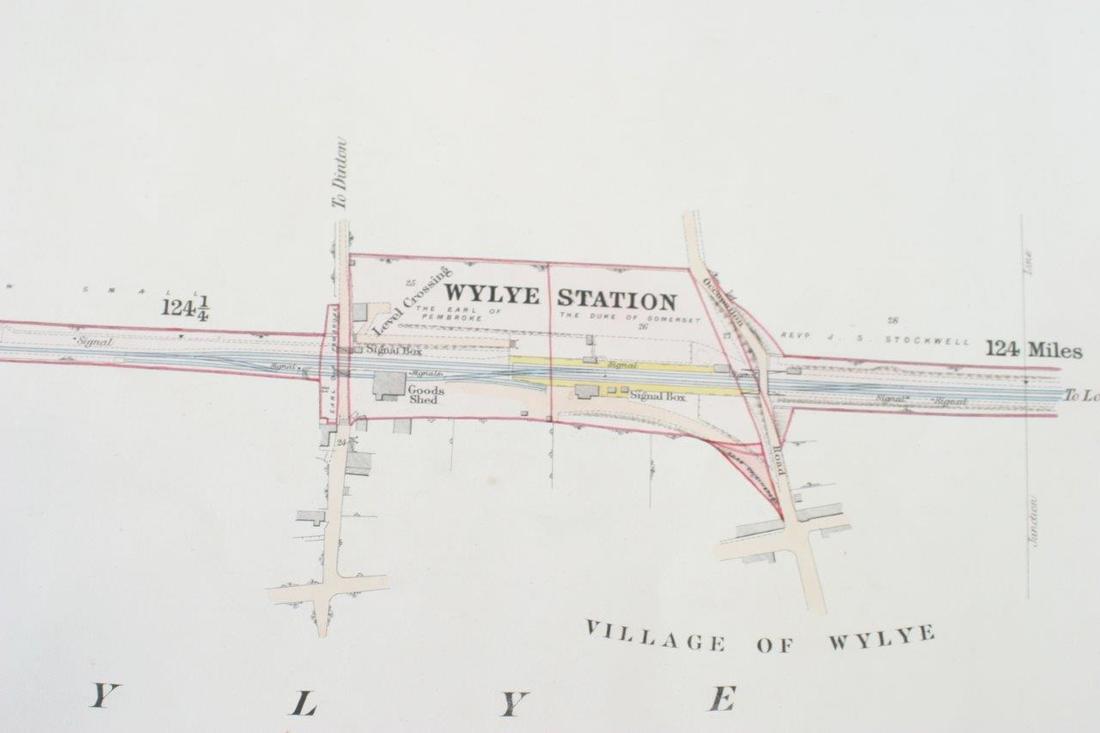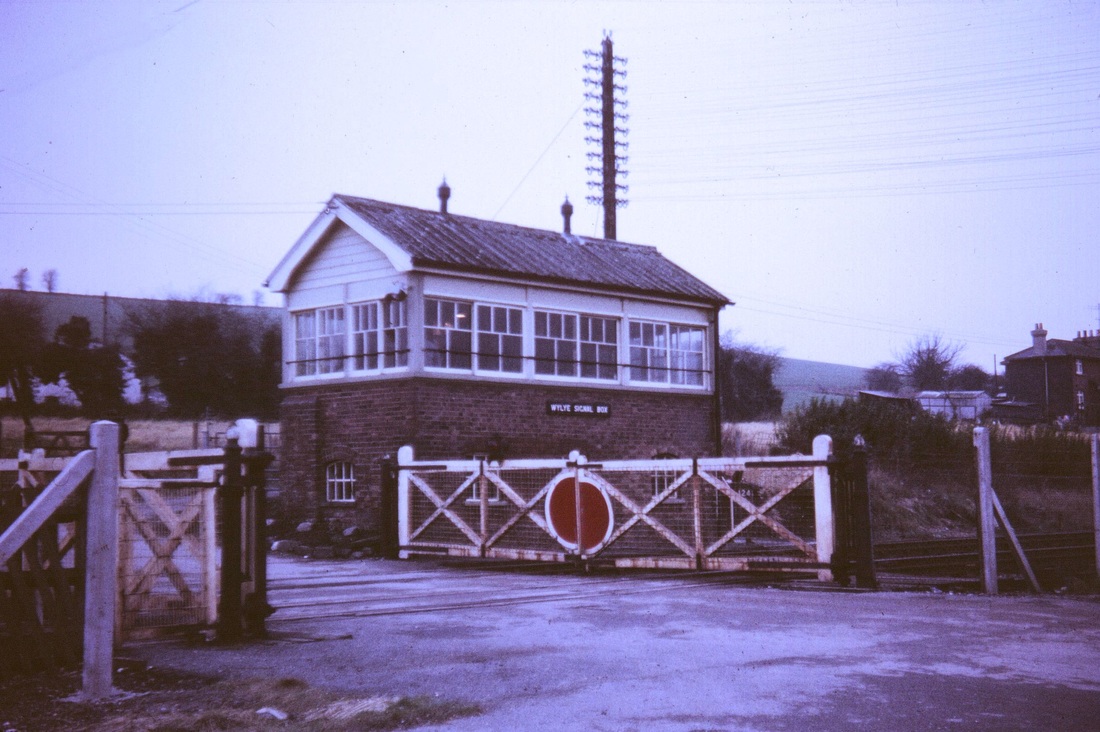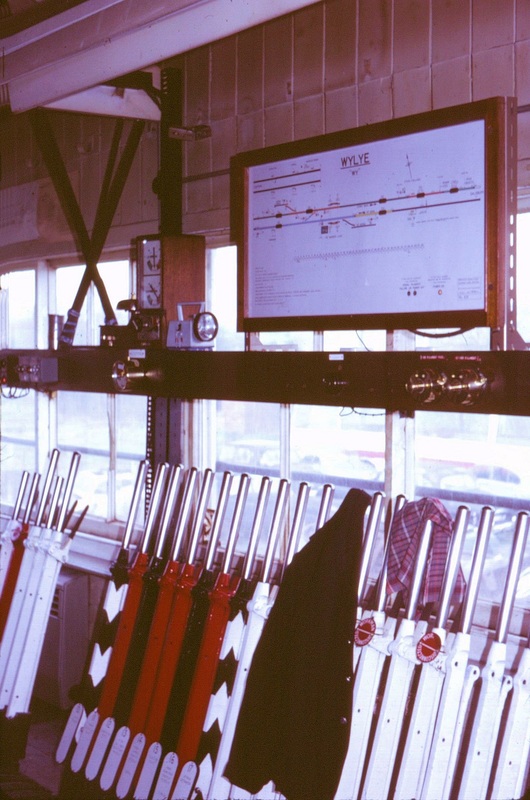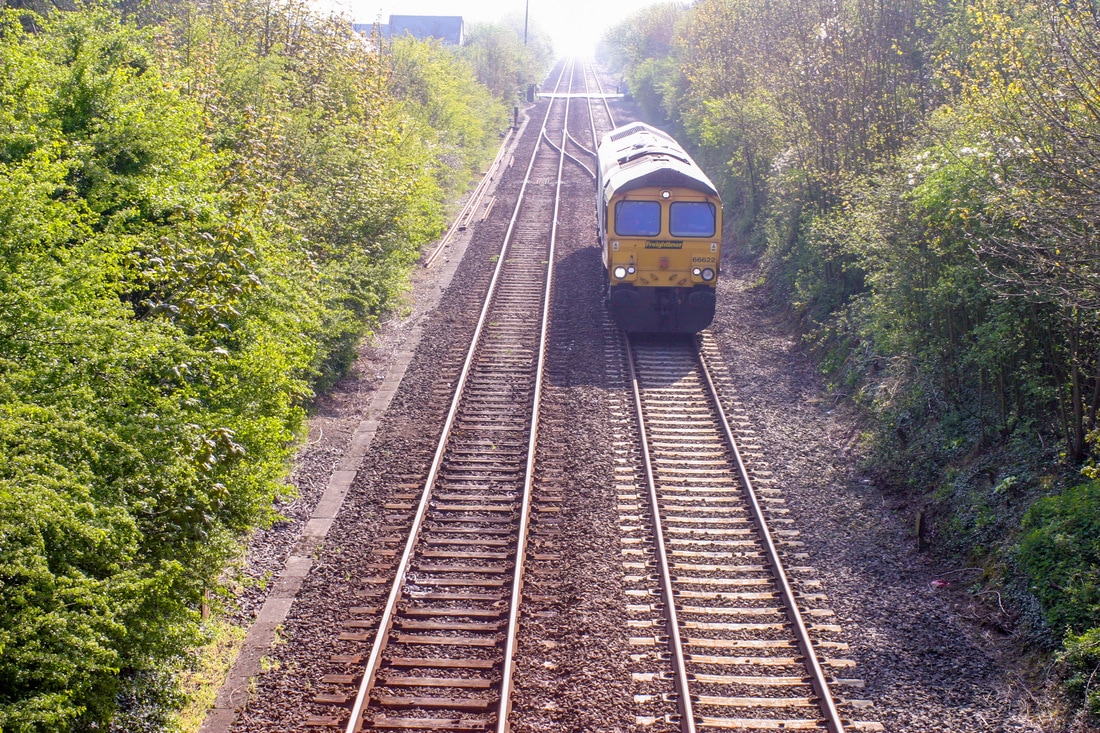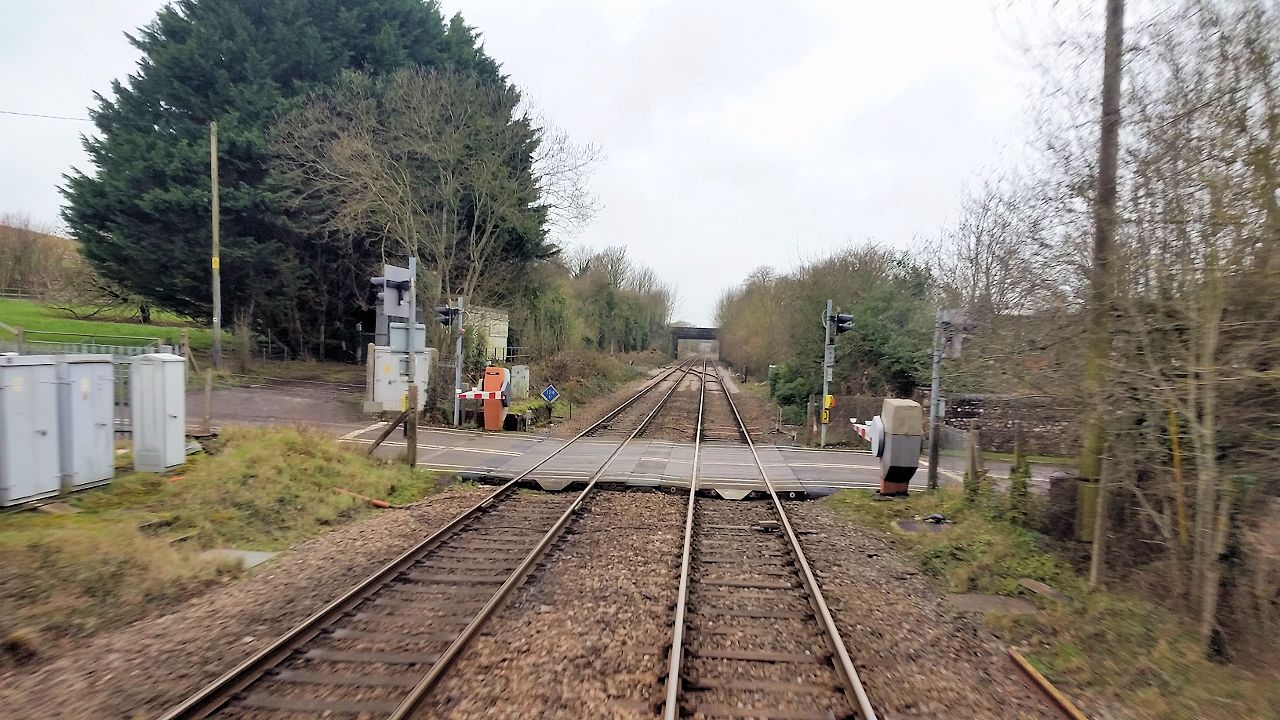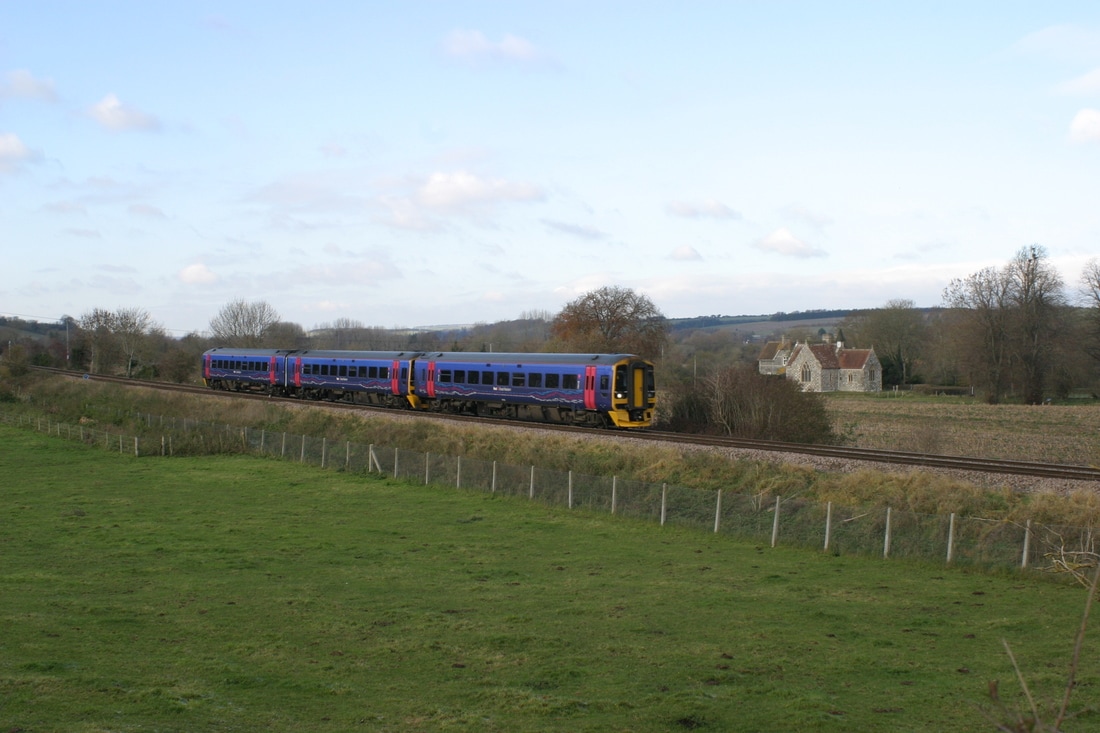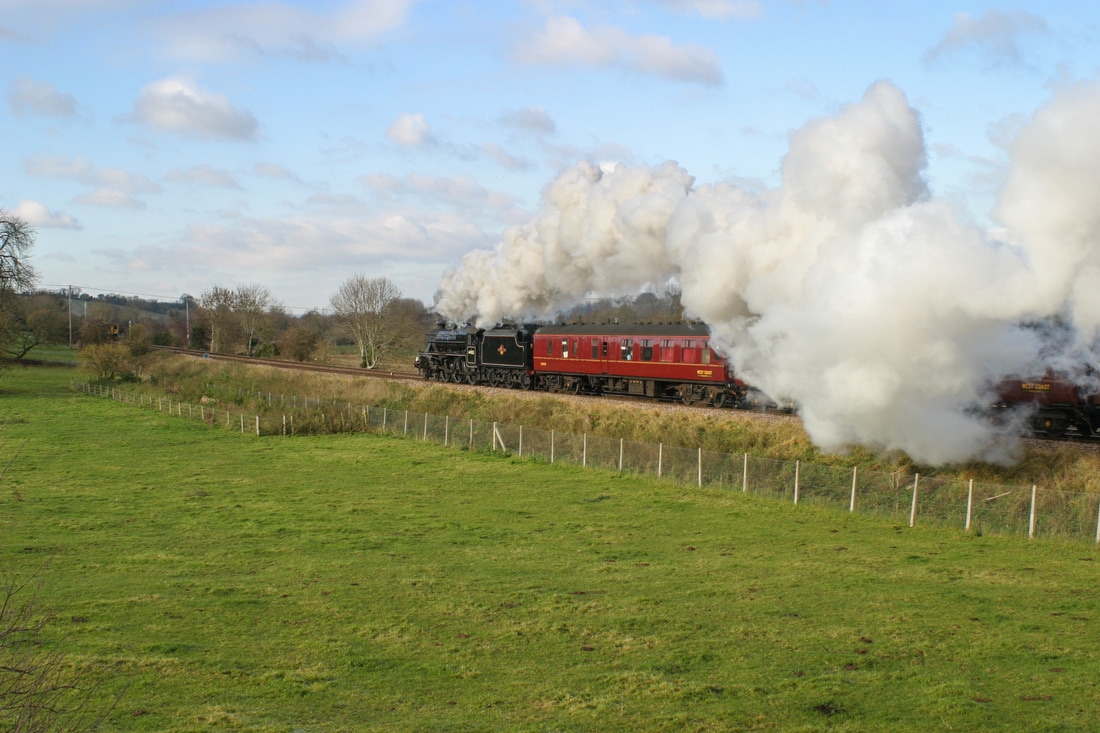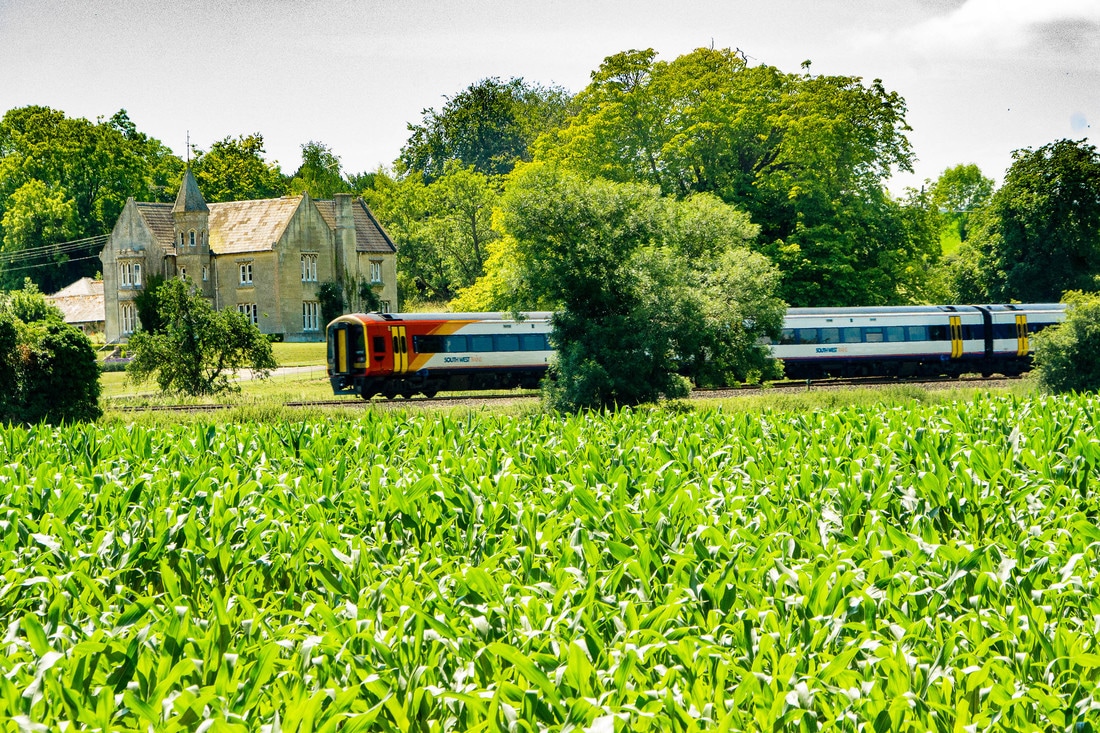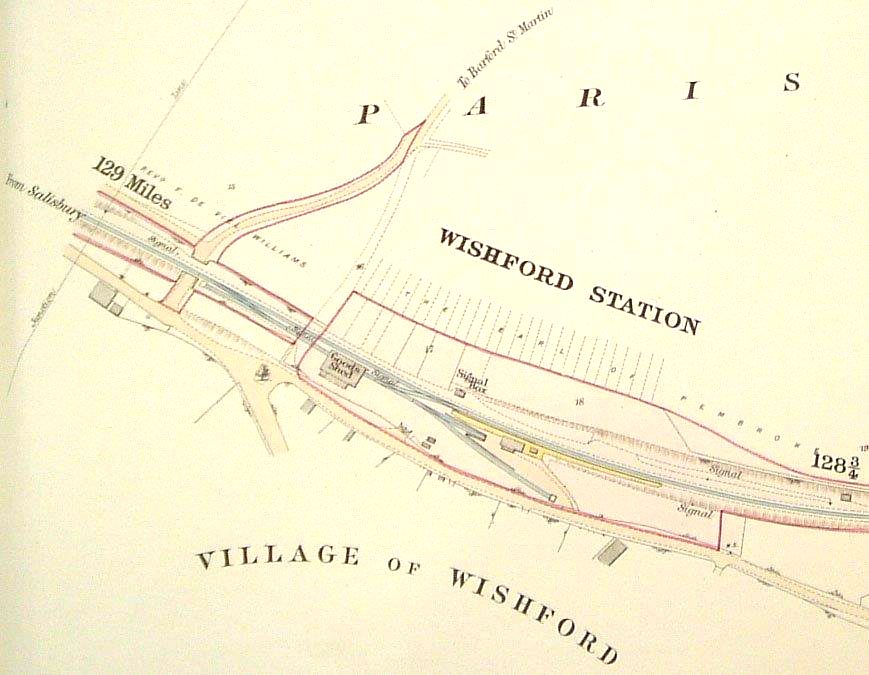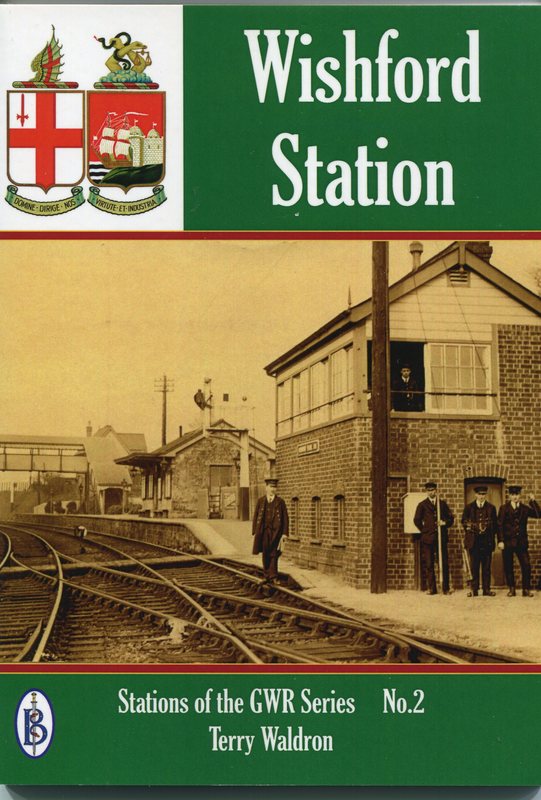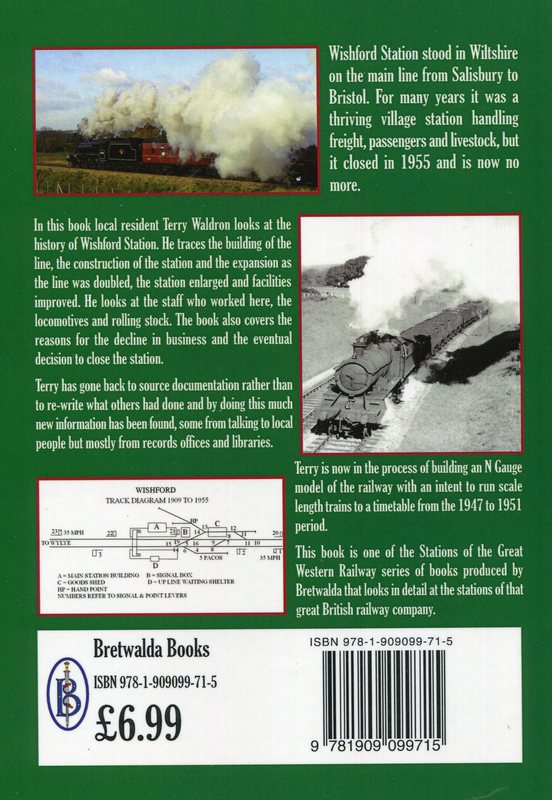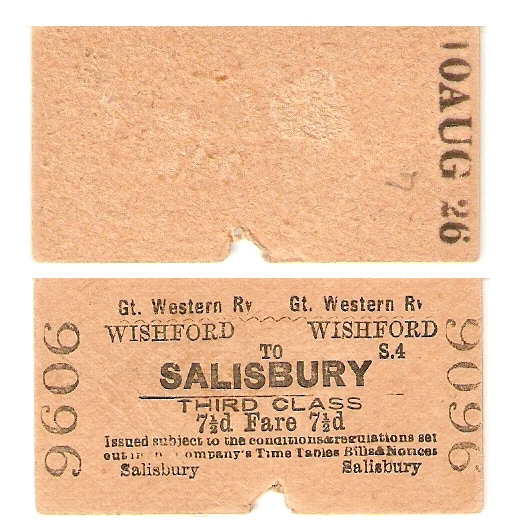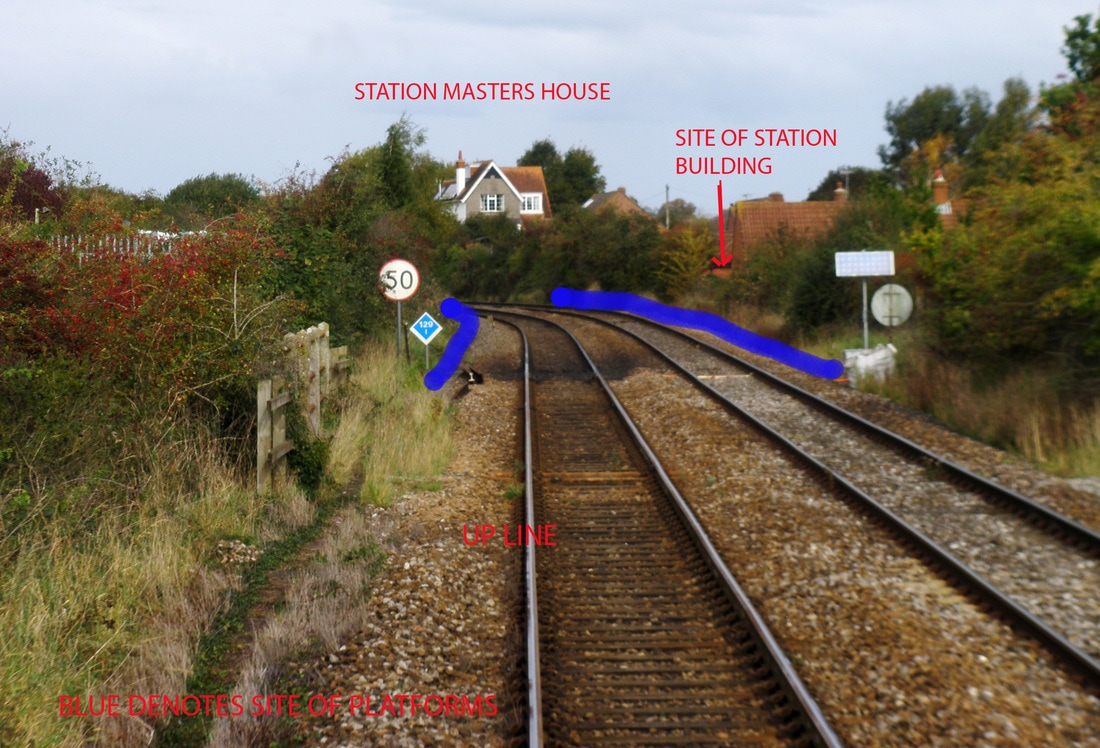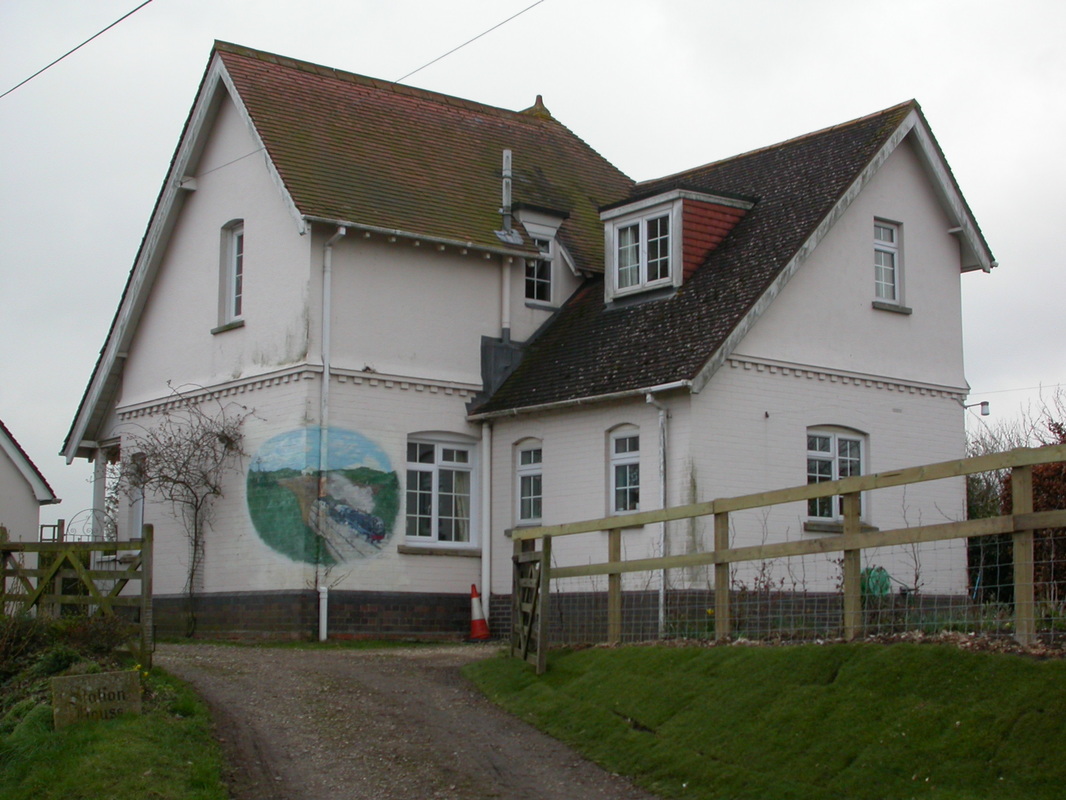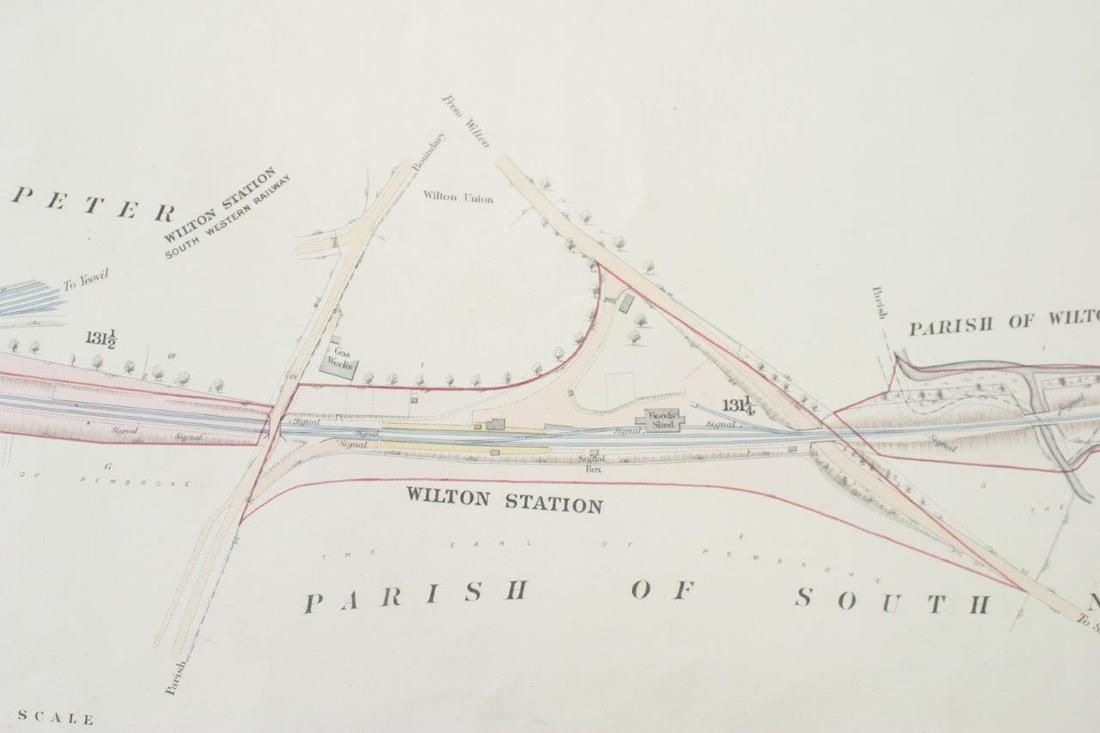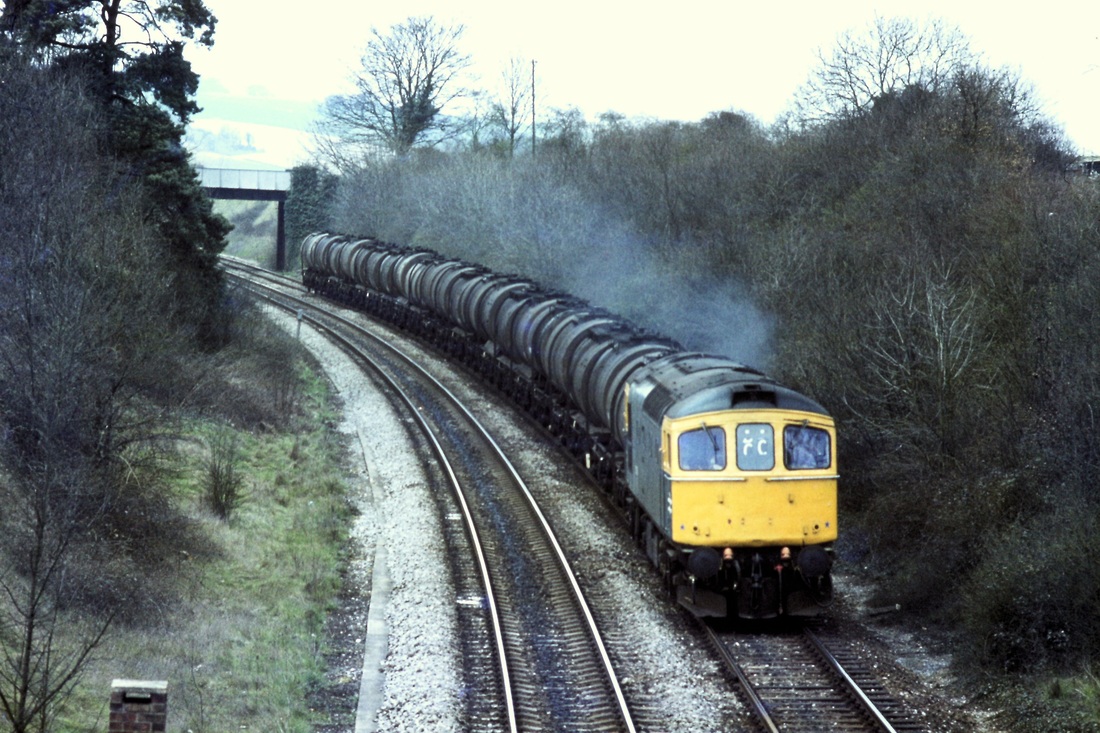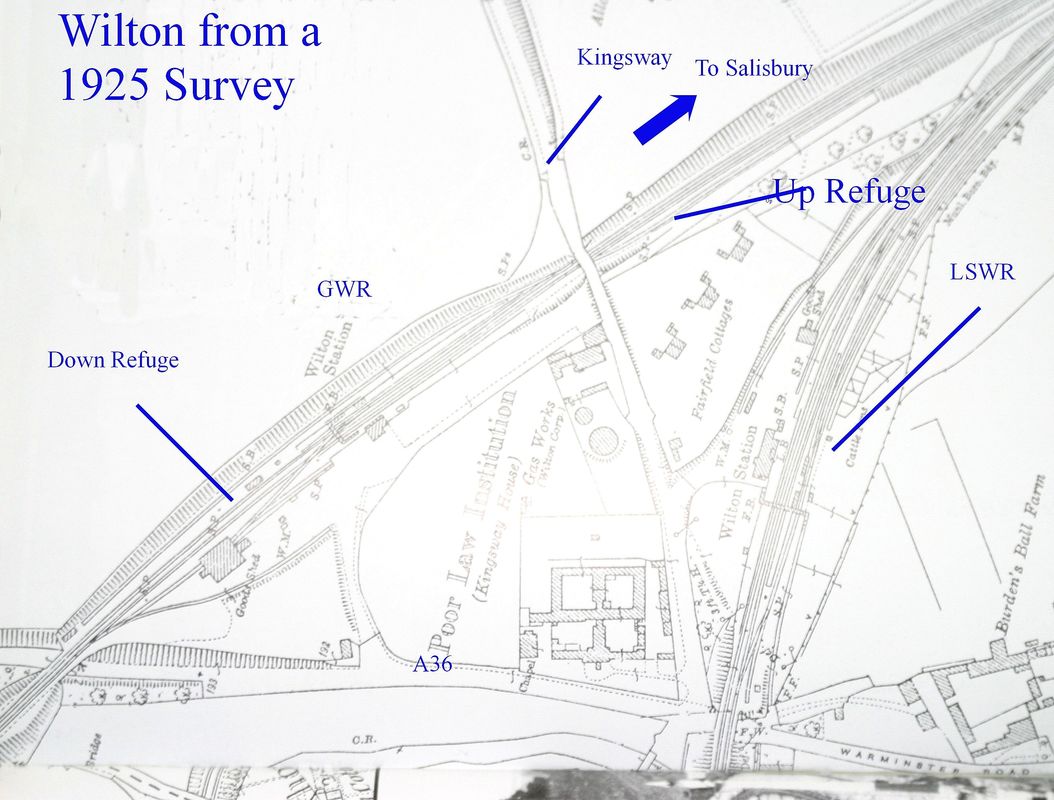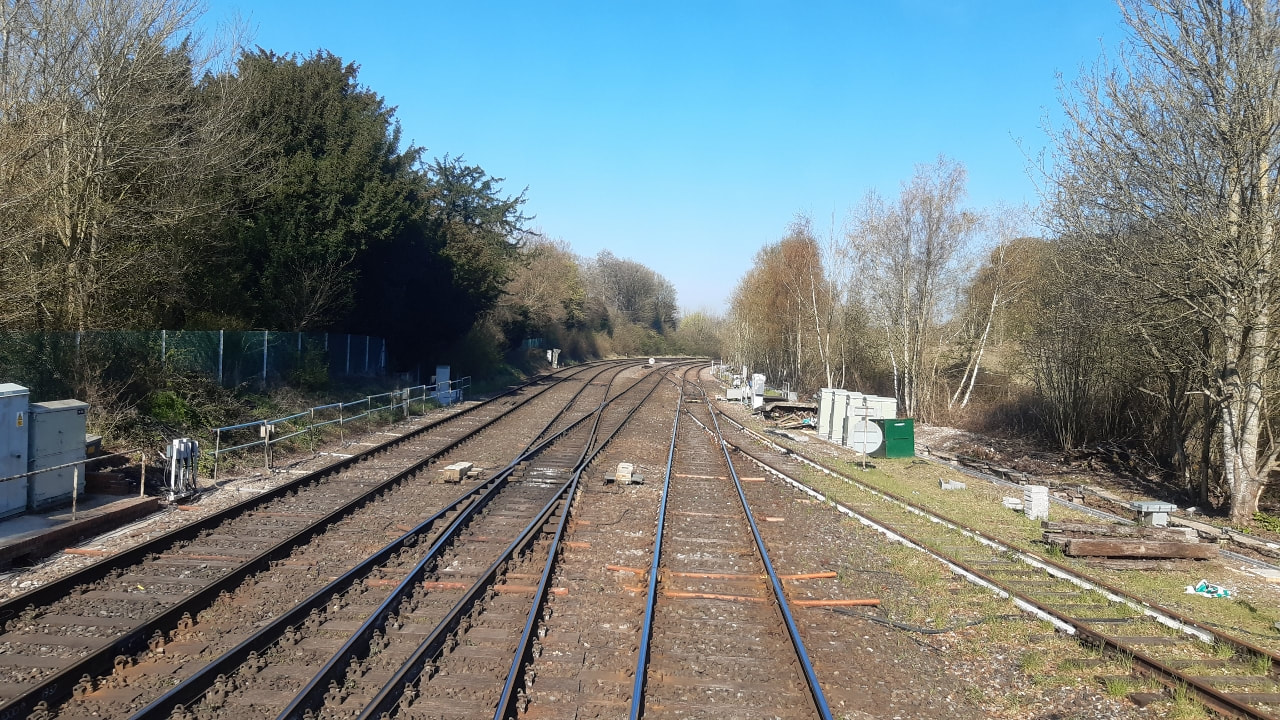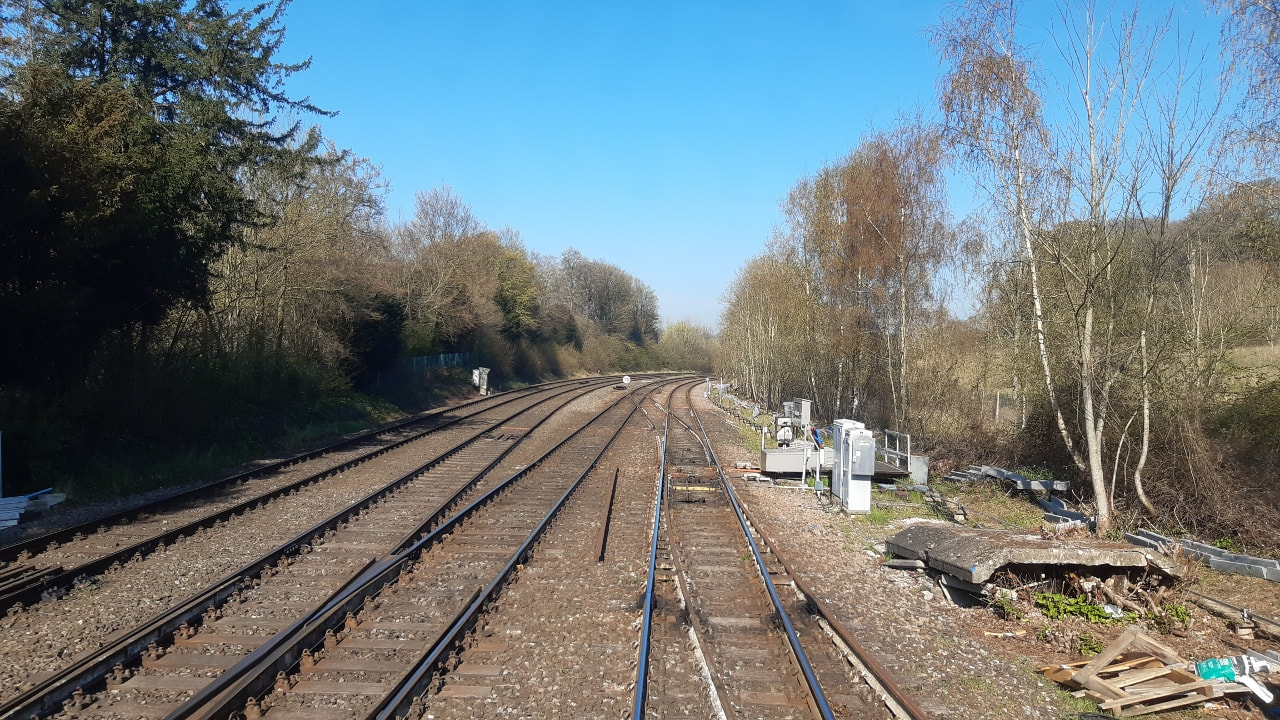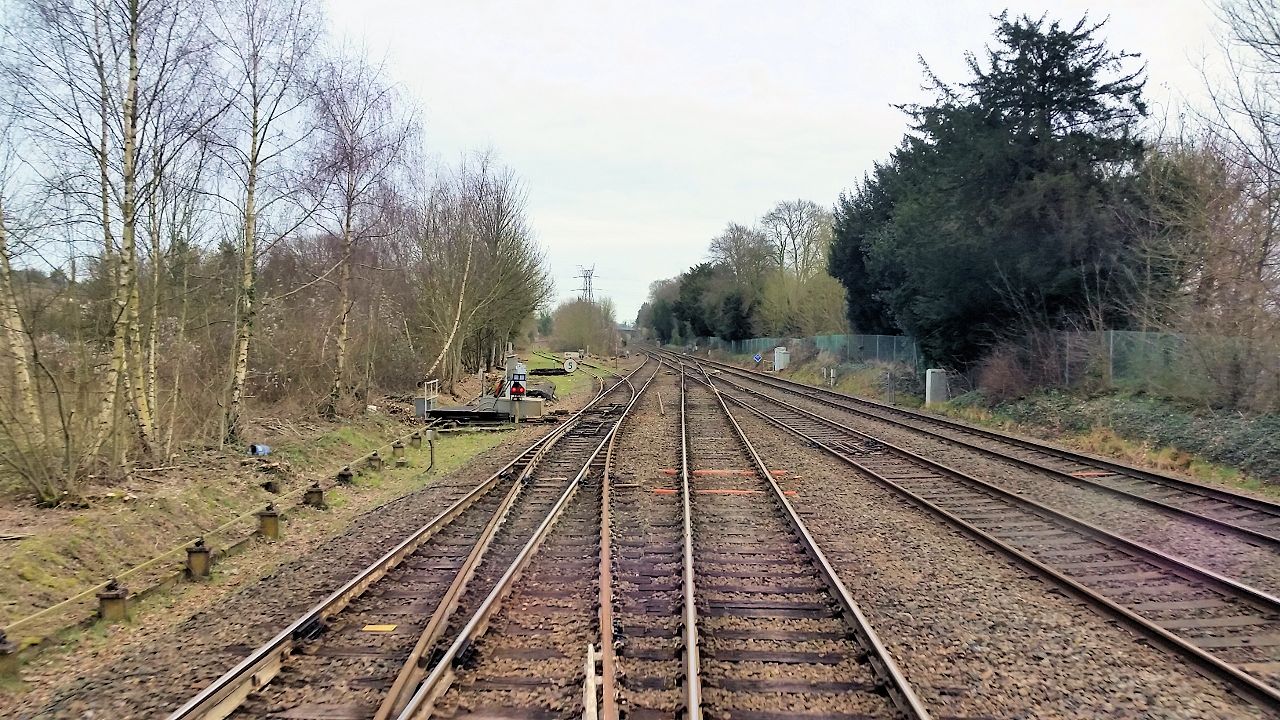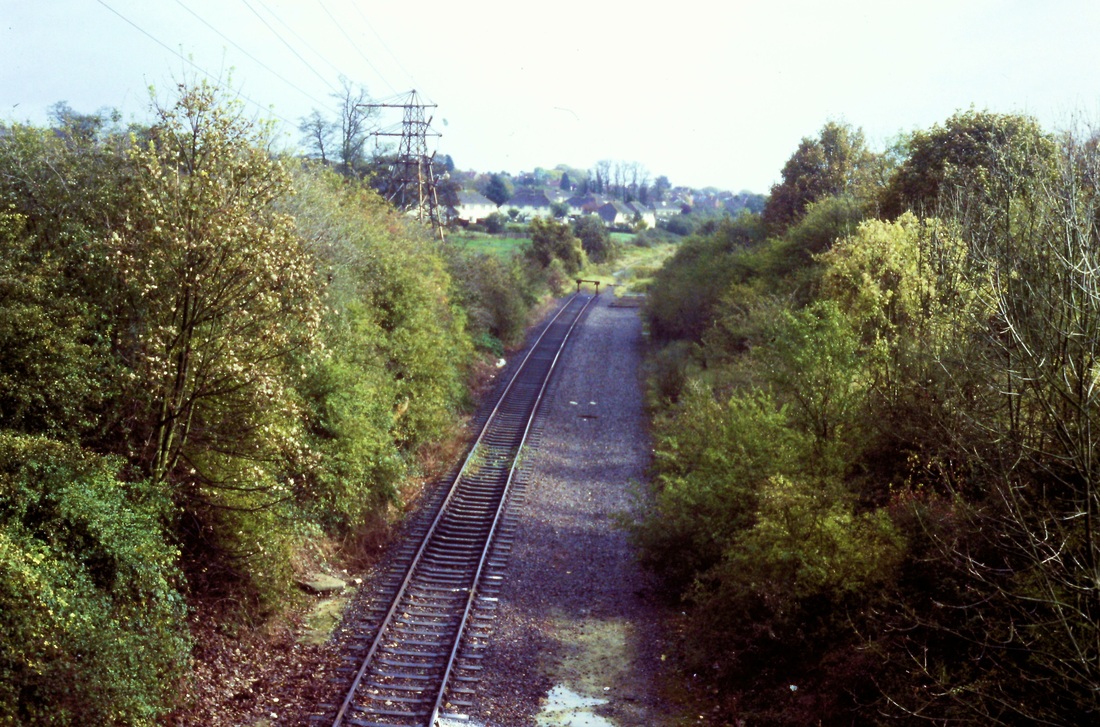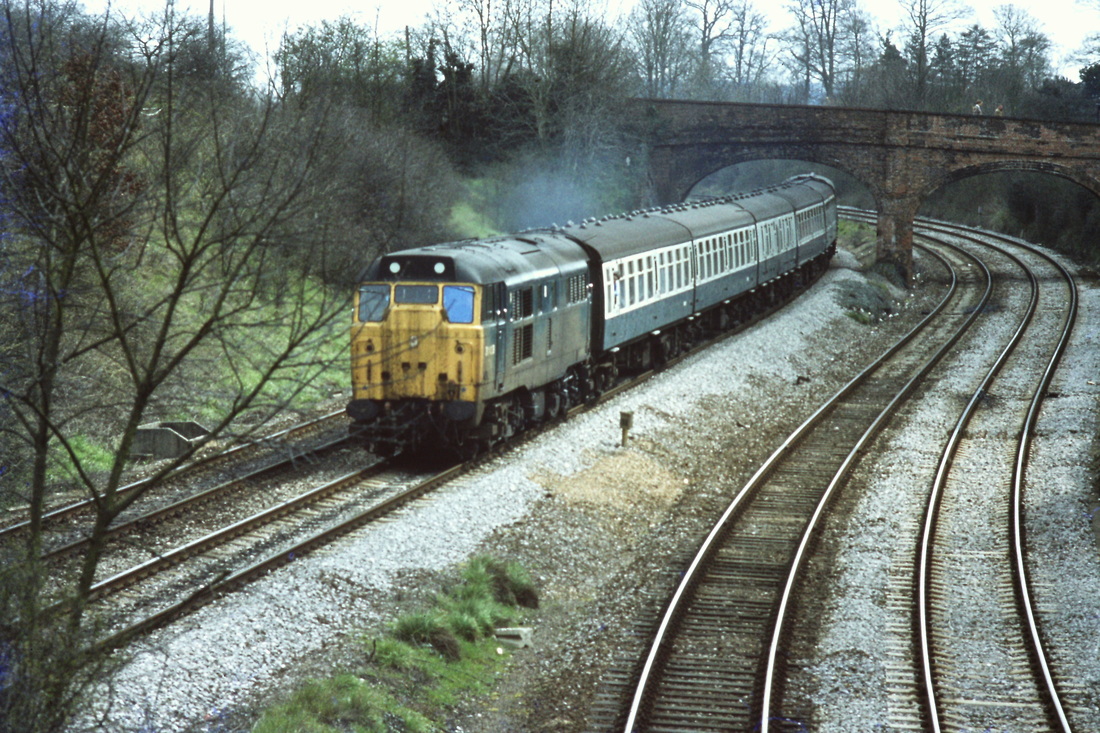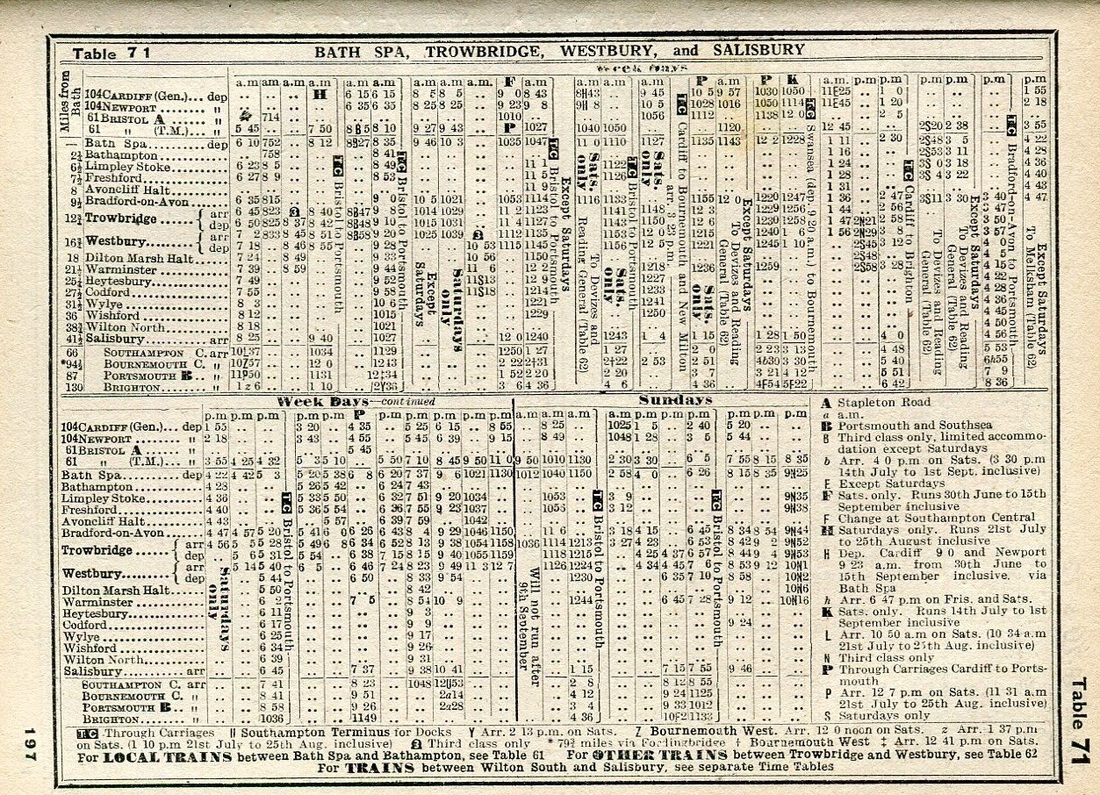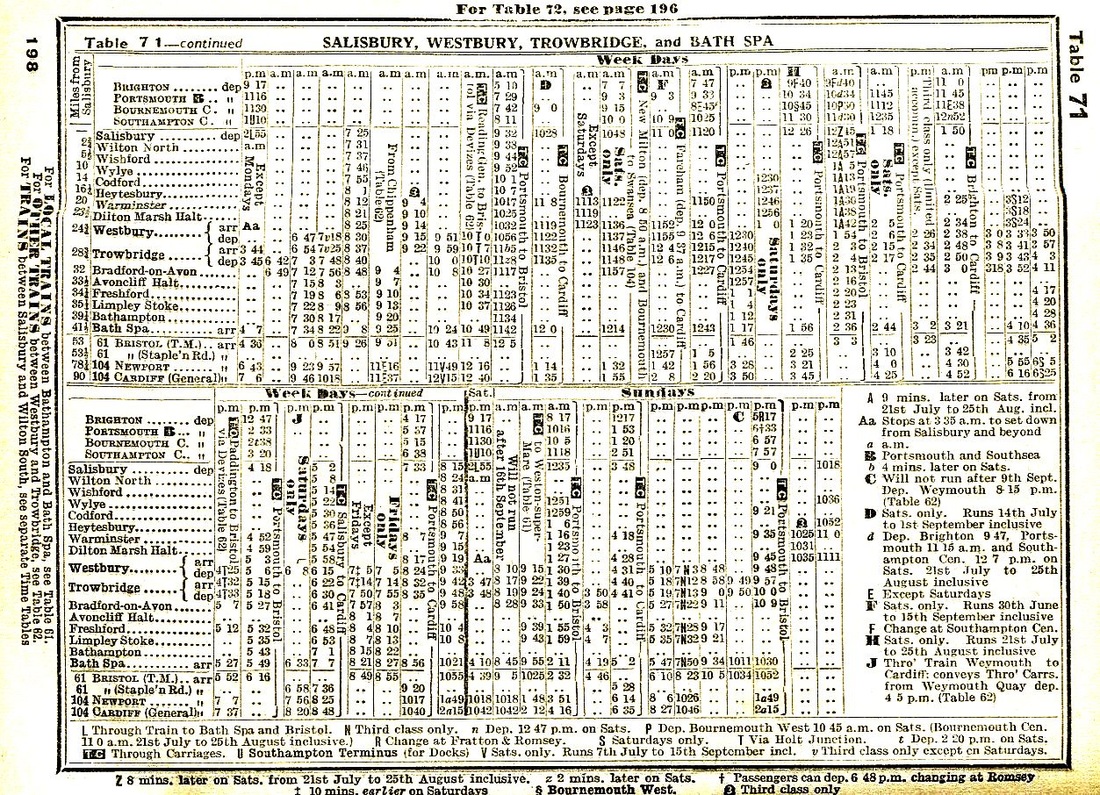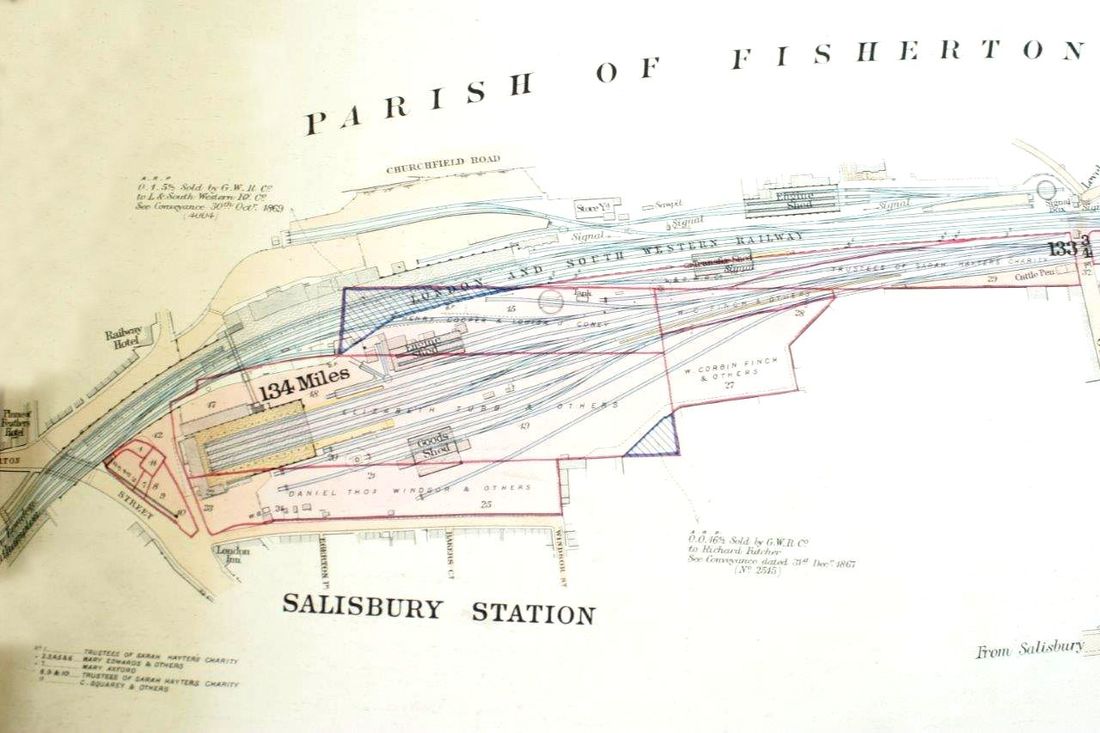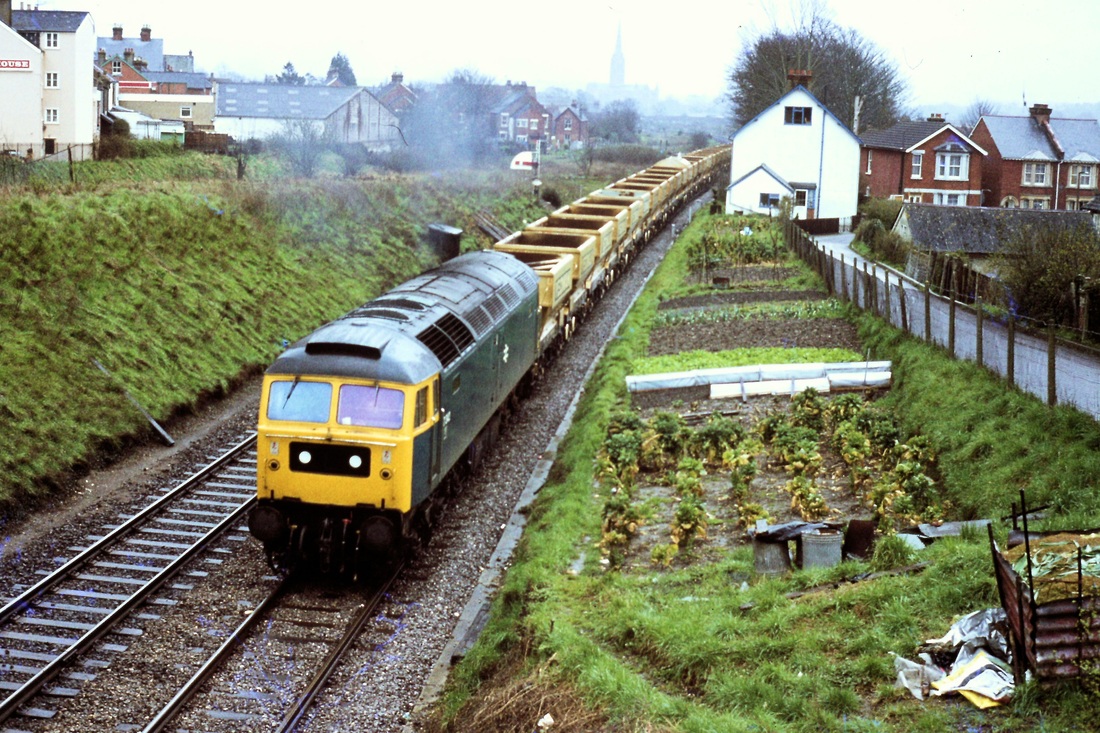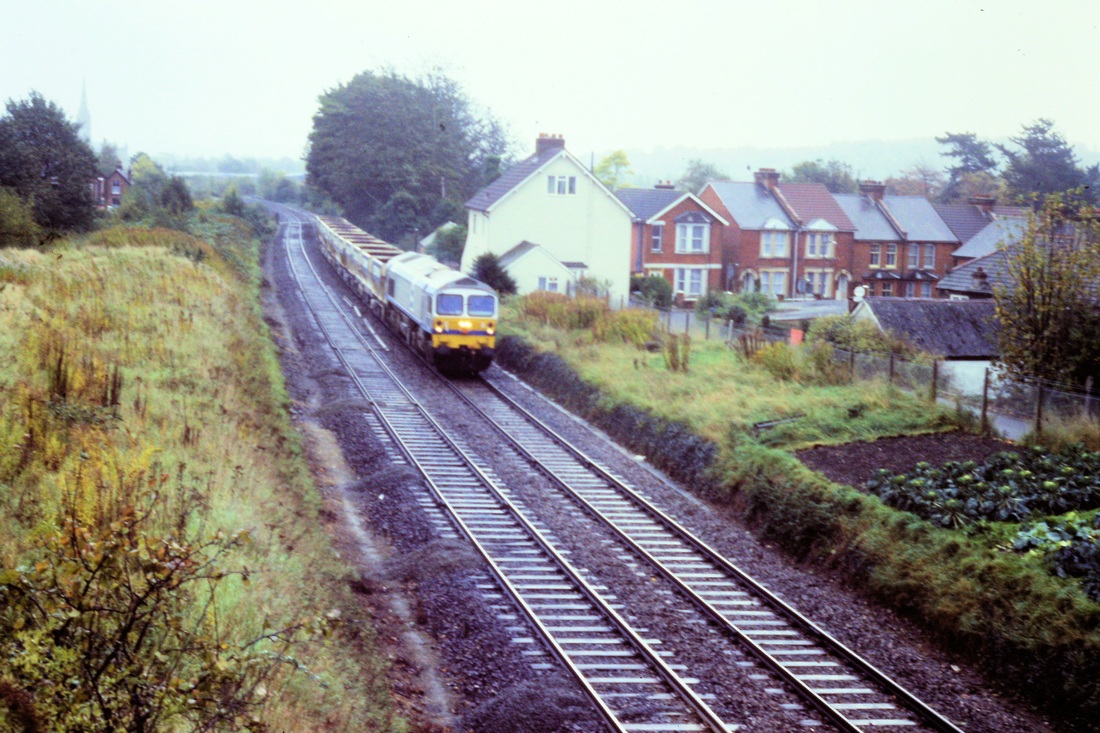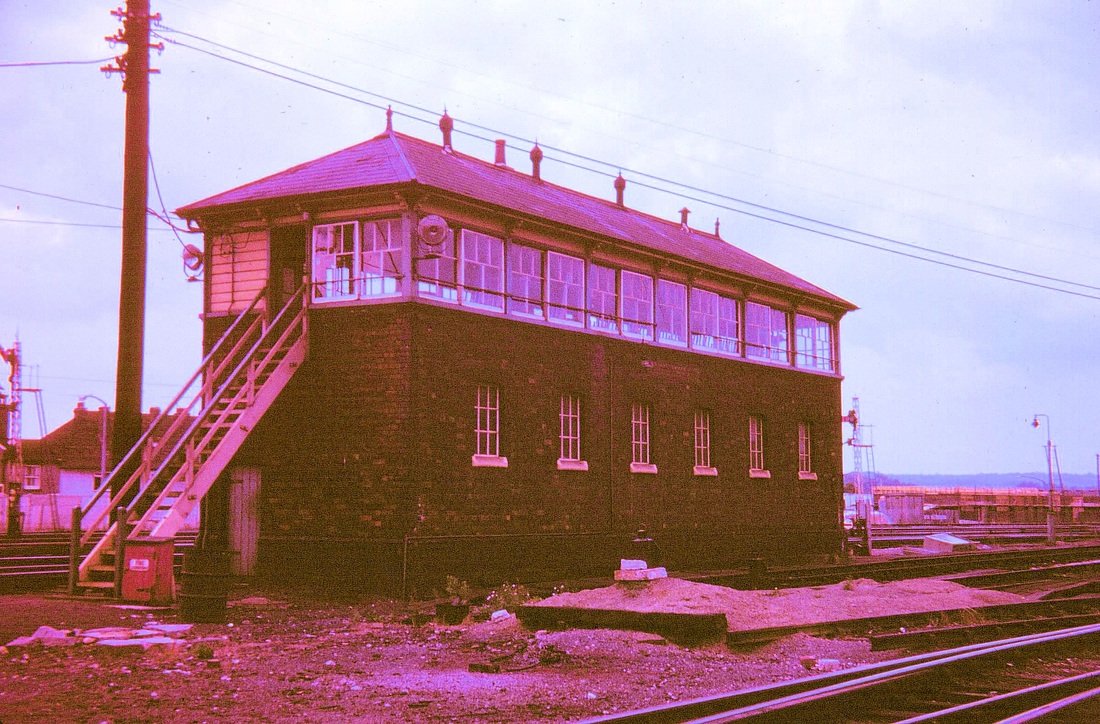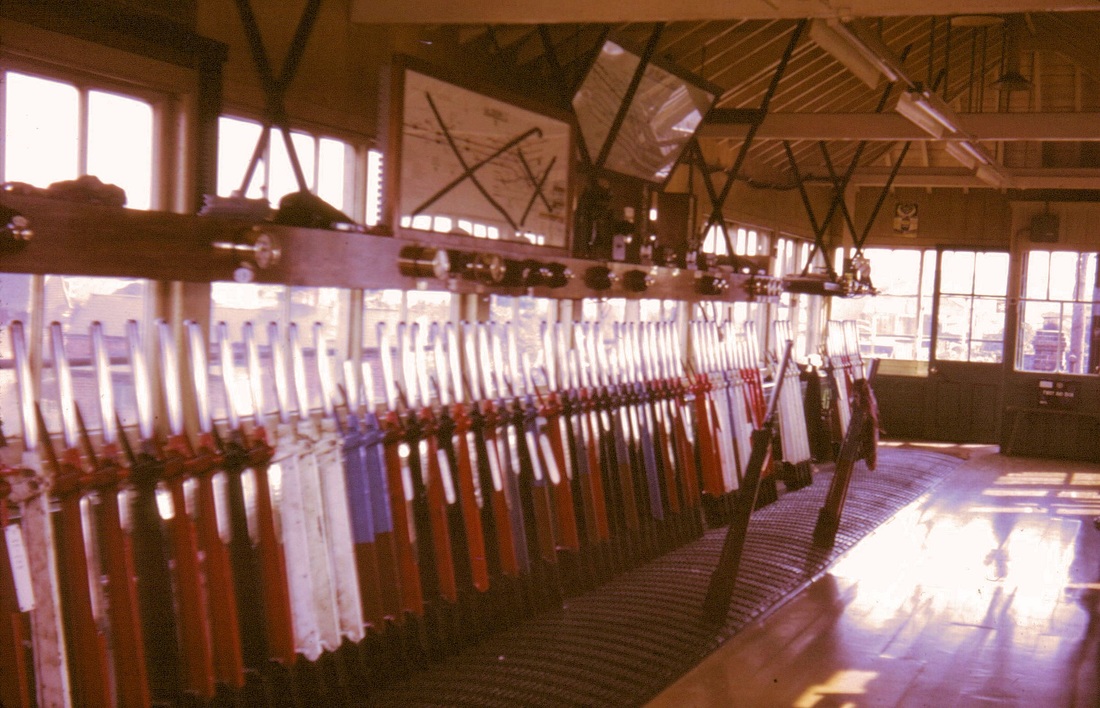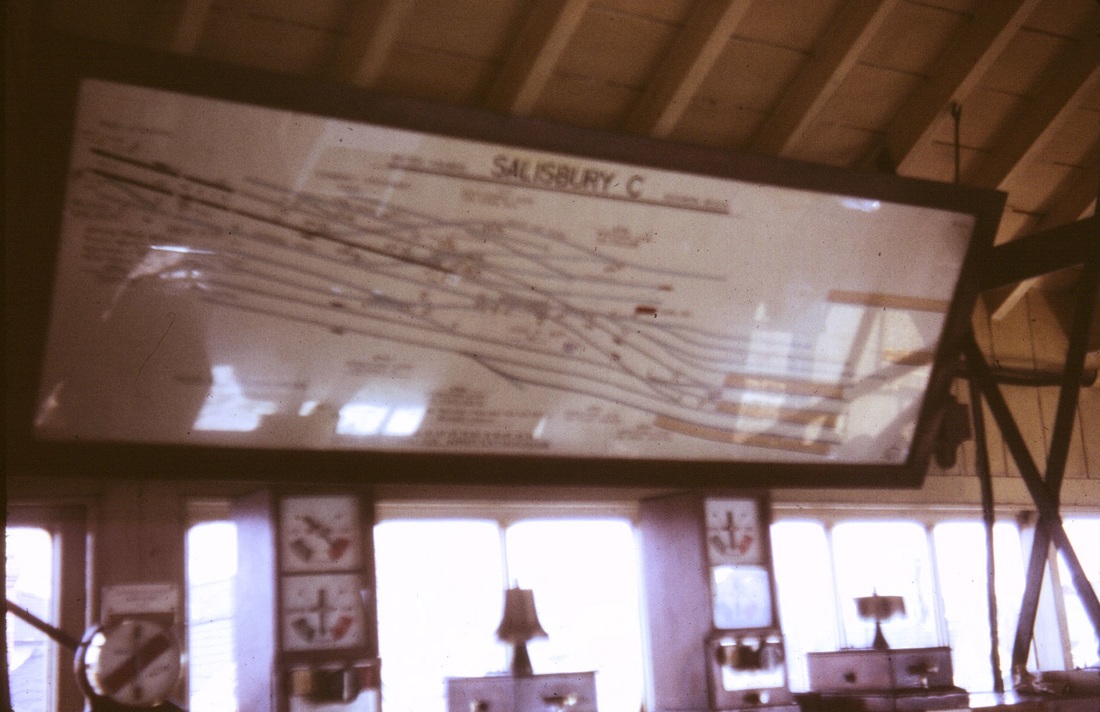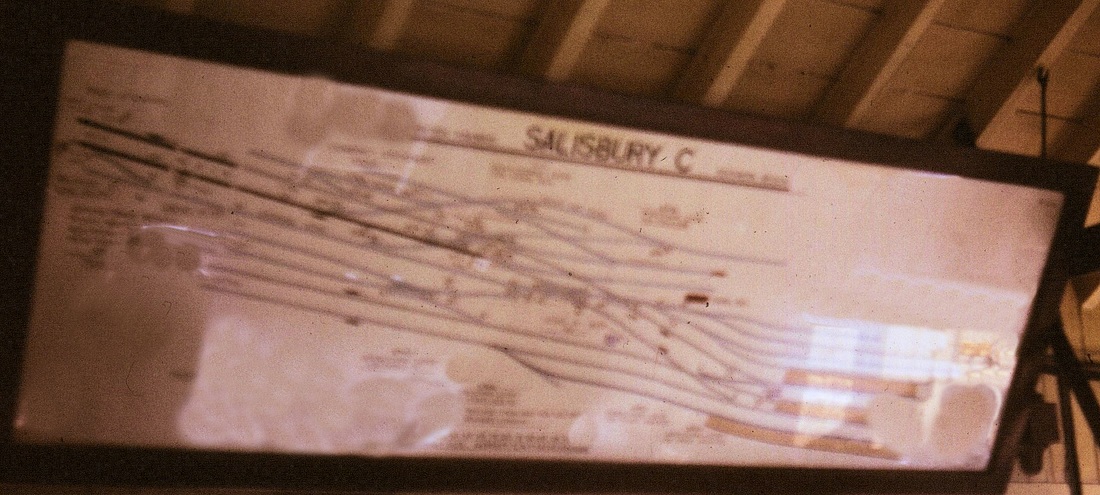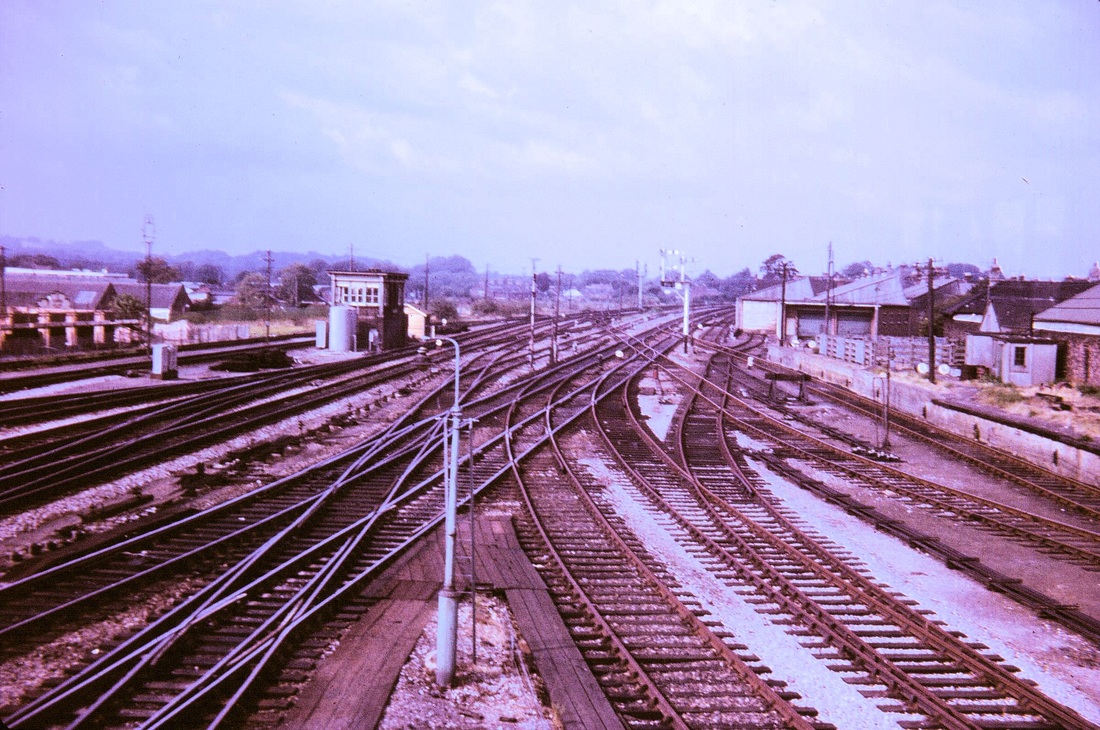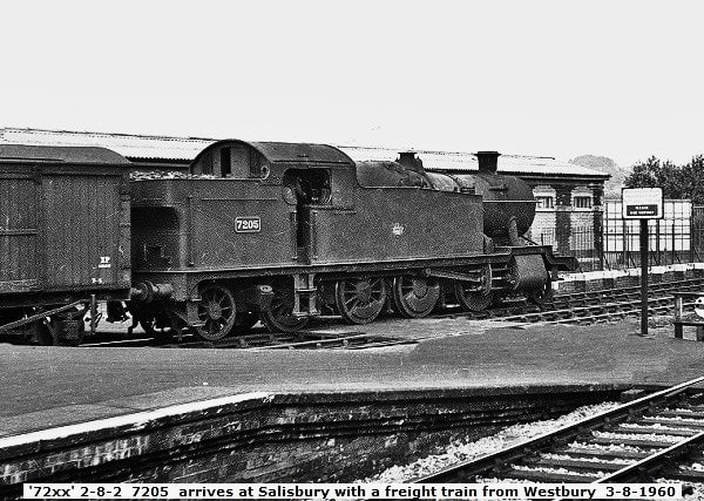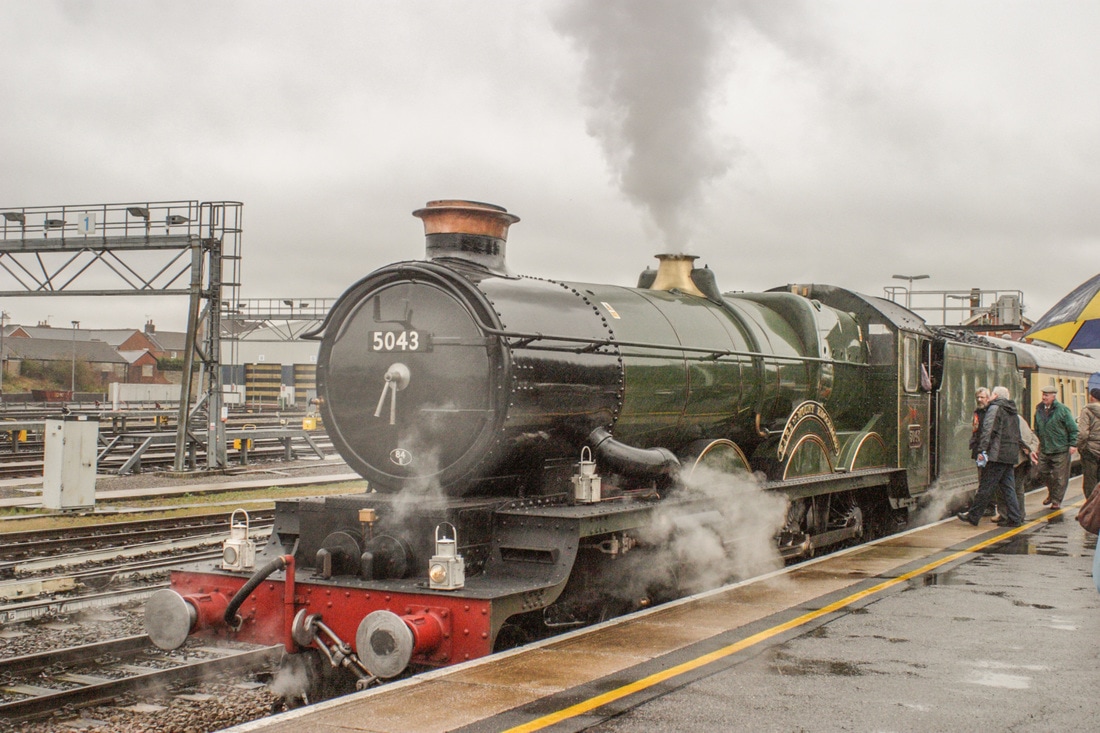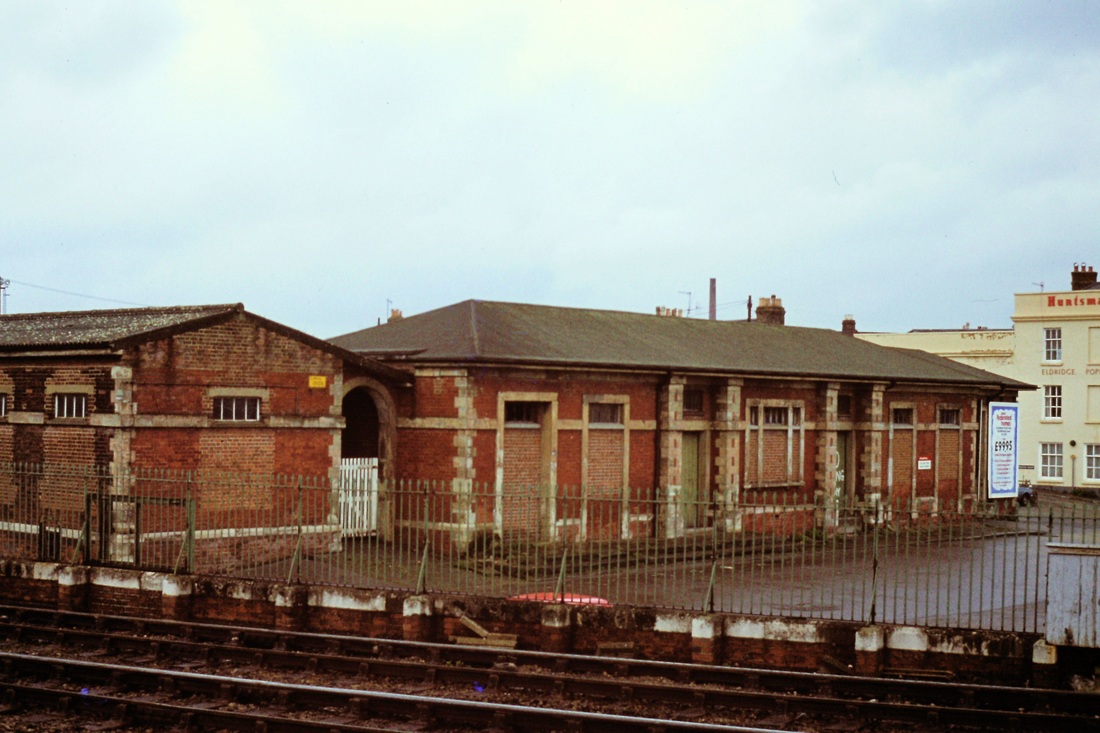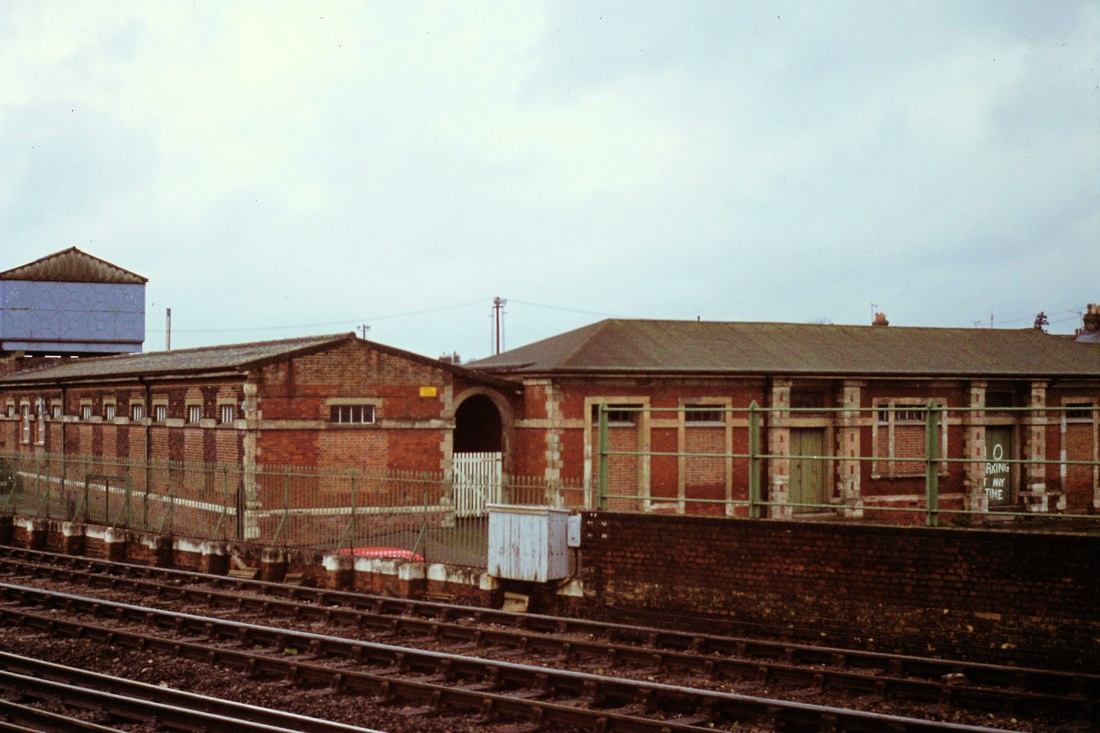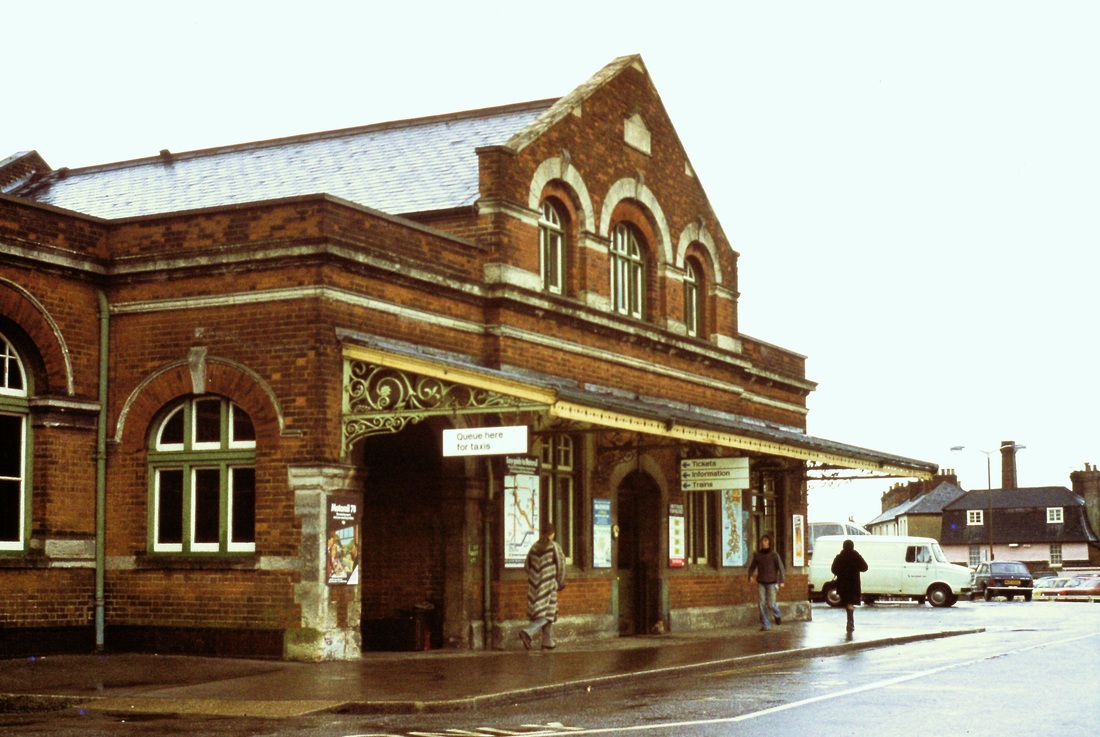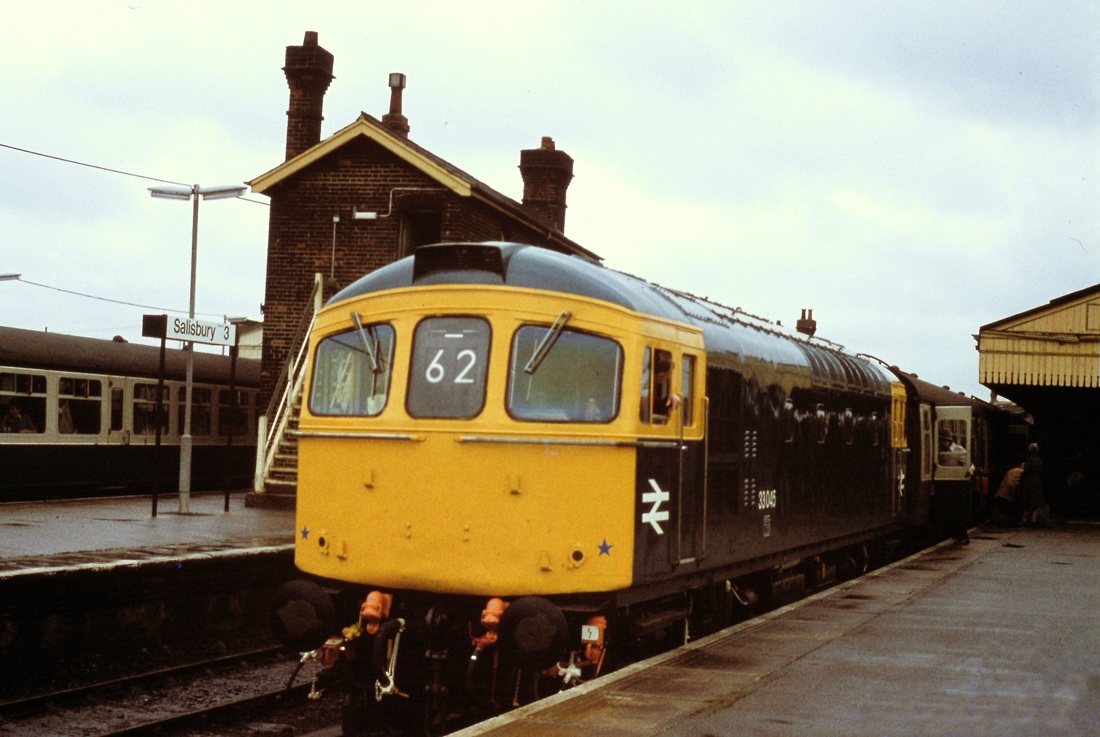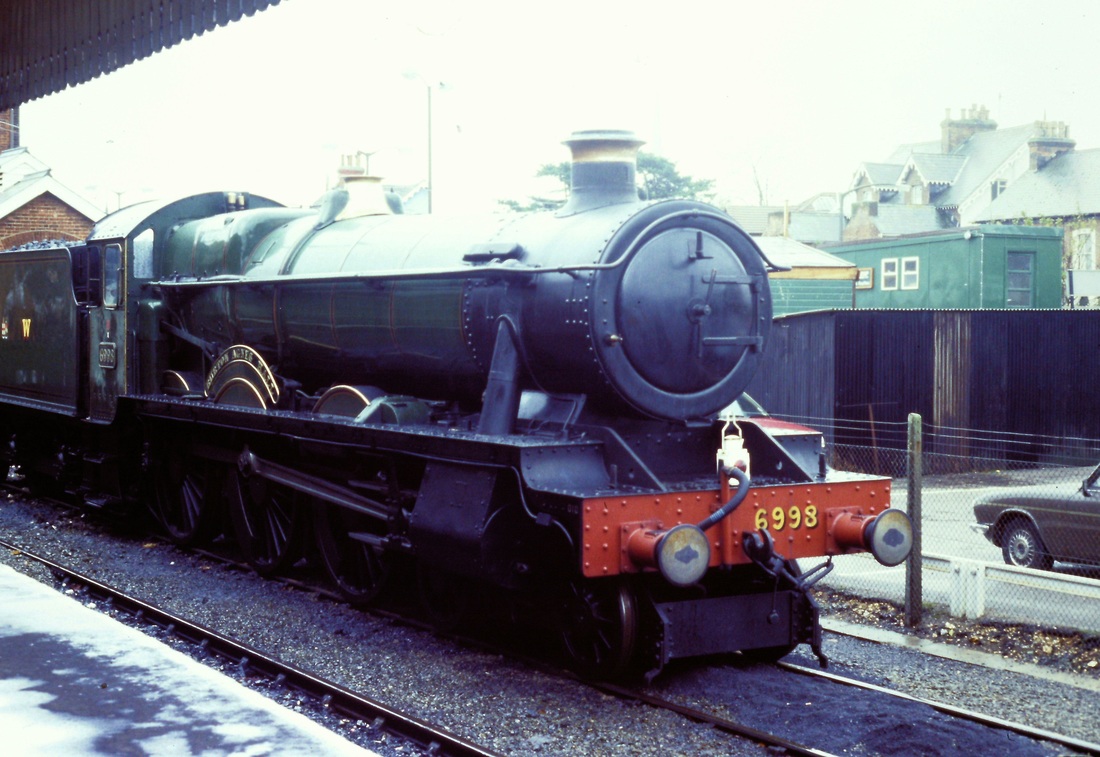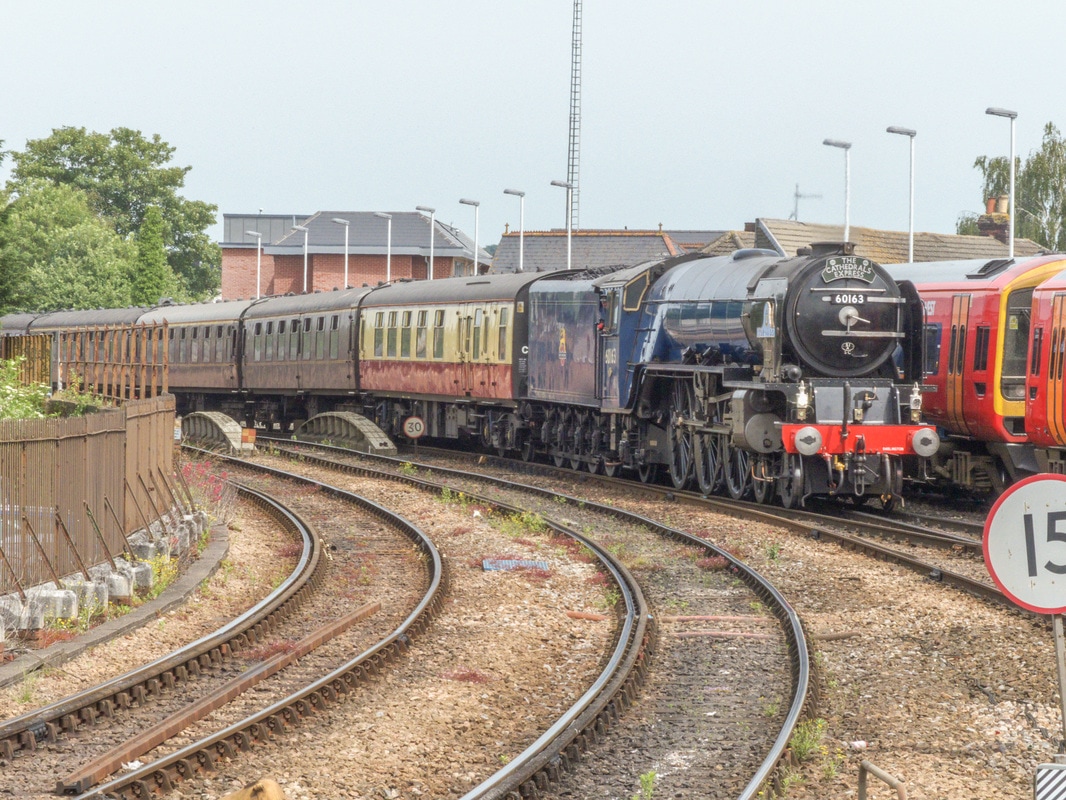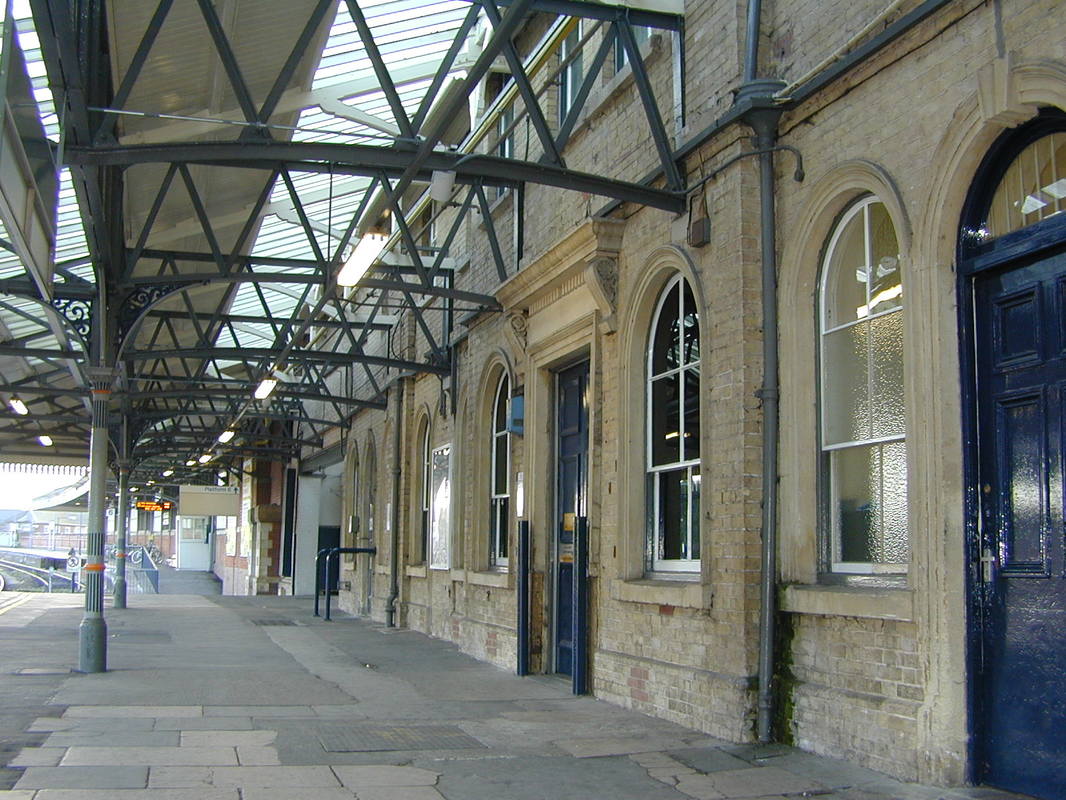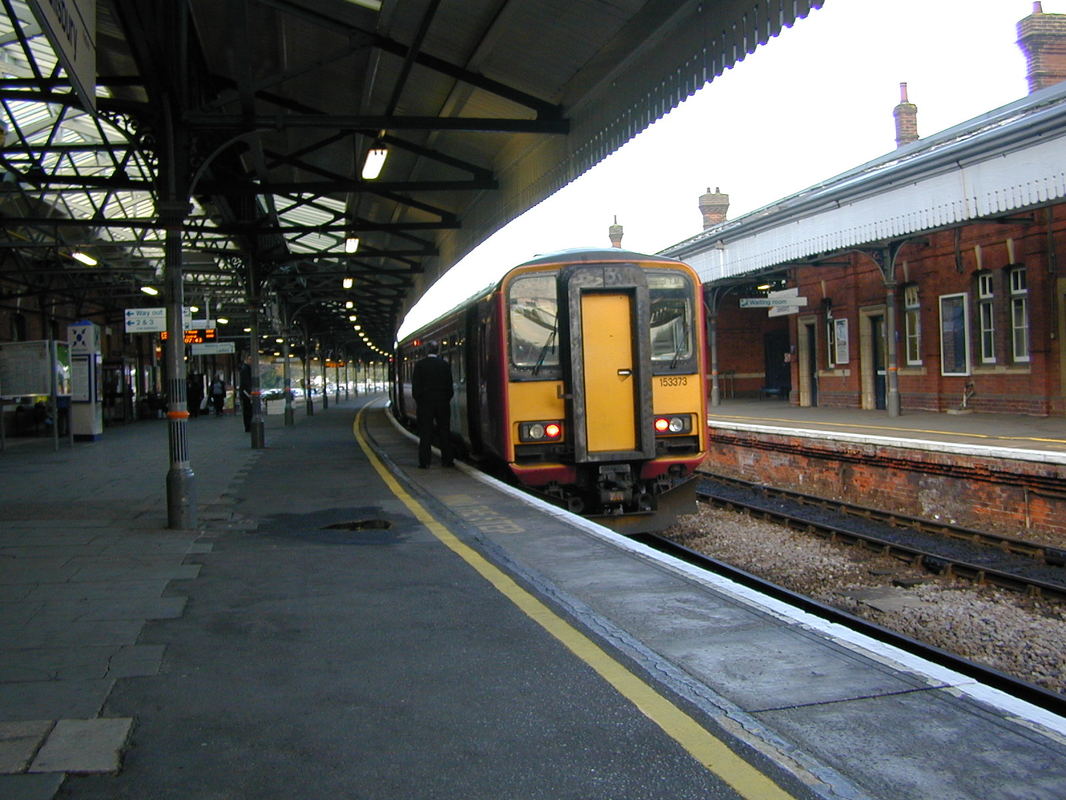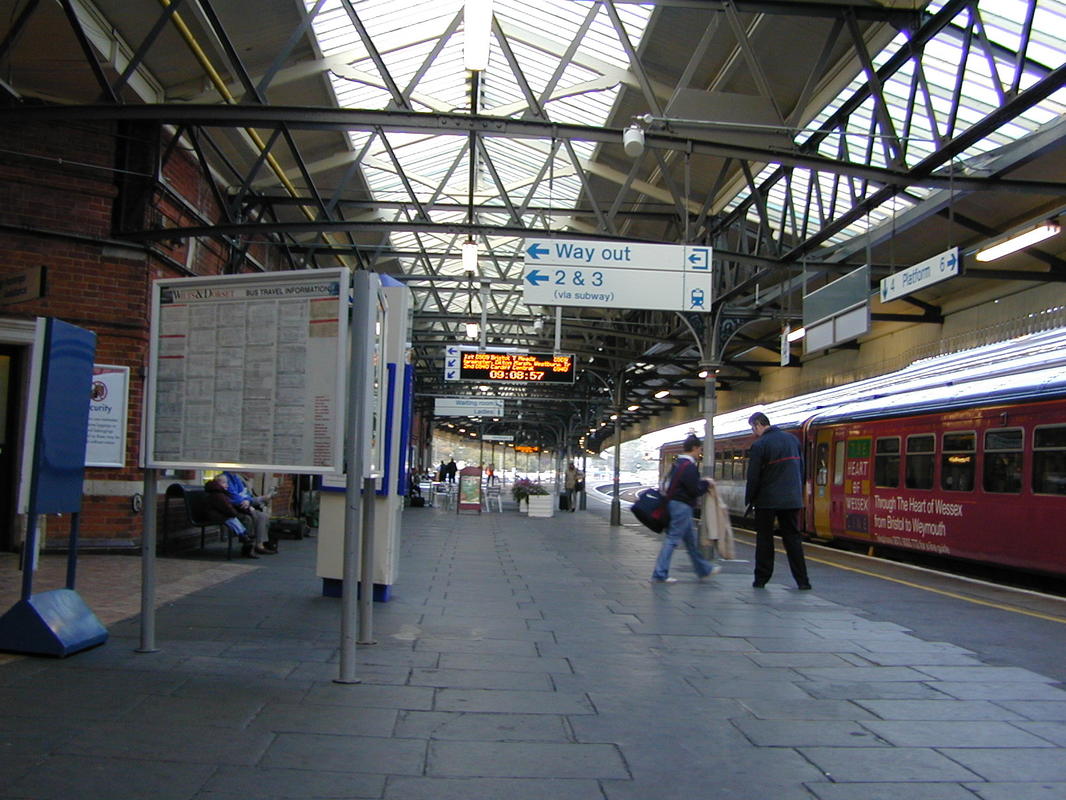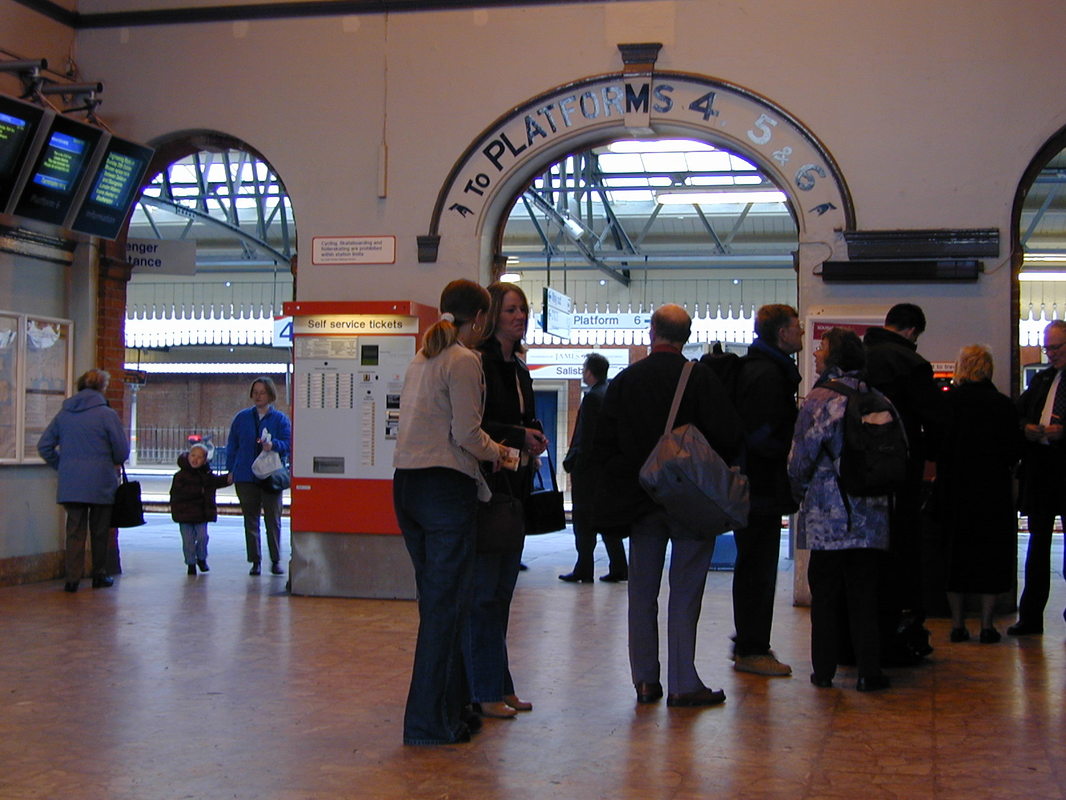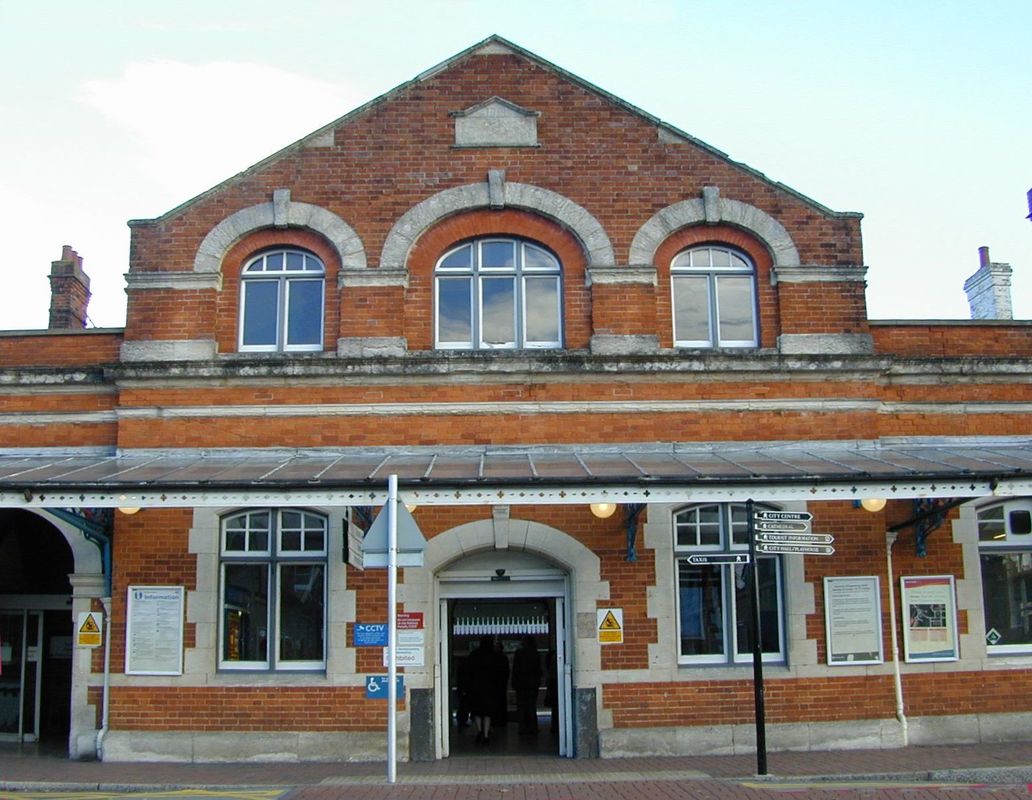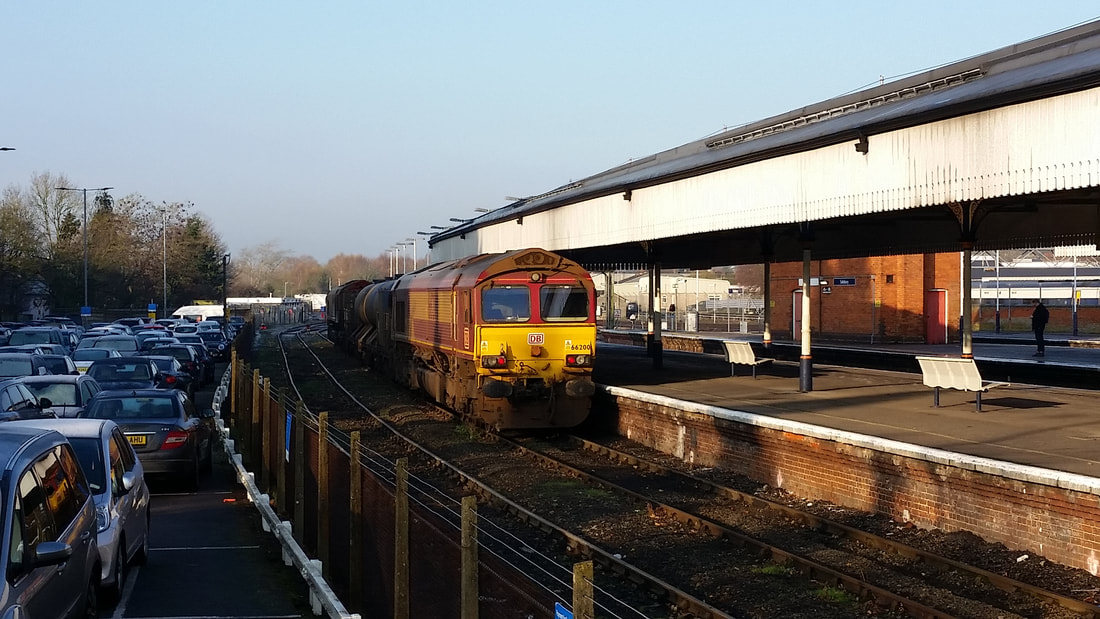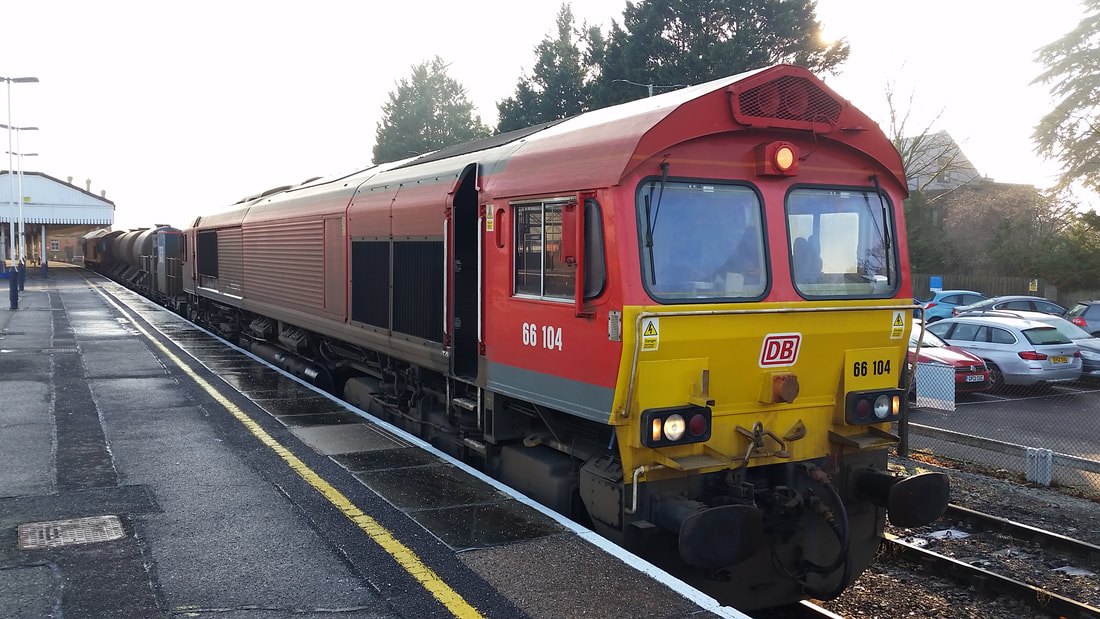Westbury to
Salisbury
Salisbury
History of the line:- Notes compiled by Terry Waldron
Duncan Harper, in his book Wilts and Somerset Railway, reports that Roger Hopkins and Sons, Bath Engineers, surveyed much of the Wilts, Somerset and Dorset c1936 and in addition he also surveyed a separate Salisbury and Warminster Railway as an extension to the former. Although some documents exist relating to the former it appears the documents relating to the latter have disappeared.
Isambard Kingdom Brunel met with parties, at Warminster on 9 July 1844, who were interested in creating a railway between the Great Western Main Line at Chippenham (now Thingley Junction) and Weymouth with a Branch from Westbury to Salisbury. After full discussion it was resolved that it was expedient to form a Provisional Committee for the purpose of carrying out the important objects submitted to the meeting on the conditions proposed by the Great Western Railway Company
The Wilts, Somerset and Weymouth Railway (WS&WR) was formed and an Act of Parliament passed for the line on 30 June 1845. Construction commenced with I.K. Brunel as Engineer for this Broad Gauge Railway.
This company only lasted until 14 March 1850 when the GWR took over, this arrangement being legalised in 1851.
From soon after the date of the Act work on the railway started and the section between Westbury and Warminster was opened as single track Broad Gauge on 9 September 1851, but due to financing problems, and obtaining funding at reasonable rates, it was to be a further 5 years before the Warminster to Salisbury section opened on 11 June 1856 where the only traffic was coal from the Radstock Coalfields, passenger services started shortly after on 30 June 1856.
Conversion from Broad Gauge to Standard Gauge on 18 and 19 August 1874.
Initially there was only one passing place, at Wylye, further loops being added at Wilton in 1867, Heytesbury in 1888, Codford in 1898 and Wishford in 1898. Double track being fully laid by 28 April 1901.
In 1902 there were 7 weekday and saturday trains stopping at all stations from Westbury to Salisbury and 8 from Salisbury to Westbury, on Sundays there were only two trains in each direction but only stopping at major stations. By 1947 there were only 5 weekday and Saturday trains in each direction. Daily pick up and drop goods trains called at each station and there were regular coal trains dropping off wagons at each station.
Heytesbury, Codford, Wylye, Wishford and Wilton (North) were finally closed to passenger traffic on 19 September 1955 and due to no Sunday stopping trains the last passenger train ran on 17 September 1955.
Many thanks to Terry Waldron for the above notes and the many illustrations and photographs of his which follow. (His copyright)
Duncan Harper, in his book Wilts and Somerset Railway, reports that Roger Hopkins and Sons, Bath Engineers, surveyed much of the Wilts, Somerset and Dorset c1936 and in addition he also surveyed a separate Salisbury and Warminster Railway as an extension to the former. Although some documents exist relating to the former it appears the documents relating to the latter have disappeared.
Isambard Kingdom Brunel met with parties, at Warminster on 9 July 1844, who were interested in creating a railway between the Great Western Main Line at Chippenham (now Thingley Junction) and Weymouth with a Branch from Westbury to Salisbury. After full discussion it was resolved that it was expedient to form a Provisional Committee for the purpose of carrying out the important objects submitted to the meeting on the conditions proposed by the Great Western Railway Company
The Wilts, Somerset and Weymouth Railway (WS&WR) was formed and an Act of Parliament passed for the line on 30 June 1845. Construction commenced with I.K. Brunel as Engineer for this Broad Gauge Railway.
This company only lasted until 14 March 1850 when the GWR took over, this arrangement being legalised in 1851.
From soon after the date of the Act work on the railway started and the section between Westbury and Warminster was opened as single track Broad Gauge on 9 September 1851, but due to financing problems, and obtaining funding at reasonable rates, it was to be a further 5 years before the Warminster to Salisbury section opened on 11 June 1856 where the only traffic was coal from the Radstock Coalfields, passenger services started shortly after on 30 June 1856.
Conversion from Broad Gauge to Standard Gauge on 18 and 19 August 1874.
Initially there was only one passing place, at Wylye, further loops being added at Wilton in 1867, Heytesbury in 1888, Codford in 1898 and Wishford in 1898. Double track being fully laid by 28 April 1901.
In 1902 there were 7 weekday and saturday trains stopping at all stations from Westbury to Salisbury and 8 from Salisbury to Westbury, on Sundays there were only two trains in each direction but only stopping at major stations. By 1947 there were only 5 weekday and Saturday trains in each direction. Daily pick up and drop goods trains called at each station and there were regular coal trains dropping off wagons at each station.
Heytesbury, Codford, Wylye, Wishford and Wilton (North) were finally closed to passenger traffic on 19 September 1955 and due to no Sunday stopping trains the last passenger train ran on 17 September 1955.
Many thanks to Terry Waldron for the above notes and the many illustrations and photographs of his which follow. (His copyright)
Westbury Twenty eight miles from BTM
Leaving Westbury and heading for Salisbury.
Westbury avoiding lines
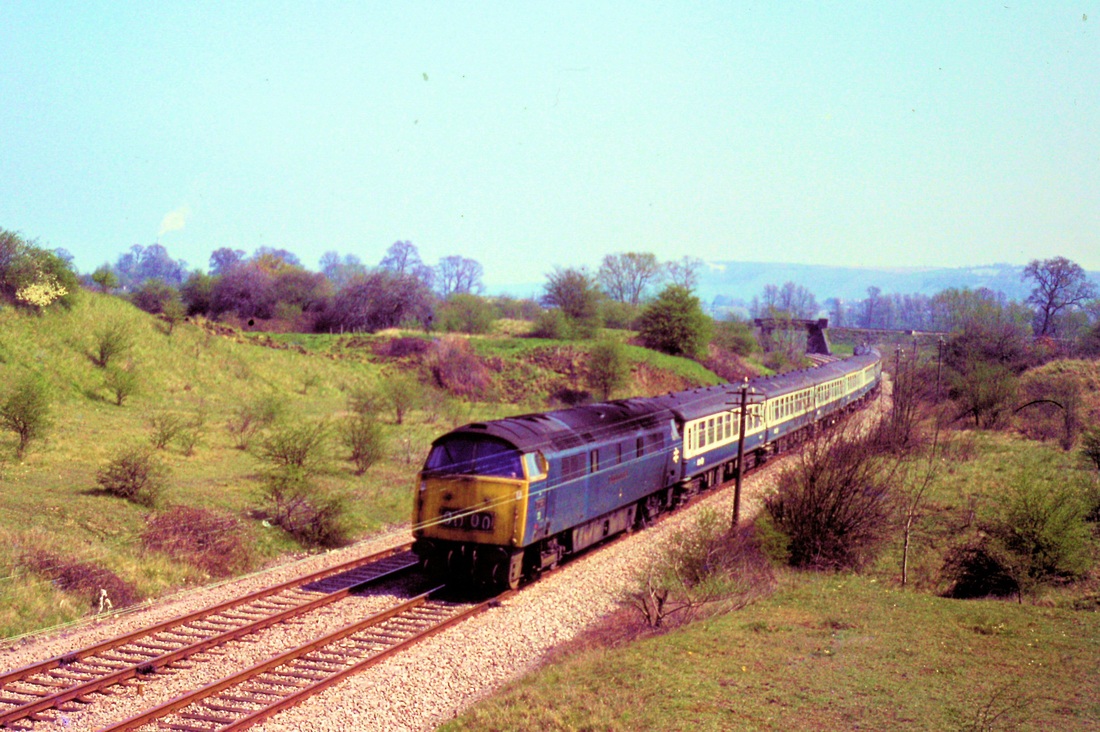
In the Salisbury to Westbury line crosses over the Westbury avoiding line on the Berks Hants. A Western hauls a down service, next stop probably Taunton. The date 21st April 1976 N.B. the Westbury two and a quarter mile long avoiding line between Heywood Road junction (nearer London) and Fairwood Junction was opened in 1933. Copyright Roger Winnen
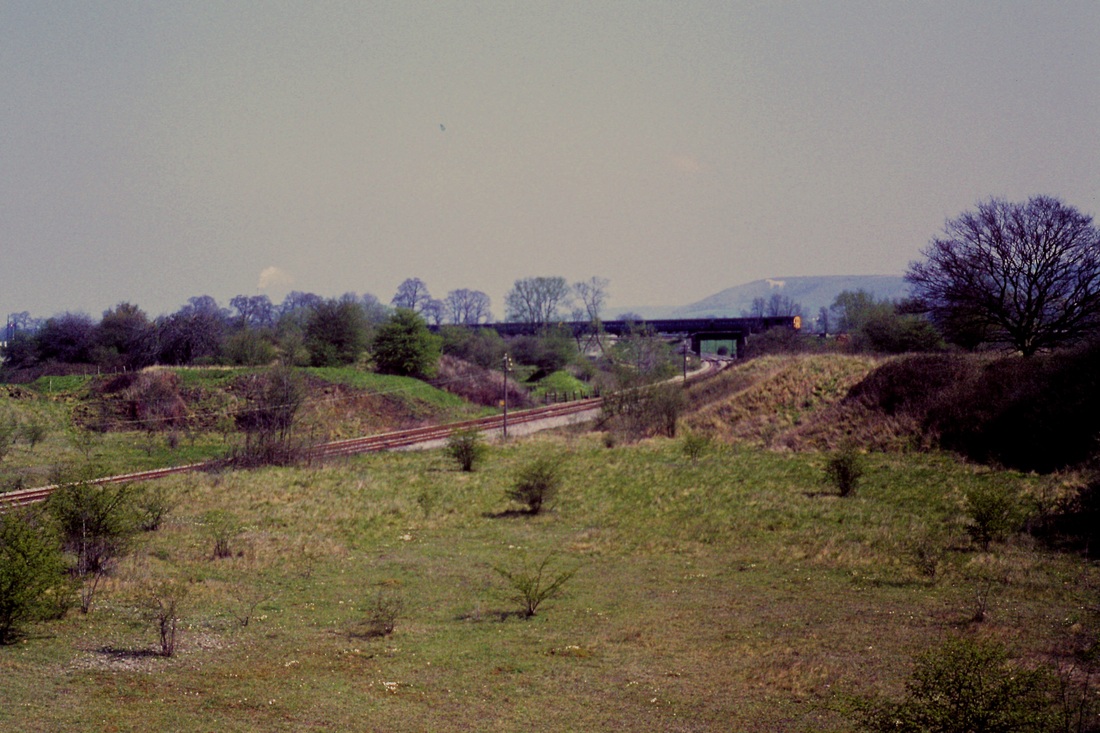
The white horse gazes down from his perch on the hills, in the foreground a freight train bound for Salisbury crosses over the west of England main line. The crescent shape, centre left of the picture over the trees is not an early Moon but a plume of steam from the cement works beyond Westbury. 21st April 1976. Copyright Roger Winnen
Dilton Marsh Twenty nine and a quarter miles from BTM
Derek Buttivant writes- I was pleased to see the new photos of the Westbury-Salisbury line and especially those of Dilton Marsh Halt. I lived at Dilton Marsh, within sight of the line, from 1968 to 1972. In about 1970 or 1971 BR workers arrived to shorten the sleeper-built platforms at the halt from their original (I think) five-car length to three-car length. (Subsequently they were shortened even further so that trains calling there now can board/alight passengers only through the crew door on dmus). The platform shortening was quickly and crudely done simply by sawing through the platforms at their outer ends (furthest from the access paths) and rebuilding the ramps. My photo shows this process part-way through, looking towards Westbury. The large station sign was left in place but the totem on the lamp post was discarded and the post sawn through. Note that the new stop sign is in place (as seen in the later pictures) but with rubble strewn along the platform in a way that would not be permitted today (the station was open and in use at the time of the photo).
Kind regards, Derek. Many thanks Derek
Kind regards, Derek. Many thanks Derek
Dilton Marsh gets bigger in 2018
Guy Vincent
Guy Vincent
Dilton Marsh Halt, 1.5 miles south of Westbury is currently undergoing platform extension works to enable more than one door to be released on trains calling here. The halt was last rebuilt in 1993 and each platform has a usable length of just 14.9 metres. This is being increased by 10 metres to 24.9 metres enabling one complete 'Turbo' carriage (23.5 metres) to fit. At the same time the height of each platform is being corrected as subsidence is an issue here, the halt being located on a tall embankment. New steel pile foundations have been driven into the bank and the supporting piers will have screw threads enabling the platforms to be wound back up to the required height should movement ever take place. It has been necessary to construct large scaffold trestles behind each platform to enable the work to be done, along with access tracks across surrounding land from the nearby country lanes. Four pictures of platform 2 (Salisbury bound) taken on April 16th. NB By quirk of fate trains travelling 'down' from here are, in reality, facing a stiff uphill climb of 1 in 70 for over a mile to the summit at Upton Scudamore. Up trains behave in the opposite way with constant, steady braking necessary as they approach the 40 mph permanent speed restriction through Westbury South Junction. Many thanks Guy
Close by Dilton lies the village of Upton Scudamore, its about midway between Westbury and Warminster.
Warminster Thirty two and three quarter miles from BTM
Platform lengths – Terry Waldron writes:- I had access to a map which was not dated but suspect to be 1956, this shows platform lengths, these lengths must assume main platform excluding the ramp at the ends.
Warminster Down 283 ft Up 424 ft
Warminster Down 283 ft Up 424 ft
Guy Vincent writes:- I noticed the old 'Travelling Safe' on the down platform at Warminster waiting to be put onto what I think was the 1007 Bristol Temple Meads-Portsmouth Harbour train hauled by 47543 in May 1988. I remember that there used to be a train-operated bell that rang as 'down' trains passed Upton Scudamore summit approximately 2 miles away towards Westbury and this just gave the duty porter / parcels clerk time to cross from the up-side parcels office ready to deal with any items requiring loading or unloading. Most interesting - thank you Guy.
Railtour to Warminster for the Imber Visit 26th August 17
66779 heads a 12 coach train, reporting number 1Z66 on 26 August 2017. Starting from Peterborough at 0704, via Finsbury park, Clapham Junction, Salisbury to Warminster 1230 (for the Salisbury Plain village of Imber) and then onto Bath and Bristol Temple Meads. The village of Imber, on the Salisbury Plain firing ranges is open for a limited time each year (this village was evacuated in 1943 and villagers have only been allowed to visit for limited periods since then - the church remains intact but almost all the other buildings have been demolished), today many old Routemaster buses along with a few of the new London Transport buses took passengers from Warminster Station to Imber and through many of the roads on Salisbury Plain that are normally only open to Military vehicles. You will see from the photos that the first 3 coaches and the loco were not on the platform, the same is true for the last 3 coaches. This must be the longest train to ever stop at Warminster. Regards Terry Waldron Many thanks Terry
66779 heads a 12 coach train, reporting number 1Z66 on 26 August 2017. Starting from Peterborough at 0704, via Finsbury park, Clapham Junction, Salisbury to Warminster 1230 (for the Salisbury Plain village of Imber) and then onto Bath and Bristol Temple Meads. The village of Imber, on the Salisbury Plain firing ranges is open for a limited time each year (this village was evacuated in 1943 and villagers have only been allowed to visit for limited periods since then - the church remains intact but almost all the other buildings have been demolished), today many old Routemaster buses along with a few of the new London Transport buses took passengers from Warminster Station to Imber and through many of the roads on Salisbury Plain that are normally only open to Military vehicles. You will see from the photos that the first 3 coaches and the loco were not on the platform, the same is true for the last 3 coaches. This must be the longest train to ever stop at Warminster. Regards Terry Waldron Many thanks Terry
Railtour to Westbury for the visit to Imber 17th August 2019. Guy Vincent.
Warminster station was overwhelmed today by a large influx of visitors who came from far and wide for the annual 'Imberbus' event which sees a large fleet of classic red London buses running a shuttle service to the abandoned village of Imber on Salisbury Plain. UK Railtours ran a special train from Waterloo for this event, formed of preserved class 33 D6515 (33012), the 'London Transport' 4-TC set and class 73 73107. I was unable to see the outward run and sadly 'proper' photography of the return train was near impossible due to the sheer numbers on the platforms and footbridge but I did manage to grab a few shots of the 1Z84 1704 departure for Waterloo. Of course, until May 1988 33012 was a regular visitor here when it made calls on the Portsmouth-Cardiff loco-hauled 'Table 132' services. To show how much has changed I've added a scan of sister 'Crompton' 33013 arriving on the 1007 Bristol-Portsmouth service on 7th May 1987. Note the lack of vegetation and the former Geest banana ripening and distribution warehouse on the right. This was built in 1959-60, was rail-connected and received deliveries from Barry and Avonmouth until the early 1970s. The factory closed in the late 1980s and was demolished to be replaced by a modern housing estate.
Guy Vincent Many thanks Guy.
Guy Vincent Many thanks Guy.
For more information on the lost village of Imber please click below:-
https://en.wikipedia.org/wiki/Imber
and for more details of the imberbus service please click below.
https://www.ianvisits.co.uk/blog/2019/02/05/routemaster-buses-to-drive-through-a-military-firing-range/
https://en.wikipedia.org/wiki/Imber
and for more details of the imberbus service please click below.
https://www.ianvisits.co.uk/blog/2019/02/05/routemaster-buses-to-drive-through-a-military-firing-range/
Heytesbury Thirty six and a half miles from BTM
Platform lengths – Terry Waldron writes :- I had access to a map which was not dated but suspect to be 1956, this shows platform lengths, these lengths must assume main platform excluding the ramp at the ends. Down 317 ft Up 347 ft
For a 25" to the mile map of the area courtesy of the National Library of Scotland click below. Zoom in to show track layouts at the time.
http://maps.nls.uk/geo/explore/#zoom=17&lat=51.1771&lon=-2.1124&layers=168&b=1
http://maps.nls.uk/geo/explore/#zoom=17&lat=51.1771&lon=-2.1124&layers=168&b=1
CLOSING OF
WISHFORD AND HEYTESBURY STATIONS
WITHDRAWAL OF PASSENGER TRAIN
SERVICE FROM WILTON NORTH, WYLYE
AND CODFORD STATIONS
On and from Monday, 19th September, 1955, Wishford and Heytesbury stations will be closed entirely and the passenger train service withdrawn from Wilton North, Wylye and Codford stations, which will remain open for parcels and freight traffic.
British Railways will continue to provide collection and delivery services throughout the area for parcels and freight traffic. Facilities for truckload traffic and small consignments at present handed in or collected at Wishford and Heytesbury will be available at the adjacent stations.
Further information may be obtained from the Station Master or Goods Agent. Salisbury (Telephone Salisbury 2201); Station Masters Wilton North (Telephone Wilton 3248); Wylye (Telephone Wylye 226); Codford (Telephone Codford St. Mary 204); Warminster (Telephone Warminster 2002 (passenger) or 2383 (freight) or from the District Traffic Superintendent, British Railways, Woking, Surrey (Telephone Woking 2424).
Alternative bus facilities in the area are provided jointly by the Wilts & Dorset Motor Services Ltd. And The Western National Omnibus Co. Ltd., who operate a frequent service between Salisbury and Warminster. A service is also provided by Wylye Valley Motor Services to and from Salisbury.
Enquiries regarding bus services should be adressed to:-
WILTS & DORSET MOTOR SERVICES LTD.
Endless Street , Salisbury
(Telephone Salisbury 2255)
THE WESTERN NATIONAL OMNIBUS CO. LTD.,
Market House, Trowbridge.
(Telephone Trowbridge 3170)
WYLYE VALLEY MOTOR SERVICES.
West Close, Codford, Wilts
(Telephone Codford St. Mary 337).
Text taken by Terry Waldron when reading local newpapers.
WISHFORD AND HEYTESBURY STATIONS
WITHDRAWAL OF PASSENGER TRAIN
SERVICE FROM WILTON NORTH, WYLYE
AND CODFORD STATIONS
On and from Monday, 19th September, 1955, Wishford and Heytesbury stations will be closed entirely and the passenger train service withdrawn from Wilton North, Wylye and Codford stations, which will remain open for parcels and freight traffic.
British Railways will continue to provide collection and delivery services throughout the area for parcels and freight traffic. Facilities for truckload traffic and small consignments at present handed in or collected at Wishford and Heytesbury will be available at the adjacent stations.
Further information may be obtained from the Station Master or Goods Agent. Salisbury (Telephone Salisbury 2201); Station Masters Wilton North (Telephone Wilton 3248); Wylye (Telephone Wylye 226); Codford (Telephone Codford St. Mary 204); Warminster (Telephone Warminster 2002 (passenger) or 2383 (freight) or from the District Traffic Superintendent, British Railways, Woking, Surrey (Telephone Woking 2424).
Alternative bus facilities in the area are provided jointly by the Wilts & Dorset Motor Services Ltd. And The Western National Omnibus Co. Ltd., who operate a frequent service between Salisbury and Warminster. A service is also provided by Wylye Valley Motor Services to and from Salisbury.
Enquiries regarding bus services should be adressed to:-
WILTS & DORSET MOTOR SERVICES LTD.
Endless Street , Salisbury
(Telephone Salisbury 2255)
THE WESTERN NATIONAL OMNIBUS CO. LTD.,
Market House, Trowbridge.
(Telephone Trowbridge 3170)
WYLYE VALLEY MOTOR SERVICES.
West Close, Codford, Wilts
(Telephone Codford St. Mary 337).
Text taken by Terry Waldron when reading local newpapers.
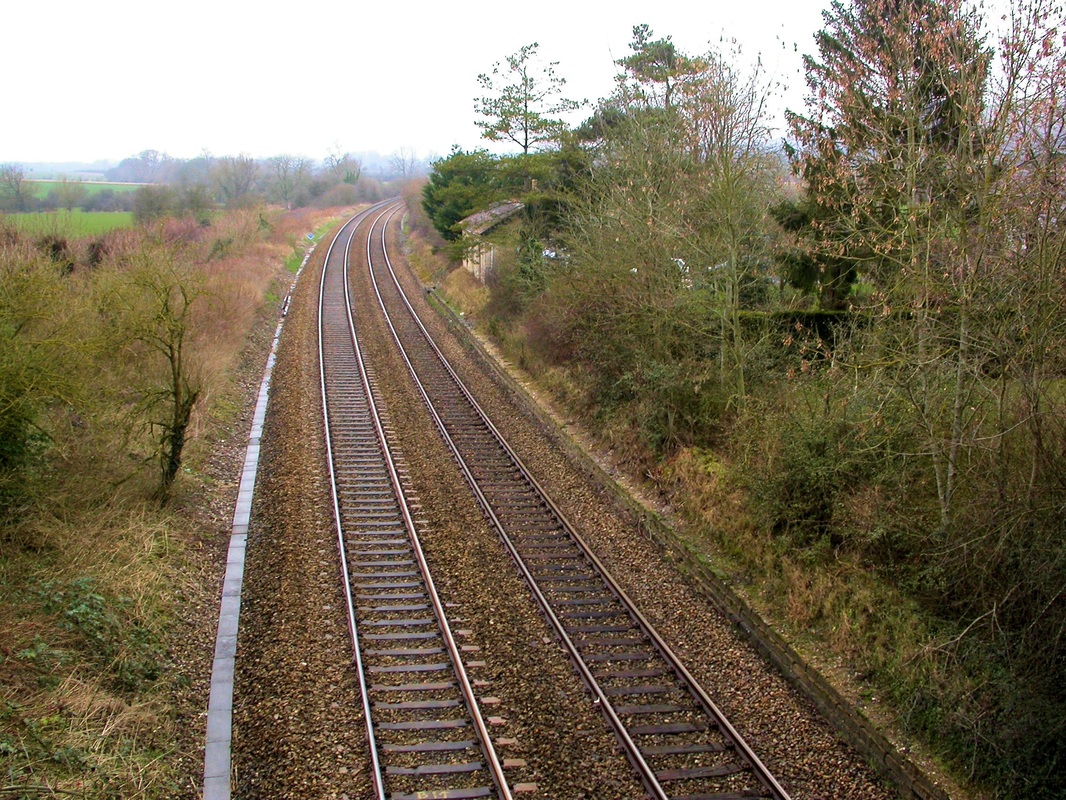
A shot from the overbridge gives one some idea of the length of the platform - perhaps three or four coaches long. February 2005 Copyright Kevin Jenkin N.B. A further note from Terry Waldron who writes :- I had access to a map which was not dated but suspect to be 1956. It shows the platform lengths exculding the ramps to be -
Heytesbury Down 317 ft Up 347 ft.
Please note - the owners of this property and the station house are not railway enthusiasts and do not relish constant visits by railway enthusiasts who wish to view the site and its buildings, so please respect their privacy. They are, however, very interested in the overall history of the site and its buildings.
For a 1902 25" map of the area courtesy National Library of Scotland please click below.
http://maps.nls.uk/geo/explore/#zoom=17&lat=51.1774&lon=-2.1134&layers=168&b=1
http://maps.nls.uk/geo/explore/#zoom=17&lat=51.1774&lon=-2.1134&layers=168&b=1
The original Station Masters House, original station building and land that contained the goods shed and sidings have been bought in three separate purchases by the current owners. The original station building was purchased from BR by a scrap merchant and he stripped out the whole of the interior of the building. In doing this he removed the platform access doors (doorway blocked up with breeze blocks), and the access doors at rear and combined them together and re-located them at the rear most entrance to the building, this can be seen in my photographs and the interior plan.
The land which had the sidings and goods shed was used by Wiltshire Council for many years until purchase by current owners. Although the goods shed was demolished many years ago some of the Chilmark stone from which it was built remains on the site. Notes by Terry Waldron his copyright
The land which had the sidings and goods shed was used by Wiltshire Council for many years until purchase by current owners. Although the goods shed was demolished many years ago some of the Chilmark stone from which it was built remains on the site. Notes by Terry Waldron his copyright
HEYTESBURY STATION
Date opened: 11 June 1856 (freight only), 30 June 1856 (passenger)
Location: West of minor road
Company on opening: Great Western Railway
Date closed to passenger: 19 September 1955
Date closed completely: 19 September 1955
Company on closing: British Railways (Southern Region)
County: Wiltshire
OS Grid Reference: 923418
Date of visit: May 2009
Notes:
The station is about ½ mile from the village on the west side of Tytherington Lane and unusually the station had no footbridge, there was however a road bridge at the Salisbury end of the platforms.
In 1916 a junction was put in on the up line (almost opposite the goods shed) for the Sutton Veny Camp Railway, the main traffic being hospital trains to the Camp Hospital, this was removed and track taken up in 1926, with the exception of the parts on GWR property which appear to have been removed c1935. The line was about 3 ½ miles long and worked by Hunslet 0-6-0 No 38 Jersey Marine and Barclay 0-4-0ST Glasgow.
The Station Masters and Seniors Porters houses still remain and are private residences. The station building remains, albeit totally gutted inside and without canopies, this is on private land and owned by the current owner of the Station Masters House – as they are NOT Railway Enthusiasts they do not relish lots of visitors who wish to ‘nose’ around the site and as such their privacy should be respected.
It appears that this station building and that of Wishford were exactly the same in appearance and dimensions and both designed by R P Brereton (on behalf of I K Brunel).
This station was sold by BR in 1955 for the sum of £50 and was part of a reclamation centre, as such the interior was gutted and used for storage for some 40 years. Some of the stonework of the goods shed remain in a field close to where it was erected and is being retained for future building works.
The road bridge was in need of repairs a few years ago and no-one could understand why one part of the bridge was crumbling, until one of the elderly residences mentioned the steam locos used to stop almost directly under this part of the bridge.
Water supply for the station was from a well by hand pump and the pump was located to the rear and on one side of the building, the original pump is still in existence at 2009.
Drawing and notes by Terry Waldron. (His Copright)
Date opened: 11 June 1856 (freight only), 30 June 1856 (passenger)
Location: West of minor road
Company on opening: Great Western Railway
Date closed to passenger: 19 September 1955
Date closed completely: 19 September 1955
Company on closing: British Railways (Southern Region)
County: Wiltshire
OS Grid Reference: 923418
Date of visit: May 2009
Notes:
The station is about ½ mile from the village on the west side of Tytherington Lane and unusually the station had no footbridge, there was however a road bridge at the Salisbury end of the platforms.
In 1916 a junction was put in on the up line (almost opposite the goods shed) for the Sutton Veny Camp Railway, the main traffic being hospital trains to the Camp Hospital, this was removed and track taken up in 1926, with the exception of the parts on GWR property which appear to have been removed c1935. The line was about 3 ½ miles long and worked by Hunslet 0-6-0 No 38 Jersey Marine and Barclay 0-4-0ST Glasgow.
The Station Masters and Seniors Porters houses still remain and are private residences. The station building remains, albeit totally gutted inside and without canopies, this is on private land and owned by the current owner of the Station Masters House – as they are NOT Railway Enthusiasts they do not relish lots of visitors who wish to ‘nose’ around the site and as such their privacy should be respected.
It appears that this station building and that of Wishford were exactly the same in appearance and dimensions and both designed by R P Brereton (on behalf of I K Brunel).
This station was sold by BR in 1955 for the sum of £50 and was part of a reclamation centre, as such the interior was gutted and used for storage for some 40 years. Some of the stonework of the goods shed remain in a field close to where it was erected and is being retained for future building works.
The road bridge was in need of repairs a few years ago and no-one could understand why one part of the bridge was crumbling, until one of the elderly residences mentioned the steam locos used to stop almost directly under this part of the bridge.
Water supply for the station was from a well by hand pump and the pump was located to the rear and on one side of the building, the original pump is still in existence at 2009.
Drawing and notes by Terry Waldron. (His Copright)
Diversions via Heytesbury By Terry Waldron
Over the weekend of 29 March to 1 April 2013 there were major works taking place at Reading Station. As a result of this all traffic from Plymouth/Penzance to Paddington was rerouted at Westbury via Salisbury to Waterloo. As such the line saw much additional traffic. In addition to the rerouting from West there were rerouted trains from the Midlands to Southampton. DPP 9955A shows a Freightliner with empties from Southampton headed for Jaguar Coventry, I cannot find one of a south going train. This one was taken from Heytesbury looking towards Salisbury. DPP9967 shows a HST passing Heytesbury Station and heading towards Salisbury. Both of these photos taken from the same bridge.
Over the weekend of 29 March to 1 April 2013 there were major works taking place at Reading Station. As a result of this all traffic from Plymouth/Penzance to Paddington was rerouted at Westbury via Salisbury to Waterloo. As such the line saw much additional traffic. In addition to the rerouting from West there were rerouted trains from the Midlands to Southampton. DPP 9955A shows a Freightliner with empties from Southampton headed for Jaguar Coventry, I cannot find one of a south going train. This one was taken from Heytesbury looking towards Salisbury. DPP9967 shows a HST passing Heytesbury Station and heading towards Salisbury. Both of these photos taken from the same bridge.
Upton Lovell Level Crossing
Codford Thirty eight and three quarter miles from BTM
Platform lengths – Terry Waldron writes :- I had access to a map which was not dated but suspect to be 1956, this shows platform lengths, these lengths must assume main platform excluding the ramp at the ends. Down 376 ft Up 383 ft
Between Codford and Sherington
Sherrington Level Crossing
Wylye Thirty eight miles from BTM
(At one time a watering point)
(At one time a watering point)
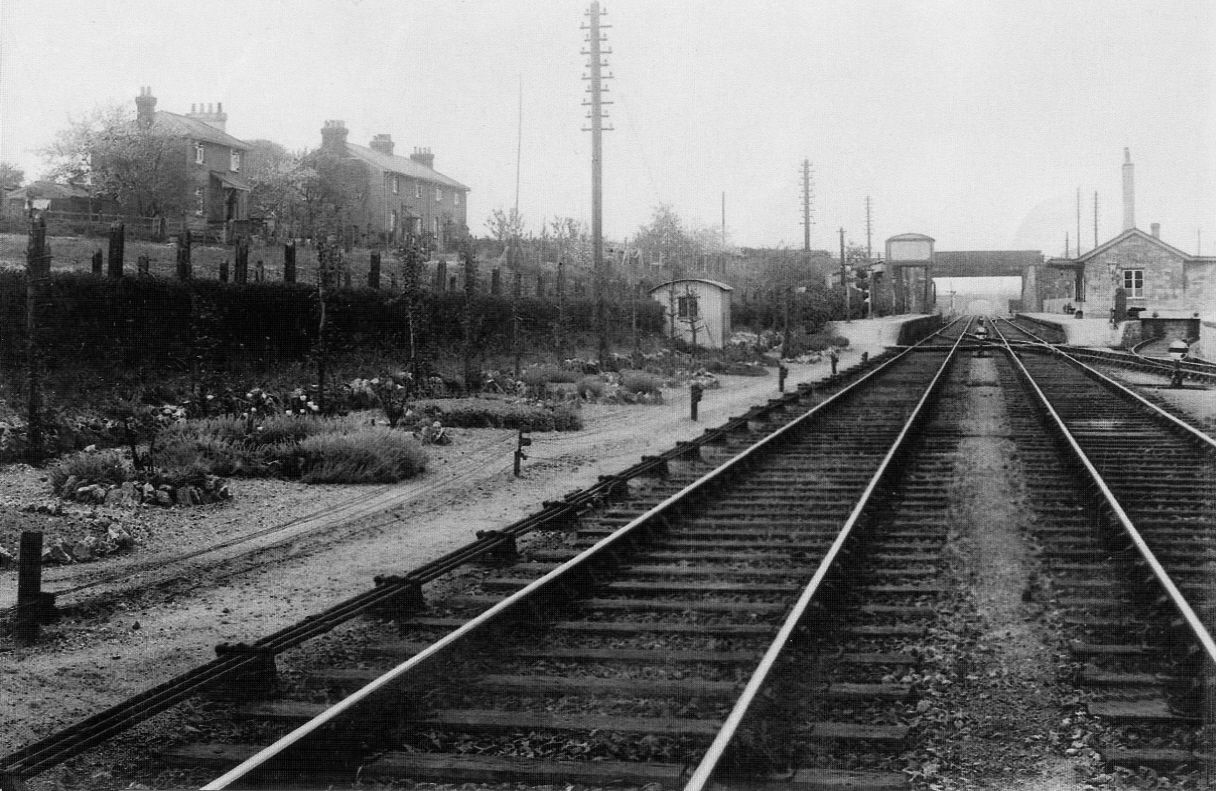
A shot taken from close to the level crossing (and signal box) looking towards Wylye station (and towards Westbury). This photo c1920. On the left the single cottage is for the Station Master and the other 3 cottages for station staff. You will note the high chimney on the Station Building (on the right of the photo), to get a good draw on the fireplaces, which replaces the original, much lower, Brunel Style chimney with flat top capping. Copyright Kevin Regan
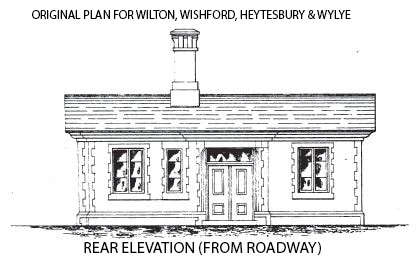
An early drawing for the stations at Wilton, Wishford, Wylye and Heytesbury. This shows the Rear Elevation (roadside). You can clearly see the Brunellian stone capped chimney. It has not been proven if the chimneys were built to this style, but the stonework does suggest so. However, all were changed to a more usual style of chimney and in some cases, to get an ideal draw for the fires, they were extended in height.
All stations except Wilton were built of stone - see photos of Heytesbury Station (from the Chilmark Quarry) - Wilton was built from brick with stone quoins (see Roger Winnen's photo of Wilton North Station)
Regards Terry Many thanks to Terry Waldron for the drawing and for the above invaluable information.
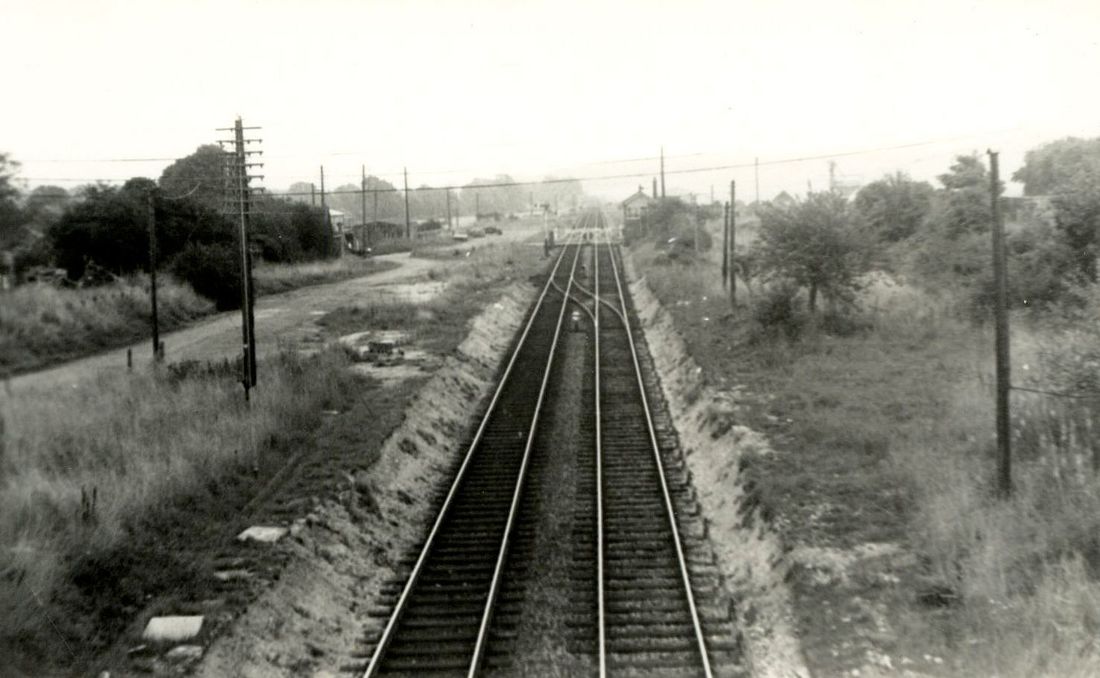
A photo taken from the bridge at the Westbury end of the Wylye station site. The land to the left is where the main station building and goods shed were situated, to the right the land was occupied by the Up Platform. In the distance can be seen the signal box beside the level crossing.
Copyright John Alsop Collection. Information kindly supplied by Terry Waldron
Platform lengths – Terry Waldron writes :- I had access to a map which was not dated but suspect to be 1956, this shows platform lengths, these lengths must assume main platform excluding the ramp at the ends. Down 330 ft Up 269ft
Between Wylye and Wishford lies Little Langford - never had a station.
Two superb shots of steam at Liitle Langford, an ideal spot for shots either side of the line.
Wishford Forty seven miles from BTM
Platform lengths – Terry Waldron writes :- I had access to a map which was not dated but suspect to be 1956, this shows platform lengths, these lengths must assume main platform excluding the ramp at the ends. Down 298 ft Up 300ft
'Wishford station' is a fine reference book produced in A5 format. It has 64 pages of detailed text and 25 photographs plus numerous plans and diagrams. It has chapters on :-
(1) Wishford Railway Station, (2) Trackwork and Platforms, (3) The signalbox and timetables, (4) Trains, (5) The Stations Masters house and Staff, (6) Sidings and Freight, (7) Use of the land after closure.
A limited number of these books are available from Terry Waldron at £7.75 including p & p. @ 9, Hillside, Stapleford, Salisbury. SP3 4LG
(1) Wishford Railway Station, (2) Trackwork and Platforms, (3) The signalbox and timetables, (4) Trains, (5) The Stations Masters house and Staff, (6) Sidings and Freight, (7) Use of the land after closure.
A limited number of these books are available from Terry Waldron at £7.75 including p & p. @ 9, Hillside, Stapleford, Salisbury. SP3 4LG
WISHFORD RAILWAY STATION
An extract from the fine book written by Terry Waldron on Wishford station and the Westbury - Salisbury line.
GEOGRAPHICAL SETTING
Great Wishford is a small Wiltshire village set in the Wylye Valley, between the river Wyle on the eastern side and Groveley Woods on the western side and at the foot of the chalk downs.
The railway follows the river through much of the valley.
The village is set in agricultural land, much of which belongs to the Wilton Estate (Earl Pembroke). The village is steeped in History, being reported in the Doomsday Book and has a 400 year old tradition of Oak Apple Day, where villagers celebrate their rights of collection of firewood from Groveley Woods. In the church is a 200 year old, hand pump, fire engine, bought by the village in the mid 1800’s.
CHRONOLOGICAL DATES:
Open to freight 11 June 1856
Open to passenger 30 June 1856
Track converted from Broad Gauge 19 June 1874
Passing loop at Wishford 1898
Double track operational 28 April 1901
Additional sidings September 1909
Regional Boundary change BR(WR) to (SR) September 1950
Last train 17 September 1955
Formally Closed 19 September 1955
Sidings taken out of use 27 November 1955
Footbridge removed c1958
Sidings removed 10 September 1961
Station buildings removed c1963
Platform faces removed c1963
Signal box non operational 26 August 1964
Signal box removed c1964
Station Masters House sold 1976
Goods shed removed c1983
HISTORY OF THE LINE
Roger Hopkins and Sons, a Bath Engineer, surveyed much of Wiltshire, Somerset and Dorset for The Bath and Weymouth Great Western Union Railway in 1836 (with one branch terminating at Warminster), plans of the line exist in both Wiltshire and Somerset Records Offices, these are extensive and also show who owned each plot of land the line would pass through. In addition there are reports in the Salisbury and Winchester Journal on a number of dates in 1836.
Roger Hopkins also did a preliminary survey for The Salisbury and Warminster Railway, the Salisbury and Warminster Journal reports:
18 April 1836
“To effect a junction with the South Western and Portsmouth, Salisbury and Southampton Railways and the Bath and Weymouth Great Western Union Railway at Warminster.
Prospectus will be issued in a few days containing the names of a Provisional Committee and the cost and revenue of undertaking.
The line of the Railway will afford a cheap and expeditious communication with the Somersetshire Collieries, from which coals are now supplied by land carriage, with Bristol,
An extract from the fine book written by Terry Waldron on Wishford station and the Westbury - Salisbury line.
GEOGRAPHICAL SETTING
Great Wishford is a small Wiltshire village set in the Wylye Valley, between the river Wyle on the eastern side and Groveley Woods on the western side and at the foot of the chalk downs.
The railway follows the river through much of the valley.
The village is set in agricultural land, much of which belongs to the Wilton Estate (Earl Pembroke). The village is steeped in History, being reported in the Doomsday Book and has a 400 year old tradition of Oak Apple Day, where villagers celebrate their rights of collection of firewood from Groveley Woods. In the church is a 200 year old, hand pump, fire engine, bought by the village in the mid 1800’s.
CHRONOLOGICAL DATES:
Open to freight 11 June 1856
Open to passenger 30 June 1856
Track converted from Broad Gauge 19 June 1874
Passing loop at Wishford 1898
Double track operational 28 April 1901
Additional sidings September 1909
Regional Boundary change BR(WR) to (SR) September 1950
Last train 17 September 1955
Formally Closed 19 September 1955
Sidings taken out of use 27 November 1955
Footbridge removed c1958
Sidings removed 10 September 1961
Station buildings removed c1963
Platform faces removed c1963
Signal box non operational 26 August 1964
Signal box removed c1964
Station Masters House sold 1976
Goods shed removed c1983
HISTORY OF THE LINE
Roger Hopkins and Sons, a Bath Engineer, surveyed much of Wiltshire, Somerset and Dorset for The Bath and Weymouth Great Western Union Railway in 1836 (with one branch terminating at Warminster), plans of the line exist in both Wiltshire and Somerset Records Offices, these are extensive and also show who owned each plot of land the line would pass through. In addition there are reports in the Salisbury and Winchester Journal on a number of dates in 1836.
Roger Hopkins also did a preliminary survey for The Salisbury and Warminster Railway, the Salisbury and Warminster Journal reports:
18 April 1836
“To effect a junction with the South Western and Portsmouth, Salisbury and Southampton Railways and the Bath and Weymouth Great Western Union Railway at Warminster.
Prospectus will be issued in a few days containing the names of a Provisional Committee and the cost and revenue of undertaking.
The line of the Railway will afford a cheap and expeditious communication with the Somersetshire Collieries, from which coals are now supplied by land carriage, with Bristol,
Wilton North (GW) Fifty miles from BTM
Platform lengths – Terry Waldron writes :- I had access to a map which was not dated but suspect to be 1956, this shows platform lengths, these lengths must assume main platform excluding the ramp at the ends. Down 382ft Up 378ft
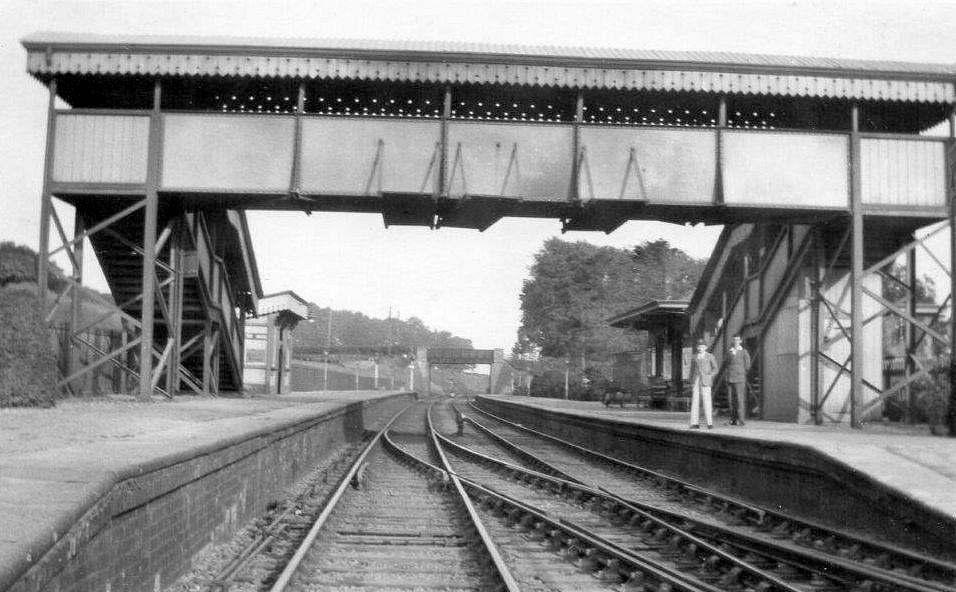
A photo of early 1930's taken from the barrow way at the end of platform and
looking towards Salisbury. The two boys appear in many other local photos
(quite often 3 boys).
The signal box is just behind the photographer and to his left and the goods
shed, which in 2017 is a sales room and warehouse for a Charity, is behind
the photographer and to his right.
Copyright Kevin Regan
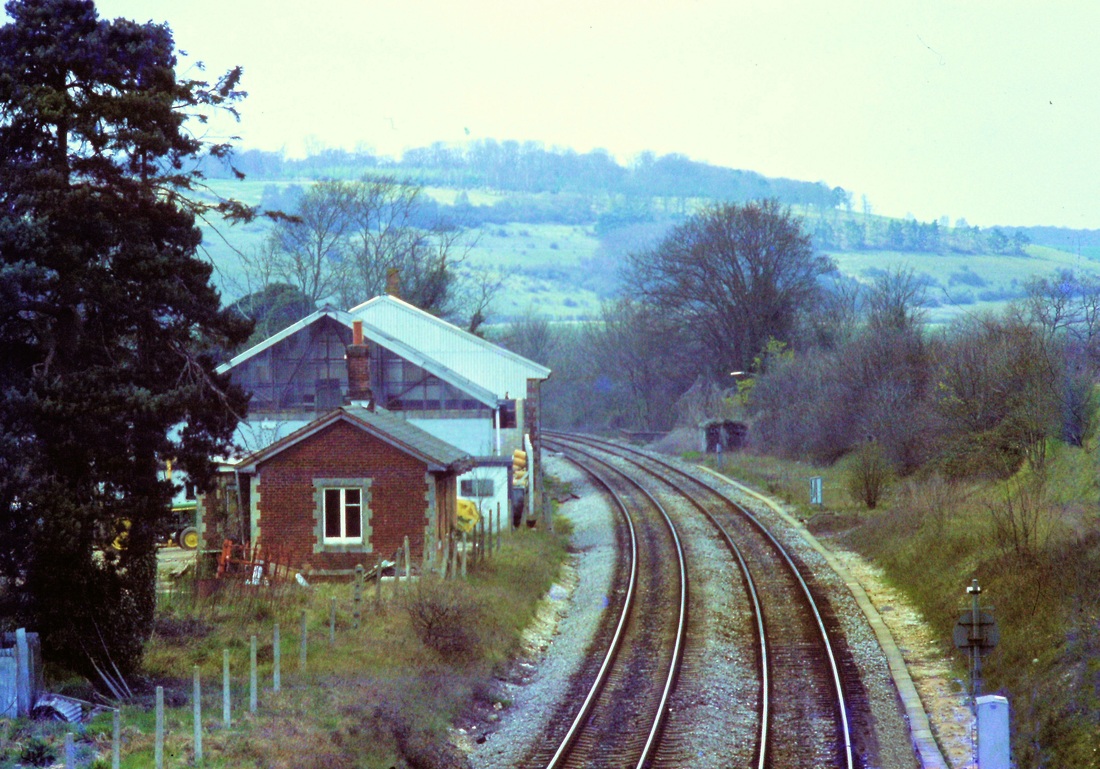
Wilton North, the GW station closed on the 19th September 1955, its neighbour on the Southern, just a quarter of a mile away, closed almost eleven years later on 7th March 1966. The GW station building and goods shed survive - the goods not being withdrawn until 6th September 1965. This view 10th April 1980. Copyright Roger Winnen.
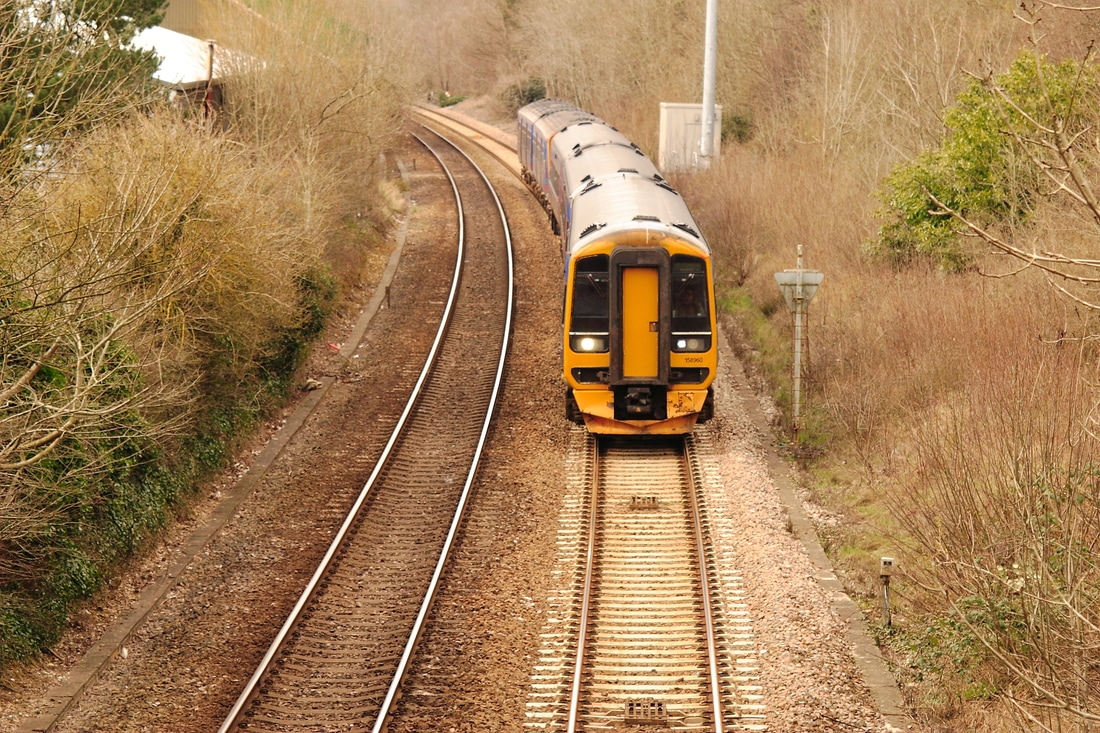
158960 passing the site of the end of the Down Platform of Wilton North (ex
GWR) Station. The building which can just be seen in the trees on the left
is sited just behind what was the Up Platform and the Station Building would
have been just before this building. This photo is taken from Kingsway
Bridge looking North West and towards Westbury. This photo is taken from
almost the same point as Roger Winnens photo of 10th April 1980 (directly
above) Photograph and script by Terry Waldron
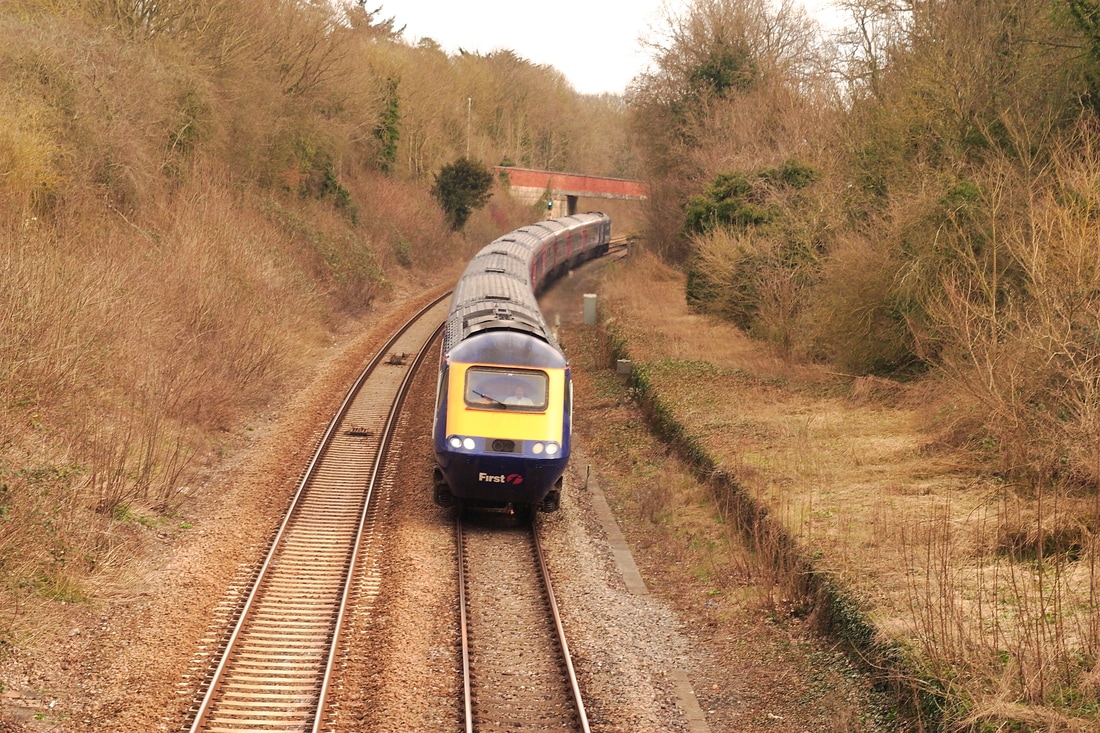
An HST during the period of 29 April to 2 May 2013 when
trains were diverted from Paddington to Plymouth to use Waterloo to Plymouth
via Salisbury and Westbury. This photo is again taken from Kingsway Bridge,
but now looking South East towards Salisbury.
The platform on the right was beside the Up Refuge (see 1925 Map) and used
extensively during the Sheep Fairs (held beside LSWR Station) to
onload/offload Sheep. Adrian Vaughan shows a photo in GWRJ 27, page 180, of
sheep being loaded/unloaded here.
The bridge in the background is on The Avenue and is close to the Salisbury
Park and Ride site at Wilton.
Both sides of the line at this point (between bridges Kingsway and Avenue)
is where the NEW Wilton Parkway Station is proposed (2016/2017) to be built.. Script and photograph courtesy Terry Waldron. Copyright.
The case for reopening Wilton North.
This entry dated April 2017.
This entry dated April 2017.
Consideration is being given to an idea to re-open Wilton North - the old GWR station on the Warminster to Salsibury line. Wilton North and Wilton South lay within yards of each other close to the point where the two companies lines one ran alongside each other towards Salisbury and more recently where the metals from Exeter and Westbury join two form a common line through to Salisbury.
To view this suggestion for the reopening of this station and others at Corsham and Royal Compton Basset as well as the expansion of Chippenham to be a three platform station please click here https://transwilts.org/index.php
To view this suggestion for the reopening of this station and others at Corsham and Royal Compton Basset as well as the expansion of Chippenham to be a three platform station please click here https://transwilts.org/index.php
WILTON JUNCTION
In connection with the Stage 1 S&C renewals the following works and alterations have taken place; 141A points (Down Main) and 142 points (Up Main) at 85m 37ch (BAE2)/132m 33ch (SAL) have been renewed and converted from HW2000 to IBCL Mk2 type Points Operating Equipment (POE). 141B/C (Switch diamonds within junction) have been renewed and converted from HW2000 to RCPL type POE. The existing 40mph Permissible Speed Indicator (PSI) with right (hand) direction arrow on the Down Main line at 85m 37ch has been renewed and moved 9 metres (10 yards) towards London (Salisbury). Ground Frame telephone has been signed out of operational use.
WILTON JUNCTION FROM 0400 HOURS MONDAY 10 MAY 2021
In connection with the Stage 2 S&C renewals the following works and alterations will take place; Wilton Junction mechanical Ground Frame will be signed out of operational use. Ground Frame points 4 (A/B ends) (to/from Goods line to Down Warminster) will be renewed and converted from mechanical to power operated type Points Operating Equipment (POE). `A` end will be IBCL Mk2 type POE and `B` end will be RCPL type POE. New 4A/B points will be signed out of operational use and will be clipped and plugged (C&P) in the `Normal` position and secured by padlocks, until commissioned at future stage works. Ground Frame points 5 (A end) on the Down Warminster line at 132m 25ch will be removed and `Plain lined`. Ground Frame points 5 (B end) on the Up Warminster line at 132m 21ch will be signed out of operational use and will be clipped and plugged (C&P) in the `Normal` position and secured by padlocks. Ground Frame Position Light Signals No.6 (Exit Goods line) and No.7 (Up Warminster line down direction) will be temporarily removed. The existing 5mph Permissible Speed Indicator (PSI) on the Goods line entrance at 132m 29ch will be renewed and moved 20 metres (22 yards) towards country (Warminster) to the approach side of the facing connection on the Down Warminster line.
Hope the latter two entries are not to technical for our readers......
Kind Regards,
Chris Bellett
Retired S&T Engineer
In connection with the Stage 1 S&C renewals the following works and alterations have taken place; 141A points (Down Main) and 142 points (Up Main) at 85m 37ch (BAE2)/132m 33ch (SAL) have been renewed and converted from HW2000 to IBCL Mk2 type Points Operating Equipment (POE). 141B/C (Switch diamonds within junction) have been renewed and converted from HW2000 to RCPL type POE. The existing 40mph Permissible Speed Indicator (PSI) with right (hand) direction arrow on the Down Main line at 85m 37ch has been renewed and moved 9 metres (10 yards) towards London (Salisbury). Ground Frame telephone has been signed out of operational use.
WILTON JUNCTION FROM 0400 HOURS MONDAY 10 MAY 2021
In connection with the Stage 2 S&C renewals the following works and alterations will take place; Wilton Junction mechanical Ground Frame will be signed out of operational use. Ground Frame points 4 (A/B ends) (to/from Goods line to Down Warminster) will be renewed and converted from mechanical to power operated type Points Operating Equipment (POE). `A` end will be IBCL Mk2 type POE and `B` end will be RCPL type POE. New 4A/B points will be signed out of operational use and will be clipped and plugged (C&P) in the `Normal` position and secured by padlocks, until commissioned at future stage works. Ground Frame points 5 (A end) on the Down Warminster line at 132m 25ch will be removed and `Plain lined`. Ground Frame points 5 (B end) on the Up Warminster line at 132m 21ch will be signed out of operational use and will be clipped and plugged (C&P) in the `Normal` position and secured by padlocks. Ground Frame Position Light Signals No.6 (Exit Goods line) and No.7 (Up Warminster line down direction) will be temporarily removed. The existing 5mph Permissible Speed Indicator (PSI) on the Goods line entrance at 132m 29ch will be renewed and moved 20 metres (22 yards) towards country (Warminster) to the approach side of the facing connection on the Down Warminster line.
Hope the latter two entries are not to technical for our readers......
Kind Regards,
Chris Bellett
Retired S&T Engineer
Wilton and the Quidhampton branch
Re the above photographs . Two recent views of Wilton Junction looking towards Warminster / Tisbury. From left to right the lines are Down Exeter, Up Exeter, Up Westbury, Down Westbury and (R) Quidhampton Siding. The Western Region Sectional Appendix likes to be different and refers to the Westbury route lines as Up and Down Salisbury!
History
Wilton Junction (132m33ch GWR / 85m37ch L&SWR ) was created in 1973 when the former GWR route into Salisbury was truncated at Quidhampton chalk pit and to the west of the station. The GWR lines were slewed to join the L&SWR main line thus creating the junction. A spur of the former GWR line remained to serve the pit, this was from a ground frame at 132m 25ch to 132m 54ch with east-facing sidings at the far end. The intermediate or middle section of the GWR route was sold off and redeveloped in the late 1980s to become 'Pullman Drive', a modern housing estate that can be seen from trains on the remaining main line. In 1992-3 the remaining stub at the Salisbury end was reinstated as a headshunt for the new DMU depot that now occupies the site of the GWR station and yard. This line terminates close by a public footpath crossing at the end of Gramshaw Road at 84m22ch.
My understanding is that Quidhampton chalk pit, aka 'Broadlands Quarry' and unused since 2009, is to become a disposal site for spoil from the HS2 construction works. This will be brought in by rail hence the need to refurbish and modernise the points and controls at Wilton Junction. Working Timetable paths have been in place for several years for these workings so it may be that they will soon be fulfilled.
A scheme to build a four-platform 'Wilton Parkway' station north and west of the junction serving both routes has been 'cooking' for several years but no physical work has yet been undertaken. This was recently mentioned in the Salisbury Journal (March 10th 2021).
Excursion into the Quidhampton branch
I well remember my only ever 'excursion' onto the Quidhampton branch which happened on the blustery morning of Saturday January 2nd 1988. High winds overnight brought down a tree between Wilton and Wishford and this was run into by 33017 heading the first northbound working of the day, 2V56 0550 Portsmouth Harbour-Cardiff Central. Passing the site of the incident en-route I arrived at Salisbury at 0926 on the (undelayed) 1O32 0630 Cardiff-Portsmouth and found 33017 with its train had already been brought back to the Station, less than 2 hours after the incident had occurred. The following northbound 2V58 0658 Portsmouth-Cardiff (with loco 33022) was still being held so I boarded and it duly departed at 0934, 65 minutes late. At Wilton Junction the train stopped and, with a handsignalman in place to operate the ground frame and give appropriate orders, 33022 then reversed 2V58 onto the Quidhampton branch,venturing approximately 500 yards before stopping. When authorised by the handsignaller the train then set off 'wrong line' up the 'down Westbury' line as far as Wylye ground frame where under the watchful eye of a further handsignalman the 'up Westbury' line was rejoined. During this part of the journey the site of the fallen tree was noted where clearance work was coming to an end. I recorded an arrival time in Bristol Temple Meads of 11.00am, some 80 minutes late but with the service having run. Would such arrangements be put into place today I ask? I'll leave readers to answer that one!!
History
Wilton Junction (132m33ch GWR / 85m37ch L&SWR ) was created in 1973 when the former GWR route into Salisbury was truncated at Quidhampton chalk pit and to the west of the station. The GWR lines were slewed to join the L&SWR main line thus creating the junction. A spur of the former GWR line remained to serve the pit, this was from a ground frame at 132m 25ch to 132m 54ch with east-facing sidings at the far end. The intermediate or middle section of the GWR route was sold off and redeveloped in the late 1980s to become 'Pullman Drive', a modern housing estate that can be seen from trains on the remaining main line. In 1992-3 the remaining stub at the Salisbury end was reinstated as a headshunt for the new DMU depot that now occupies the site of the GWR station and yard. This line terminates close by a public footpath crossing at the end of Gramshaw Road at 84m22ch.
My understanding is that Quidhampton chalk pit, aka 'Broadlands Quarry' and unused since 2009, is to become a disposal site for spoil from the HS2 construction works. This will be brought in by rail hence the need to refurbish and modernise the points and controls at Wilton Junction. Working Timetable paths have been in place for several years for these workings so it may be that they will soon be fulfilled.
A scheme to build a four-platform 'Wilton Parkway' station north and west of the junction serving both routes has been 'cooking' for several years but no physical work has yet been undertaken. This was recently mentioned in the Salisbury Journal (March 10th 2021).
Excursion into the Quidhampton branch
I well remember my only ever 'excursion' onto the Quidhampton branch which happened on the blustery morning of Saturday January 2nd 1988. High winds overnight brought down a tree between Wilton and Wishford and this was run into by 33017 heading the first northbound working of the day, 2V56 0550 Portsmouth Harbour-Cardiff Central. Passing the site of the incident en-route I arrived at Salisbury at 0926 on the (undelayed) 1O32 0630 Cardiff-Portsmouth and found 33017 with its train had already been brought back to the Station, less than 2 hours after the incident had occurred. The following northbound 2V58 0658 Portsmouth-Cardiff (with loco 33022) was still being held so I boarded and it duly departed at 0934, 65 minutes late. At Wilton Junction the train stopped and, with a handsignalman in place to operate the ground frame and give appropriate orders, 33022 then reversed 2V58 onto the Quidhampton branch,venturing approximately 500 yards before stopping. When authorised by the handsignaller the train then set off 'wrong line' up the 'down Westbury' line as far as Wylye ground frame where under the watchful eye of a further handsignalman the 'up Westbury' line was rejoined. During this part of the journey the site of the fallen tree was noted where clearance work was coming to an end. I recorded an arrival time in Bristol Temple Meads of 11.00am, some 80 minutes late but with the service having run. Would such arrangements be put into place today I ask? I'll leave readers to answer that one!!
Many thanks Guy
Hi Keith,
Latest signalling alterations in our area. Concerning access to and from the Quidhampton Quarry.
Kind Regards,
Chris Bellett
Retire S&T Engineer
……………………………………………………………………………………………
From NR Wessex WON - Week 7/2021
WILTON JUNCTION
FROM 0400 HOURS MONDAY 17 MAY 2021
In connection with the Stage 3 S&C renewals the following works and alterations will take place;
A new power operated Ground Switch Panel (GSP) will be installed and brought into operational use with the associated
signalling equipment to control and facilitate movements to/from the Goods Line.
New Ground Switch Panel (GSP) power operated 5A/B IBCL Mk2 type Points Operating Equipment (POE) will be
installed and brought into operational use on the Up and Down Warminster lines between 132m 21ch and 132m 25ch
approximately 70 metres (76 yards) from the previous GF 5 (A/B ends) positions.
A new 15mph miniature Permissible Speed Indicator (PSI) with a left-(hand) direction arrow will be installed on the Down
Warminster line at the toes of GSP 5A points at 132m 25ch.
A new 15mph miniature Permissible Speed Indicator (PSI) with a left-(hand) direction arrow will be installed on the Up
Warminster line at the toes of GSP 5B points at 132m 21ch.
Ground Switch Panel (GSP) 6 Position Light Signal (PLS) will be re-installed at its previous location at the exit of the
Goods Line.
Ground Switch Panel (GSP) 7 Position Light Signal (PLS) will be re-installed on the Up Warminster line at 132m 26ch
and moved by 101 metres (110 yards) towards country (Warminster) from the previous position.
The existing SY250 Position Light Signal (PLS) (GSP Signal 8) on the Down Warminster line at 132m 28ch will be
moved by 15 metres (16 yards) towards country (Warminster).
Previous Ground Frame points 5 (B end) on the Up Warminster line at 132m 26ch will be removed and `Plain lined`.
The existing illuminated Limit of Shunt (LOS) sign on the Down Warminster (Up direction) at 132m 10ch will be removed
and recovered and replaced with a new LED type LOS signal installed on the Down Warminster (Up direction) at 132m
08ch approximately 34 metres (37 yards) towards country (Warminster) from the previous LOS sign position.
The existing 75mph Permissible Speed Indicator (PSI) on the Up Warminster line at 132m 24ch will be renewed and
moved 141 metres (154 yards) towards country (Warminster).
The existing 40 mph Permanent Speed Advanced Warning Indicator (AWI) situated at 131M 55ch and associated
permanent magnet on the Down Warminster will be moved 503 metres (550 yards) towards country (Warminster).
Latest signalling alterations in our area. Concerning access to and from the Quidhampton Quarry.
Kind Regards,
Chris Bellett
Retire S&T Engineer
……………………………………………………………………………………………
From NR Wessex WON - Week 7/2021
WILTON JUNCTION
FROM 0400 HOURS MONDAY 17 MAY 2021
In connection with the Stage 3 S&C renewals the following works and alterations will take place;
A new power operated Ground Switch Panel (GSP) will be installed and brought into operational use with the associated
signalling equipment to control and facilitate movements to/from the Goods Line.
New Ground Switch Panel (GSP) power operated 5A/B IBCL Mk2 type Points Operating Equipment (POE) will be
installed and brought into operational use on the Up and Down Warminster lines between 132m 21ch and 132m 25ch
approximately 70 metres (76 yards) from the previous GF 5 (A/B ends) positions.
A new 15mph miniature Permissible Speed Indicator (PSI) with a left-(hand) direction arrow will be installed on the Down
Warminster line at the toes of GSP 5A points at 132m 25ch.
A new 15mph miniature Permissible Speed Indicator (PSI) with a left-(hand) direction arrow will be installed on the Up
Warminster line at the toes of GSP 5B points at 132m 21ch.
Ground Switch Panel (GSP) 6 Position Light Signal (PLS) will be re-installed at its previous location at the exit of the
Goods Line.
Ground Switch Panel (GSP) 7 Position Light Signal (PLS) will be re-installed on the Up Warminster line at 132m 26ch
and moved by 101 metres (110 yards) towards country (Warminster) from the previous position.
The existing SY250 Position Light Signal (PLS) (GSP Signal 8) on the Down Warminster line at 132m 28ch will be
moved by 15 metres (16 yards) towards country (Warminster).
Previous Ground Frame points 5 (B end) on the Up Warminster line at 132m 26ch will be removed and `Plain lined`.
The existing illuminated Limit of Shunt (LOS) sign on the Down Warminster (Up direction) at 132m 10ch will be removed
and recovered and replaced with a new LED type LOS signal installed on the Down Warminster (Up direction) at 132m
08ch approximately 34 metres (37 yards) towards country (Warminster) from the previous LOS sign position.
The existing 75mph Permissible Speed Indicator (PSI) on the Up Warminster line at 132m 24ch will be renewed and
moved 141 metres (154 yards) towards country (Warminster).
The existing 40 mph Permanent Speed Advanced Warning Indicator (AWI) situated at 131M 55ch and associated
permanent magnet on the Down Warminster will be moved 503 metres (550 yards) towards country (Warminster).
Many thanks to Chris Bellett for this info.
Quidhampton Quarry
It is owned by Imerys and produced chalk and china clay until its closure in 2009. Wilkipedia
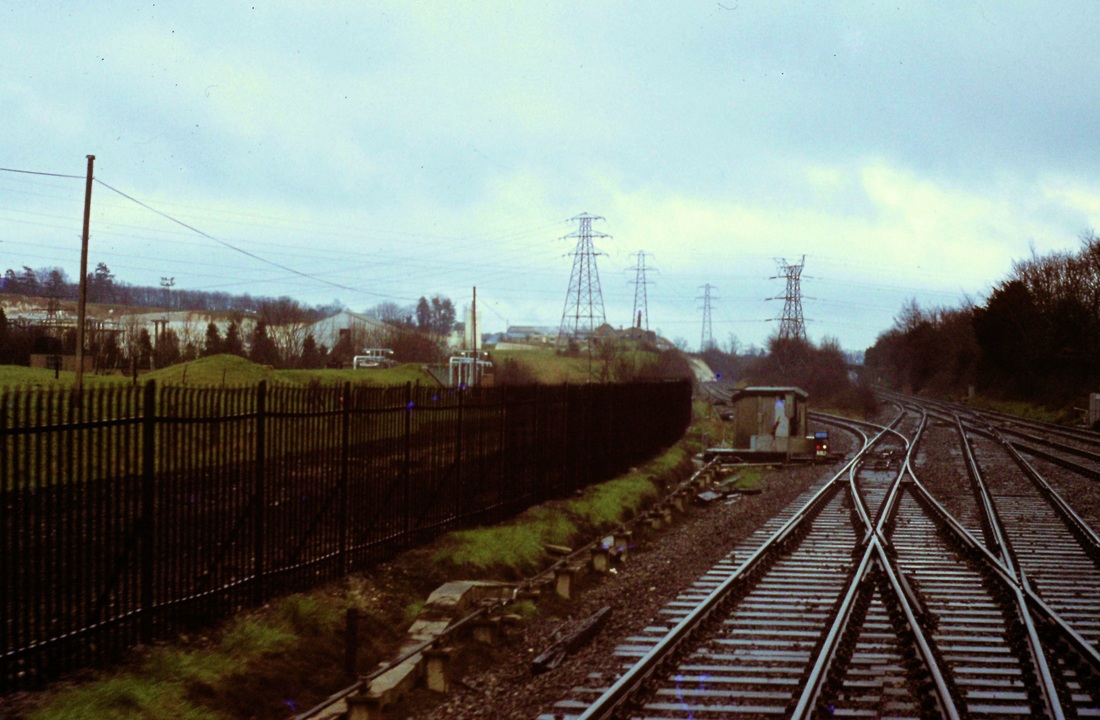
Wilton Junction is the junction between the two main lines, that from Westbury in the foreground merging with the double track line from Yeovil and Exeter which can be seen at the right hand side of the picture. The crossover in the foreground was used for train accessing Quidhampton Quarry which was rail served via a siding off the main line to the left. 31st March 1978 Copyright Roger Winnen
Just a quick update note after seeing the pictures of the ECC/ Imerys quarry at Quidhampton - the quarry is slated for redevelopment as part of a bug housing development to the north of Salisbury. As a result the somewhat rusting line from Wilton Junction has been retained as spoil traffic is expected to commence a some stage to fill the hole in before building commences. The trains were expected to start as far back as 2018 however hurdles have got in the way.
Cheers. James Howitt. Message dated 22nd February Many thanks to James for the update.
Cheers. James Howitt. Message dated 22nd February Many thanks to James for the update.
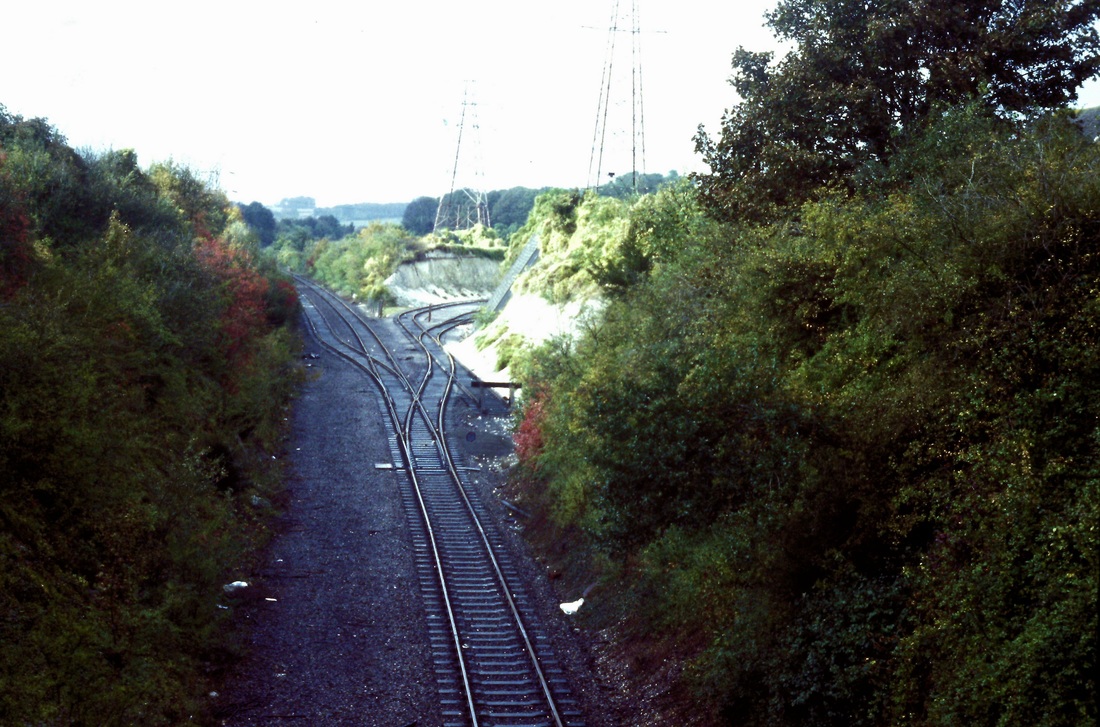
We are looking back towards the connection with the National Network at Wilton Junction. The metals to the right lead into the quarry itself. A run round loop is visible which leads into a single track before the main line connection. This alignment was formerly the double track main line from Westbury leading from Wilton North direct to the GW terminal at Salisbury. This picture taken 31st March 1978. Copyright Roger Winnen.
Salisbury Fifty two and half miles from BTM
Note from Chris Osment ;- The pictures below are of, in, or taken from the ex-GWR ‘C’ box at Salisbury. At the time the signalling controlled from it was being rationalised, with the lever-frame being reduced from 96 to 65 levers, with ‘work in progress’ during my visit, hence both the ‘old’ and (not yet in use) ‘new’ box diagrams on display.
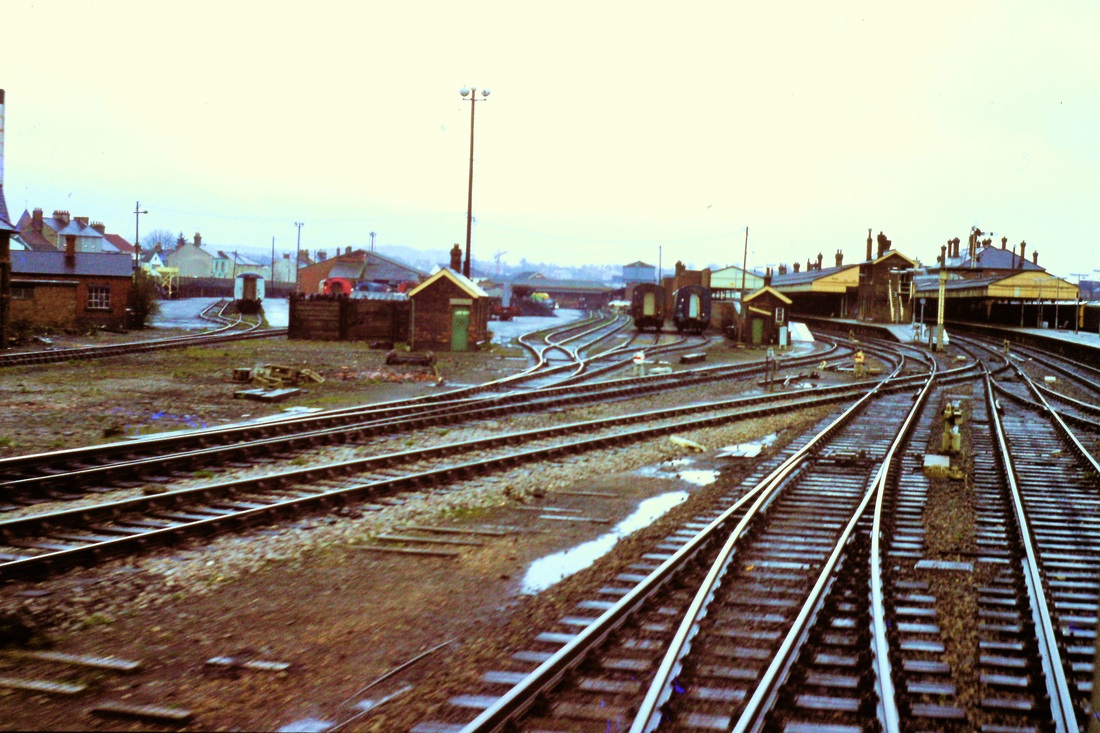
One of Rogers 'out of the back window shots' from a train departing Salisbury on the 31st March 1978. Here one sees the area now occupied by the South West Trains depot. Indeed one can see right up to the GWR terminal buildings. The GWR station closed to passengers on the 12th September 1932. Copyright Roger Winnen
A quick look at Salisbury Station
RHTT AT Salisbury - Guy Vincent
Choosing to support Salisbury traders in the run up to Christmas yesterday (2nd November 2018) I was lucky enough to arrive at the station just before the Rail Head Treatment Train left platform 5 for the journey back to St Blazey. 3J13 0845 Westbury-St Blazey first of all runs across to Salisbury through the scenic Wylye valley before returning to Westbury. Locos were a very dirty 66104 in revised DB livery and a relatively clean 66200 in original EWS colours, this loco having replaced 66067 on 20th. Bay platform 5 is only used by empty DMUs and other non-passenger workings as there is no main aspect signal provided at the far end, only a ground position or 'dummy' signal.
Besides the daily visit of this train the lines between Salisbury and Warminster are cleaned several times each day by one of the Eastleigh-based MPV sets which reverses on the crossover to the south of Warminster station.
Guy Vincent Many thanks Guy for your detailed report and pictures.
Choosing to support Salisbury traders in the run up to Christmas yesterday (2nd November 2018) I was lucky enough to arrive at the station just before the Rail Head Treatment Train left platform 5 for the journey back to St Blazey. 3J13 0845 Westbury-St Blazey first of all runs across to Salisbury through the scenic Wylye valley before returning to Westbury. Locos were a very dirty 66104 in revised DB livery and a relatively clean 66200 in original EWS colours, this loco having replaced 66067 on 20th. Bay platform 5 is only used by empty DMUs and other non-passenger workings as there is no main aspect signal provided at the far end, only a ground position or 'dummy' signal.
Besides the daily visit of this train the lines between Salisbury and Warminster are cleaned several times each day by one of the Eastleigh-based MPV sets which reverses on the crossover to the south of Warminster station.
Guy Vincent Many thanks Guy for your detailed report and pictures.
